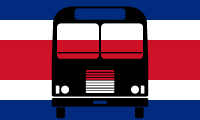
Don't worry and enjoy the view
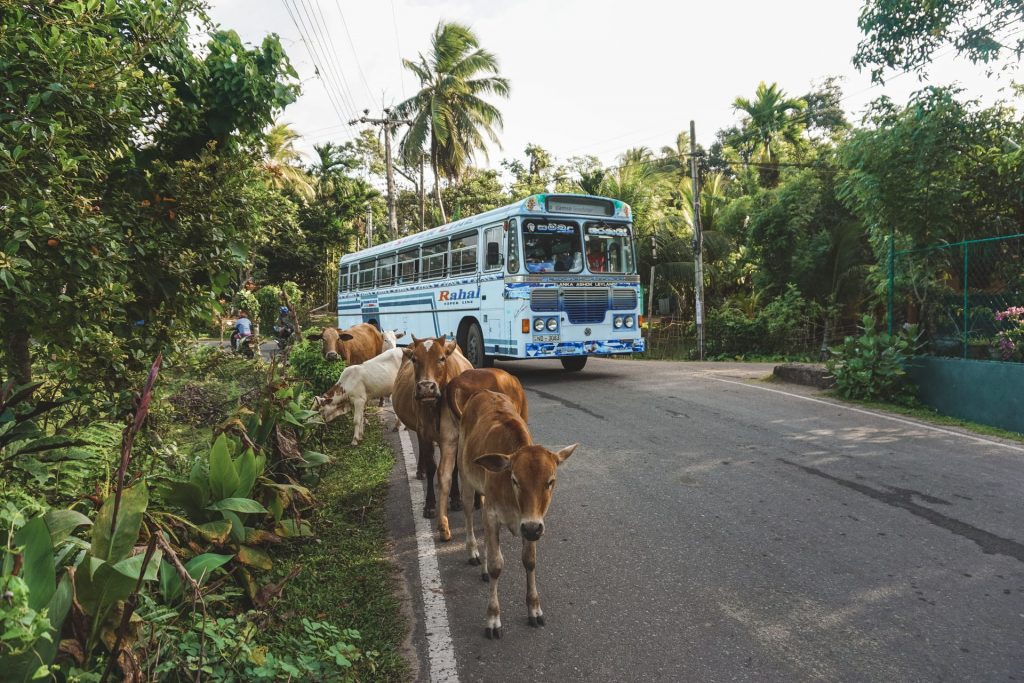

Plan your bus ride in Costa Rica
Find all the information you need to get to your next destination, no more getting stranded, where are you traveling from, nicoya peninsula, central pacific coast, caribbean coast, northern part, corcovado area, southern inland, san jose and around, not finding the route you want.
Work is in progress, so it may be here soon
Do you want to support this project?
If you would like to support this project, you can really make a difference. You can do it simply by using the following PayPal donation button:
Read more about this website and its creator in the about section.
Privacy Overview

- Bus Itinerary
Costa Rica's Bus Itinerary
There are different bus terminals in San José and in the main cities. In some cities you will find local bus terminals. In this document you will find the following information:
- The name of the arrival city.
- The city and the departure terminal.
- The name of the company, address and telephone number of the transportation company.
- Service frequency.
- Departure schedule.
- Return schedule.
- Travel time and distance in kilometers.
- Service rate is not included, you should check with the bus company.
- Itineraries may chance without previous notice.
- Destinations within the cities are not included.
- The ferry or boat schedules, and Central American bus service are included here.
Bus Itinerary (Download)

Planning your Trip to Costa Rica
Suggested itineraries
Accommodations
Restaurants
Other Activities
Local Travel Agencies
Travel Tips
#EssentialCostaRica
Share your experience, .

- All Destinations
- National Parks
- The Pacific
- TRANSPORTATION
- Cost of Living
- Costa Rica Education
- Health Care
- Work in Costa Rica
- Residency Overview
- Restaurants
- 15 Day Weather Forecast
- Weather Regions
- Dry Season vs Wet Season
- Holiday & Festivals
- National Flag
- Customs & Etiquette
Real Estate
- Featured Properties
- Local Real Estate
- Before you buy
- Real Estate FAQs
- Find my Property
- Find my Rental
- Tres Leches
- Rice with Chicken
- Cheese Beans Turnover
- Gallo Pinto
- Costa Rican Food
- Before Doing Business in Costa Rica
- Setting up a Corporation
- Demographics
- Economic Indicators
- Oct. 9-Oct. 9 San Isidro Anniversary
- Oct. 11-Oct. 22 Puerto Viejo Carnival
- Oct. 12-Oct. 12 Virgin of Pilar Day
- Oct. 15-Oct. 18 Upala Corn Festival
Travel Blog
- My First Cup of Coffee
- Top Six Extra Things to Pack on Your Next Trip Abroad
- Ten Things to do on the beach in Manuel Antonio
- Eating Alone in Costa Rica
- Nosara Yoga: Switching the Channel
- Riding a bus to Sierpe in Costa Rica
- High speeds, high waves, high in the air over Manuel Antonio
- In-shore fishing off the coast of Manuel Antonio
- Enjoying Puerto Viejo on $28 a day
- How conservation saved Tortuguero
Living in Costa Rica Blog
- Protecting the kinkajous in Manuel Antonio
- Learning Spanish at Rancho Margot
- Backyard Surf Series on Hermosa Beach
- Life in the Monteverde Countryside
- Border Crossing: Nicaragua by Boat
- The Top 5 Reasons I love living in Tamarindo
- A Look Back: Tamarindo, Six Months Later
- Fruit of the Month: Cas
- E-Voting Info for American Expats
- Naturalized Costa Rican Citizenship by Marriage
- Red Eyed Tree Frogs
- White-faced Monkeys
- Scarlet Macaws
- Leatherback Sea Turtles
Itineraries
- 6 Day Best of Activities
- 10 Day Nature Lovers
- 15 Day Best of Destinations
- 12 Day Honeymoon
- 5 Best Waterfalls
- Spectacular Beaches
- Best of Activities
- Best Kept Secrets
- Best of Destinations
- Sky Trek Canopy Tour
- Celeste River Waterfall
- Superman Canopy Tour
- Tortuguero Canal Tour
- Journey to Cocos Island
Medical Tourism
- Dental Care
- Book a Medical Vacation with Us
- Cosmetic Surgery

Riding the Bus
Costa Rica has one of the best public transportation systems in Latin America, consisting almost exclusively of bus travel. Local city buses will take you almost anywhere within city limits, and intercity buses are inexpensive, comfortable and widely available.
In addition to being a very inexpensive and comfortable way to travel, taking the bus leaves the tricky, potholed driving responsibilities to someone who is much more accustomed to Costa Rica's road conditions. And while the bus driver maneuvers mountain roads and bumper-to-bumper traffic, you can sit back, relax, and enjoy Costa Rica's beautiful scenery.
Riding the City Bus:
Costa Rica's bus system is very similar to that at home: city buses patrol each town, picking riders up at marked stops. However, there are four important facts to know about San Jose and other Costa Rican city buses:
You won't need any bus passes or tokens, they don't exist here. For most city buses, fares range between 140 and 360 CRC ($0.35-$0.70), to be paid in cash. To figure out how much a ride costs, check the bus's front windshield – it should be prominently displayed.
As a general rule, Costa Rican bus drivers will pick you up anywhere, so just stick out your arm and flail wildly when you see your bus.
When you get on the bus, do not stand between the two vertical bars. This cannot be emphasized enough! These bars count passengers, and if the daily count adds up to more than the day's collected fares, drivers pay the difference. They will not hesitate to yell at you in rapid, frustrated Spanish.
To travel between two suburbs or city sections, you'll usually have to head downtown.
Riding the Public Inter-city Bus:
Costa Rica's bus system is government-subsidized, so national travel is very inexpensive. Expect to pay less than $16 to ride anywhere in the country, even to the Panamanian border.
Most buses originate in San Jose, and run throughout the country. Regional buses are also available, with hubs in Liberia (Guanacaste), Alajuela, Cartago, Limon, and Puntarenas. Buses on popular bus routes, like San Jose-Cartago, will often be marked Directo or Colectivo. A Directo bus will go from Point A to Point B with no stops while a Colectivo will stop for anyone along the way. Only take the Colectivo if you don't plan on taking the bus to its end point.
Fares for inter-city buses are generally posted inside each bus, not on the windshield. You can call ahead for bus schedules and fares, either to the origination terminal (like San Jose's Coca-Cola), or to the company in charge of your bus route. San Jose has no central bus station, but generally, buses to the Caribbean depart from the Gran Terminal Caribe (Los Caribenos), and most other buses set off from the Coca-Cola.
Only certain buses allow for advanced ticket purchases or assigned seats. As you board the bus, hand the bus driver your ticket – he will usually give you a stub receipt. On the bus, expect comfortable, reclining cloth seats. There will be no on-board bathroom, but don't worry: Costa Rican buses are notorious for stopping every hour or two for bathroom and food breaks. Don't dally, though; if the bus driver says ten minutes, the bus will be gone on the eleventh, leaving any stragglers behind.
If you're traveling to a location that is not your bus's endpoint, you should always let the driver know. (You may be the only passenger getting off there.) If you're prone to worrying, don't hesitate to ask the bus driver to tell you when to get off. You may be punished with a frustrated sigh or glare, but you'll never miss your stop. When you arrive safely, thank the driver with a friendly "gracias" on your way off the bus.
Riding Private Buses:
Costa Rica also has comfortable and safe shuttle buses. Both Interbus and Gray Line Tours offer routes throughout the country. The companies use modern, air-conditioned buses, focusing on customer satisfaction and comfort. Shuttle companies typically charge between $40-$45 one-way, and will pick you up at your hotel and deliver you to your final destination. Take your surf board for an additional $10.
Best Hotel Deals in Costa Rica!
- Contact Info
- Testimonials & Reviews
- Advertise with Us!
Signup for our newsletter
Stay in touch and get the inside scoop.
- Privacy Policy
- Terms & Conditions
© 1996-2024 costarica.com, Inc. All rights reserved.
Getting around in Costa Rica

Jul 3, 2024 • 6 min read

Travel by bus, boat, car or airplane to see more of Costa Rica's lush landscapes © Jordan Siemens / Getty Images
Costa Rica packs a world of adventure into a relatively small area. Limited infrastructure means that getting around can be a challenge, but it's also one of the reasons that Costa Rica continues to be a wild and wonderful place to explore.
Once you've decided when to go to Costa Rica , you'll need to plan how you're going to get around, carefully considering your budget, your time frame, and your preference for independence. Then, it’s time to embrace the journey and be on your way.

Stretch your budget by taking the bus
You can get (almost) anywhere in Costa Rica by bus, as long as you are not in a hurry. And it doesn’t cost much: fares range from US$2 to $20, depending on the distance. The regional bus network is a great transportation option for budget travelers who have time to spare.
Regional bus lines are run by private companies that often operate out of different bus terminals. That means there’s no centralized source of information, which can be extremely confusing. Useful websites include Visit Costa Rica , The Bus Schedule and Yo Viajo . The schedules change often, though, so the bus terminals are always the most reliable source of scheduling and pricing information.
Tips for taking the bus: When possible, opt for directo over collectivo buses, as the latter stop frequently and take much longer.
Checked bags are generally safe, but keep a close eye on anything you store in the overhead racks, as theft is common.
Ride in comfort on a tourist shuttle
Several companies offer dedicated tourist shuttle services to and from the most popular travel destinations . They’re generally faster and more comfortable, but cost more than regional buses.
Tourist shuttles are also easier to use, as they have fixed schedules, online booking and door-to-door service in many places. The main companies are EasyRide , Interbus , Monkey Ride and Tropical Tours . Fares range from $50 to $120, depending on the distance.

Rent a vehicle for maximum flexibility
There are undeniable drawbacks to renting a vehicle, most notably the expense; but the truth is there are so many places you can’t reach without one. In fact, many of those places require a 4WD vehicle due to poor road conditions and the occasional river crossing. So, if you’re going to spring for a rental, you might as well spring for the 4WD.
Many major international rental companies have outlets near the San José and Liberia airports, but you’ll often get a better rate through a local agency like Solid , Adobe or Vamos Car Rental .
Costa Rican liability insurance is mandatory for all vehicle rentals. This is a legally required addition to your rental policy. Liability insurance only covers damage to other people and their car or property.
Most rental agencies require an insurance package that protects the rental vehicle as well. You may be able to avoid buying this from the rental company if you use a credit card that provides comprehensive insurance, but you will still need to purchase the basic liability package.
FAQs about driving in Costa Rica
Do i need a 4wd vehicle .
Maybe, maybe not. You can get to many places in Costa Rica without a 4WD vehicle. But if you’re renting a vehicle because you want to explore off-the-beaten-track destinations , you’re probably going to want 4WD.
Even if you know you can get to a certain town or a certain hotel, you might not be able to reach that hidden beach or trailhead without the extra oomph of 4WD.

Is driving in Costa Rica dangerous?
Driving in Costa Rica can be unpredictable because of poor road conditions and other hazards.
- Avoid driving at night whenever possible. Driving after dark can be extremely hazardous due to lack of lighting and poor visibility.
- Be aware of poor road conditions, blind curves and minimal shoulders. Also watch for stopped cars, animals and people on the road. Drive defensively and don’t rush.
- On two-lane highways, watch for narrow bridges that accommodate only one car at a time. When you see “ Ceda al paso” on road signs it means you must yield to the oncoming car.
- Always drive at or below the speed limit, even though cars around you will not.
How do I find my way around Costa Rica?
Both Waze and Google Maps provide reliable navigation. However, be sure to download your routes and maps before you set out, because you’re likely to lose your reception in rural or mountainous areas. Alternatively, rent a wi-fi stick with your vehicle to stay connected.

Float on a boat to reach Costa Rica’s most remote places
Some of the most wonderful destinations in Costa Rica are difficult – or even impossible – to reach overland. This might just call for a boat ride, which is a pleasant way to travel thanks to cool breezes, interesting scenery and the occasional wildlife sighting along the way.
You can drive to Península de Nicoya , but if you’re headed to the southern tip, consider taking a ferry from Puntarenas to Playa Naranjo (Coonatramar) or Paquera (Naviera Tambor). There’s also a water shuttle that makes the one-hour trip between Jacó and Montezuma , which is the fastest way to travel to and from this corner of the country.
Boats also make the scenic one-hour journey through the rich wetlands between Sierpe and Bahía Drake. Many area lodges include this transportation in their packages. Otherwise you can take the public boat, which runs twice a day in both directions. On the other side of the peninsula, a ferry travels between Golfito and Puerto Jiménez in about 30 minutes.
On the Caribbean side, if you’re not flying, a boat is required to reach Tortuguero , either 1½ hours from La Pavona (departing throughout the day) or three hours from Moín, near Limón (departing in the mornings only).

Take a domestic flight to cover greater distances
Several domestic airlines including Sansa (the national airline) and Green Airways offer affordable internal flights to popular tourist destinations on small passenger planes. Most of these originate in San José , connecting to destinations such as Bahía Drake, La Fortuna , Liberia , Nosara, Puerto Jiménez, Puerto Limón, Quepos (Manuel Antonio), Tambor and Tortuguero. Internal flights are a practical choice if you want to cover lots of ground when you have limited time. Nevertheless, it's worth considering other transportation options – as well as the environmental cost of flying – before hopping on a plane.
Accessible transportation in Costa Rica
In recent years, Costa Rica has made some major improvements for disabled travelers, especially at national parks and in the hospitality industry. However, travelers with disabilities will still find it challenging to get around.
Il Viaggio is a travel agency that specializes in custom tours for travelers with mobility requirements and other special needs. If you prefer to go it alone, be sure to do your research and keep in mind the following:
- City buses in San José are wheelchair accessible and most taxis can accommodate a folding wheelchair in their trunk.
- Some – but not all – tourist shuttle vans have a wheelchair lift, so inquire about specifics before booking.
- National airline Sansa can accommodate foldable wheelchairs on domestic flights. However, passengers must be able to board and disembark by themselves.
This article was first published Apr 29, 2021 and updated Jul 3, 2024.
Explore related stories
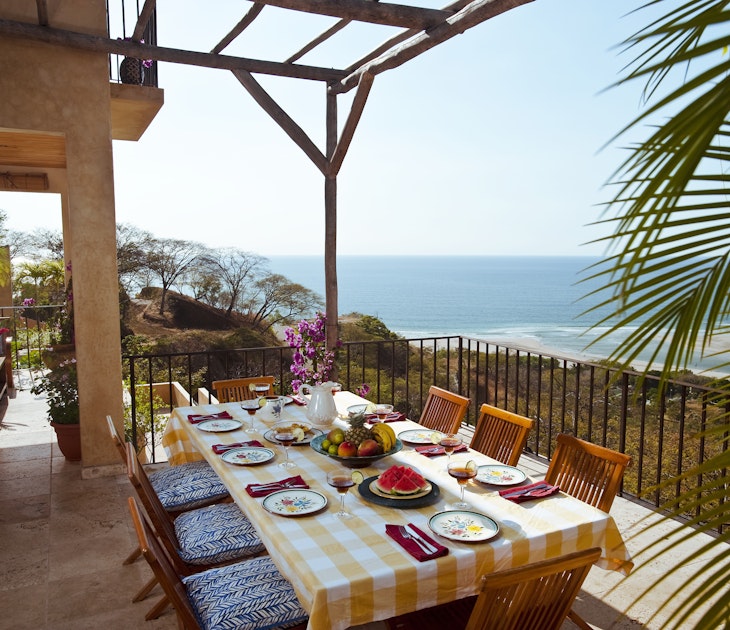
Tips & Advice
Aug 16, 2024 • 5 min read
From the best and bounteous fresh produce to seafood, vegan options, and unique traditional foods we give you the lowdown on what to try in Costa Rica.

Aug 5, 2024 • 6 min read

Aug 5, 2024 • 7 min read

Jul 31, 2024 • 4 min read

Jul 30, 2024 • 8 min read

Jul 11, 2024 • 22 min read

Jul 11, 2024 • 9 min read

Jul 2, 2024 • 5 min read

Jun 26, 2024 • 3 min read

Jun 25, 2024 • 5 min read

Costa Rica’s Public Transportation: A Comprehensive Guide

Exploring Costa Rica can be exciting but also a bit tricky for visitors. But, knowing how to use the public transport system makes it easier and cheaper. This guide will show you the different ways to get around Costa Rica. It will help you plan your trip and enjoy your time in this beautiful country.
Want to travel around Costa Rica without breaking the bank? Learn how to use the country’s efficient and affordable public transport. Get ready for a smooth journey through this amazing Central American nation.
Key Takeaways
- Costa Rica offers a diverse range of public transportation options, including an extensive bus system, scenic train routes, and efficient urban transit.
- Buses in Costa Rica are an affordable and reliable way to travel, with fares typically ranging from $1 to $10 USD for longer distances.
- Understanding the different bus types, routes, and schedules is crucial for navigating the public transportation system effectively.
- Alternative transportation options, such as taxis, ride-sharing services, and private shuttles, can provide flexibility and convenience for certain travel needs.
- Proper planning, including booking tickets in advance during peak seasons, can help ensure a smooth and enjoyable public transportation experience in Costa Rica.
Introduction to Costa Rica’s Public Transportation System
Costa Rica’s public transport is key to its economy and tourism. It offers buses, taxis, ride-sharing, and trains. This makes it easy for locals and tourists to get around. It helps people see the country’s beauty and reach different places affordably and reliably.
The Importance of Public Transportation in Costa Rica
Public transport in Costa Rica is vital for its growth and green goals. It helps with traffic and cuts down on pollution. 48% of people in San José use public transport for over 2 hours a day. This shows how important it is to the locals.
Also, people in San José wait just 16 minutes for a bus on weekdays. This shows how reliable and easy to use the public transport is. The Interurban Train has grown from 1,000 passengers a day in 2005 to over 20,000 in 2015. This shows more people are choosing public transport.
- Costa Rica’s public transport is crucial for its economy and green goals. It offers a cheap and reliable way for everyone to travel.
- The bus network, along with taxis, ride-sharing, and trains, meets the different travel needs of people.
- It helps reduce traffic and pollution, supporting Costa Rica’s aim to be net zero by 2050.
The Costa Rica Bus System: An Affordable and Reliable Option
Costa Rica’s public transport is built around its bus system . It’s known for being both affordable and reliable. Buses cover many routes, linking big cities, towns, and tourist spots. This makes them a great choice for travelers looking to save money.
Advantages of the Costa Rica Bus System
The bus system in Costa Rica has many benefits. For starters, the prices are low, with short trips under $1 and longer ones about $10. There are also discounts for students, seniors, and groups, making it easy for more people to use it. Plus, buses can reach even the most remote areas of the country.
Disadvantages of the Costa Rica Bus System
Even though the bus system is reliable and green, it’s not perfect. Sometimes, you might face delays because of traffic or other issues. It’s smart to plan your trip ahead to avoid these problems. Also, intercity buses might not be as comfy as private options like shuttles or rental cars.
Despite some challenges, the Costa Rica bus system is still a top pick for getting around. It’s affordable and dependable, making it a key part of the country’s public transport.

Alternative Transportation Options in Costa Rica
Costa Rica has more than just buses for getting around. You can find [https://crie.cr/public-transport-costs-costa-rica/taxis] in cities and ride-sharing like Uber and Lyft. These options are easy to use and can save you money.
Taxis in Costa Rica
Taxis are easy to find in big cities and places tourists visit. They offer a quick way to get around for short distances. Prices vary, but you can expect to pay a few hundred to a few thousand colones.
Ride-Sharing Services: Uber and Lyft
Uber and Lyft have become popular in Costa Rica. They are cheaper than taxis and great for longer trips or reaching places buses don’t go. These services are reliable and easy to use.
Private Transportation Services
If you want a private ride, Costa Rica has car rentals, shuttles, and air taxis. These are good for groups or if you need special help getting around. They offer more flexibility and convenience.
Costa Rica has many ways to get around, like taxis, ride-sharing, and private services. Each option offers something different, making it easy to find what you need. You can easily get around the country with these choices.
Exploring Costa Rica by Train and Urban Transportation
Costa Rica’s train network might be small, but it offers a special way to see the country’s beauty. The train ride from San Jose to the Pacific coast is a favorite. It lets passengers enjoy stunning views. Besides trains, cities like San Jose have trams, light rail, and bike paths for getting around. These options are efficient, green, and let you dive into local life.
Scenic Train Routes for Tourists
Costa Rica’s trains let tourists see amazing landscapes up close. The trip from San Jose to Puntarenas is a top choice. It shows off rainforests, hills, and the coast. The slow pace and big windows make it a memorable trip, fitting Costa Rica’s eco-tourism focus.
Trams, Light Rail, and Bike-Friendly Cities
Some cities in Costa Rica use new ways to move people around. San Jose has trams and light rail for easy city travel. Many cities also have bike paths and bike-share programs. These options encourage using bikes, which is good for the planet and people’s health.
Costa Rica offers many ways to get around, like scenic trains, trams, and bike paths. These choices make traveling around the country easy and fun. They also help Costa Rica stay green and protect nature.
Navigating the Costa Rica Bus System
Costa Rica’s bus network makes exploring the country’s diverse landscapes and cities easy. It’s great for both locals and tourists. This guide will help you understand the bus system better, including routes, schedules, and ticket options.
Costa Rica Bus Routes
Costa Rica’s buses cover many destinations, each with its own number or name. For example, the Alajuela to Atenas route has buses every hour from 6:00 to 22:00. The Alajuela to Fraijanes route also offers hourly departures, from 6:00 to 22:10.
Tourists can visit places like Poas Volcano easily, with buses leaving every 30 minutes from Alajuela. They run from 5:00 to 22:00.
Costa Rica Bus Schedules
Knowing the bus schedules helps plan your trip better. The Alajuela to Atenas route has buses every hour, from 5:00 to 22:00. The Alajuela to Juan Santamaria Airport line runs every 30 minutes, from 6:00 to 21:00.
For longer trips, the Canas to Tilaran route has buses at 5:00, 6:00, 9:00, and more throughout the day.
Costa Rica Bus Tickets
You can buy bus tickets on the bus or at bus stations in Costa Rica. City fares are $1 to $3, and longer trips cost $5 to $10. Knowing how to buy tickets makes traveling by bus easy and stress-free.
Understanding Costa Rica’s Public Transportation
Costa Rica’s public transport system makes exploring its diverse landscapes and cities easy. It offers a wide range of options like buses, taxis, ride-sharing, and trains. This makes traveling around the country both convenient and affordable.
The bus is the go-to choice for both locals and tourists. Buses are frequent, running every 15-30 minutes in the Central Valley. Fares for city-to-city trips range from 190 to 600 colones. But, the trip to Jacó can cost about 2,500 colones. Remember, bus times can vary, so plan ahead.
For a more personal touch, shuttle services are available for major routes. These shuttles cost between $40 and $150 per trip. They suit various budgets and preferences.
Taxis and Uber also offer personal transport options. Fares start at about $1.20 in cities, with extra charges for distance. Domestic flights can cost from $50 to $200 or more. This makes them a quick way to cover longer distances.
Costa Rica also has scenic train and boat routes. For example, the train from San Jose to Heredia takes 45 minutes and costs 420 colones. These options are great for reaching remote areas and islands.
Costa Rica’s public transport is generally safe. But, always be cautious and know your surroundings, especially on public buses or in new areas.
Knowing about Costa Rica’s public transport options and costs helps travelers plan better. This way, they can enjoy their time in this beautiful country with ease.

Domestic Flights in Costa Rica
Domestic flights in Costa Rica offer a quick way to cover long distances. Airlines like SANSA and Green Airways link San José with places like Quepos, Tamarindo, Tortuguero, and Arenal. SANSA has been flying since 1978 and uses Cessna 208 Grand Caravan planes for most trips.
Flights within Costa Rica cost between $40 and $180 one way. Some airlines give you a lot of luggage space. Even with changes, like Aerobell Airline stopping service, there are still good deals for travelers.
Private charter flights are also an option for a unique trip. Adventure Air Charters offers prices from $840 to $3,661 to different places.
San José’s Juan Santamaría International Airport (SJO) and Liberia’s Daniel Oduber Quirós International Airport (LIR) are key airports in Costa Rica. SJO is the biggest and busiest, seeing over 5 million passengers in 2022.
Domestic flights are handy, but travelers might also think about using private cars, boats, and shuttles. This depends on what they like and their travel plans.

Renting a Car in Costa Rica
Renting a car in Costa Rica lets you explore at your own pace. It’s wise to pick a 4×4 because many roads are rough, especially in the rainy season. Think about your group size and how much luggage you have to pick the right car.
Choosing the Right Vehicle
The cost to rent a car with insurance in Costa Rica is about $35 a day. You can find 4WD cars for more money. Remember to consider how many people will be with you and how much stuff you have when choosing a car.
Navigation and GPS
Having a GPS or offline maps is key in Costa Rica. Road signs can be hard to see, and driving conditions change a lot from city to countryside. Renting a car in Costa Rica lets you see the country’s varied landscapes easily. But, you need good navigation for a smooth trip.

Whether you decide to rent a car in Costa Rica or choose another way to get around, do your homework and plan well. This way, you’ll enjoy your time in this stunning country.
Private Tourism Shuttles
Private tourism shuttles in Costa Rica offer a comfy and reliable way to travel. You can book these air-conditioned vans or buses ahead of time. They’ll pick you up from your hotel and take you where you want to go. These shuttles are great for group tours, school trips, and anyone who wants a hassle-free ride.
Private shuttles are more than just a ride; they offer luxury. For a small price, you get air conditioning, Wi-Fi, and drivers who speak English. Booking these shuttles means you get a personalized trip plan and door-to-door service. This makes your journey in Costa Rica smooth and easy.
Costa Rica VIP Private Transportation is a top choice for private rides. They have new buses, minibusses, and SUVs, all driven by licensed English-speaking drivers. They’re known for being on time, secure, and discreet, which is why people love them.
Private shuttles are perfect for anyone, whether you’re alone, with friends, or planning an event. They’re great for getting to the airport or going on a guided tour. Booking early, especially when it’s busy, makes sure you have a great trip.

- Private shuttles offer a premium transportation solution with added amenities like air conditioning and Wi-Fi.
- Booking private shuttles provides a tailored itinerary and door-to-door service, ensuring a smooth and efficient journey.
- Costa Rica VIP Private Transportation is a leading provider of private transportation services, offering a fleet of new vehicles and licensed, English-speaking drivers.
- Private shuttles can be customized to meet the needs of solo travelers, groups, or special events, providing a comfortable and reliable way to explore Costa Rica.
Safety and Travel Tips for Using Public Transportation
Exploring Costa Rica’s vibrant spots is easier with the country’s strong public transport. But, to travel safely and smoothly, knowing how to stay safe and follow key travel tips is key.
Always be alert when using public transport in Costa Rica. Watch your stuff closely and don’t show off expensive items. Try to travel with friends or someone you know for more safety.
Knowing the bus times and where they go can make your trip better. It helps you plan and avoid getting lost or missing your stop. Knowing a bit of Spanish, like “¿Cuánto cuesta?” (How much does it cost?) and “¿Dónde está…?” (Where is…?), makes talking to bus drivers easier.
It’s smart to have some local money, with small bills, with you. This makes paying for your ride smoother and avoids any trouble from not having enough change.
- Be aware of your surroundings and keep your belongings secure
- Familiarize yourself with bus schedules and routes before your journey
- Learn basic Spanish phrases to communicate with public transportation providers
- Carry the right local currency, including small bills, for hassle-free fare payments
Follow these tips to move around Costa Rica’s public transport with ease. You’ll have a great time exploring the country’s varied places.

Costa Rica’s public transport is diverse and affordable. It suits both locals and visitors. You can use the bus network or try taxis, ride-sharing, trains, and domestic flights. This lets you pick the best way to see the country’s beauty and cities.
Visitors can explore San José, rainforests, or coastal towns easily. Costa Rica offers many ways to travel sustainably. You can take taxis for convenience, rent a car for flexibility, or ride public buses for a local feel.
Knowing how to use the public transport makes visiting Costa Rica smooth and fun. With many options, travelers can dive into the local culture and nature. They’ll make memories that last a lifetime in this beautiful place.
What are the different modes of public transportation available in Costa Rica?
How reliable and affordable is the costa rica bus system, what are the advantages and disadvantages of using the costa rica bus system, what alternative transportation options are available in costa rica besides the bus system, how can visitors navigate the costa rica bus system effectively, what safety considerations should travelers keep in mind when using public transportation in costa rica, what are the key tips for renting a car in costa rica, how can visitors find and book private tourism shuttles in costa rica, source links.
- https://mytanfeet.com/about-cr/public-transportation-in-costa-rica/
- https://ticotimes.net/2023/02/11/costa-rica-travel-guide-to-taking-public-transportation
- https://www.sensorialsunsets.com/en/public-transportation-in-costa-rica/
- https://www.visitcostarica.com/en/costa-rica/general-information
- https://bluezoneexperiencecr.com/costa-rica-transportation-guanacaste-tamarindo-playa-conchal-playa-flamingo/
- https://gap.cr/costa-rica-public-transport/
- https://www.ticolingo.com/blog/transportation-guide/
- https://costaricatravelblog.com/costa-rica-transportation/
- https://1costarica.com/articles/Costa-Rica-Public-Transportation.html
- https://travelbuddies4life.com/getting-around-costa-rica/
- https://crie.cr/about-transportation-in-costa-rica/
- https://costaricaprivatetransfer.com/travel/transportation-in-costa-rica/
- https://www.govisitcostarica.com/blog/post/get-familiar-with-the-bus-system-in-costa-rica.aspx
- https://costa-rica-guide.com/travel/transportation/bus-schedule/
- https://www.caminotravel.com/how-to-travel-around-in-costa-rica/
- https://www.costa-rica.com/en/getting-around-costa-rica/
- https://www.costaricatesol.com/tefl-costa-rica-blog/transportation-in-costa-rica
- https://costa-rica-guide.com/travel/transportation/air/costa-ricas-domestic-airlines/
- https://costaricaexperts.com/how-to-get-around-costa-rica-cars/
- https://www.copadearbol.com/airports-in-costa-rica/
- https://costa-rica-guide.com/travel/transportation/choosing/
- https://travel-shark.com/renting-a-car-in-costa-rica/
- https://www.puravidatraveling.com/post/how-to-travel-around-costa-rica-with-bus-and-private-or-shared-shuttle
- https://transportationcostarica.com/
- https://www.centralamerica.com/living/daily-life/buses-in-costa-rica/
- https://blog.hoteleus.com/en/costa-rica-public-transportation/
- https://casadecostarica.com/costa-rica-tips-and-tricks/costa_rica_transportation/
- https://itinerarytrip.com/travel-guides/Costa Rica/guide/en/Mastering-Public-Transport-in-Costa-Rica:-A-Traveler’s-Guide
- https://jaco-adventures.com/exploring-paradise-navigating-transportation-in-costa-rica/
- https://jaco-adventures.com/the-ultimate-guide-to-transportation-in-costa-rica-getting-around-paradise/
Article by Glenn Tellier (Founder of CRIE and Grupo Gap)
See If You Qualify For Residency Today!
All buses to and from Costa Rica
Popular bus routes in costa rica.
- Bus La Fortuna to Juan Santamaría - San José Airport
- Bus La Fortuna to Puerto Viejo de Talamanca
- Bus San José to Alajuela
- Bus San José to Jacó
- Bus San José to Juan Santamaría - San José Airport
- Bus San José to La Fortuna
- Bus San José to Liberia
- Bus San José to Limón
- Bus San José to Manuel Antonio
- Bus San José to Tamarindo
Cities with the most connections in Costa Rica
- Manuel Antonio
- Peñas Blancas
- Playa Hermosa
- Playa Montezuma
- Puerto Jiménez
- Puerto Viejo de Talamanca
- Santa Teresa
- Tortuguero Bay

The CheckMyBus App
Free Download
We value your privacy!
- Skip to primary navigation
- Skip to main content
- Skip to primary sidebar
- Skip to footer

Costa Rica Travel Information
How to Get Around Costa Rica: Different Ways, Costs and Efficiency
January 2, 2024 By Sammi 60 Comments
Getting around Costa Rica is a big concern for travelers especially for those who are here for a short period of time and on a budget . In this article I’m going to outline the different ways and their cost and efficiency to help you figure out how to get around Costa Rica for your vacation.
There are affiliate links in this post.
How to Get Around Costa Rica: Driving, the Most Flexible Way
Driving is the best way to get around Costa Rica to explore the country. It gives you the flexibility and freedom that you can’t get with any other method of transportation. Leave when you want, go where you want. Simply stated, having a car is the best way to explore Costa Rica.
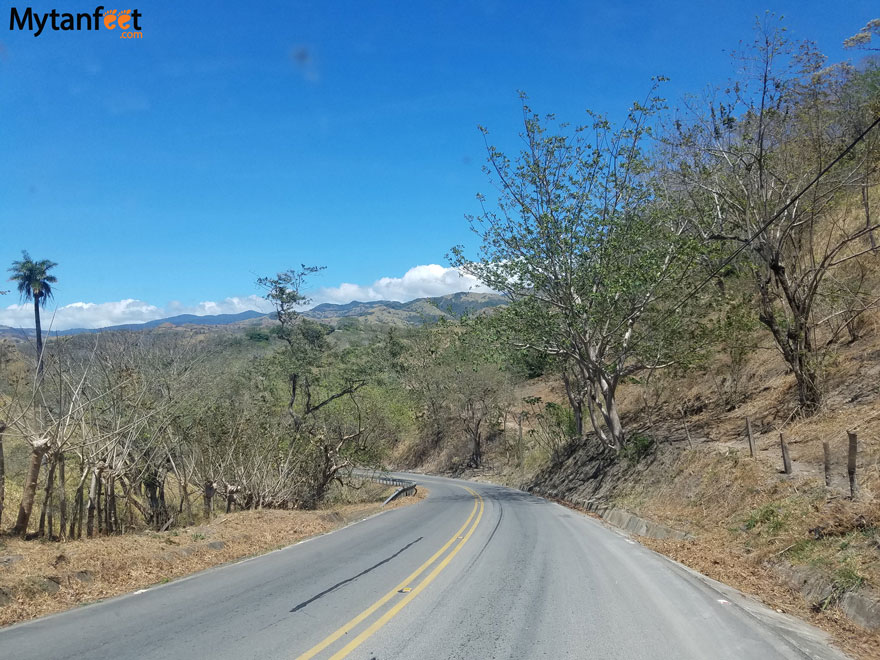
There are tradeoffs to driving however. You have the extra responsibility of driving and car rentals are not very cheap in Costa Rica. If you want to rent a car in Costa Rica, check out our Costa Rica car rental discount to save money on your car rental and get our extra benefits.
For more details, check out our tips for renting a car in Costa Rica post and our tips for driving in Costa Rica post. You will learn all about the costs of rental cars, insurance, type of cars and much more.
Three important things if you are renting a car and driving in Costa Rica
First, check your destinations to see if you require a 4wd/high clearance car or if a 2wd car is fine. The price of renting a sedan or 2wd SUV vs a 4×4 can be fairly drastic. If you do not require a 4wd or high clearance SUV, you can save money on renting a sedan.
The second is to reserve your car rental well in advance if you are visiting during high season, Christmas, New Years or Easter week. This is due to extremely limited availability and high demand.
Thirdly, research what exactly is included in the rate you are getting because some companies do not include all taxes, fees and insurances until you actually pick up the car. This is why you will read some online reviews that a company is a “scam.” This is also one of the main reasons why we partnered with a local car rental company because they offer all inclusive pricing so you know EXACTLY what you are paying for!
Shared and Private Transportation in Costa Rica: Shuttles
Taking a shuttle is an excellent Costa Rica transportation method for those who don’t want to drive. It’s faster than taking the bus, they offer door to door hotel service and you don’t have to stress out about driving in a foreign country.
Here are some things to know about booking a shuttle in Costa Rica. There are two different types of shuttle services in Costa Rica: private and shared. You can read our detailed Costa Rica shuttles post for more information.
Shared Shuttles
Shared shuttles usually have up to 10-15 passengers depending on the company. They have set schedules, usually 1-2 per route (one in the morning, one in the afternoon). Shared shuttles require a minimum number of passengers which may be 2-4 people. This is extremely important to check if you are a solo traveler visiting during low season.
Shared shuttles offer door to door hotel service so no Airbnbs, vacation rentals or normal houses. Hotels outside their routes aren’t included, so they’ll drop you off at the nearest destination and then you will need to figure out how to get to your place of accommodation.
Prices range from $59-78 USD per adult depending on the route. Shared shuttles do not pick up directly from airports, you will need to go to their meeting point which is usually a 5 minute drive away.
Private Shuttles
Private shuttles can pick you up directly at the airport and they can pick up and drop off at vacation rentals.
They include one stop along the way for bathroom, supermarket, bank, view points or food. Then if you want to stop somewhere for a longer visit, this is available for an extra fee.
Private shuttles are for your group only. Rates are for 1-4 passengers or 1-8 passengers depending on the vehicle used.
Read our tips for taking shuttles in Costa Rica and contact us for a private shuttle quote.
Tour Interconnections
Want to know how to make a boring transfer more fun? Take a tour and book an interconnection! Here’s how it works.
You will book a tour like normal. Everything is exactly the same except your pick up and drop off locations. So you get to skip sitting on a bus or shuttle all day and instead, you get to go on a fun adventure.
For example, the Pacuare River 1 day rafting tour offers an interconnection. The tour operator will pick you up in San Jose , La Fortuna or Puerto Viejo and then drop you off after the tour to any of those three locations.
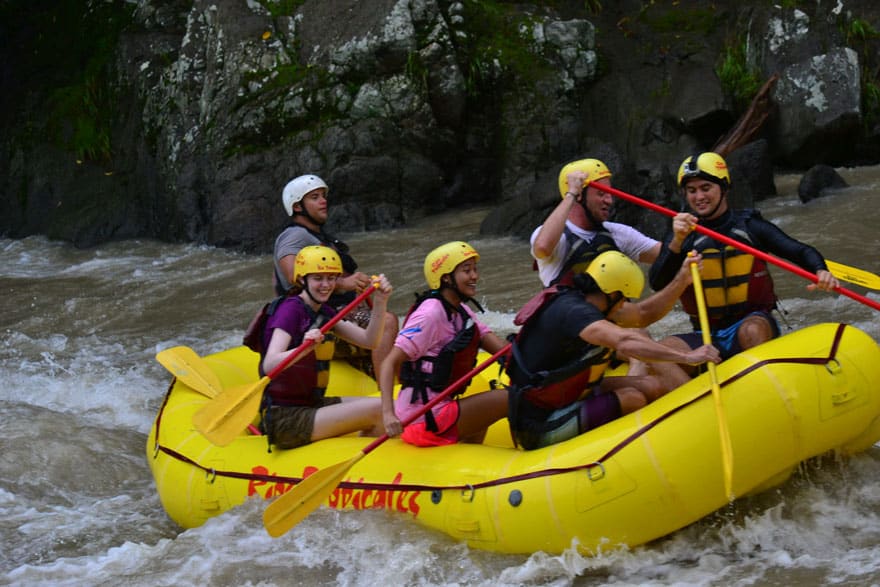
So if you aren’t renting a car, this is a great way to get around. If you are landing in San Jose and your next destination is Puerto Viejo, you can do the rafting as a way to get to Puerto Viejo. Or if you’re in Puerto Viejo and are going to La Fortuna next, you can do this rafting trip for your interconnection. Sooo much better than taking a 6 hour bus ride!
Want to do this 1 day tour and book the interconnection? Get $5 USD off with our Pacuare white water rafting discount.
Related: Read our 13 day Costa Rica itinerary (no car required) that includes the Pacuare white water rafting tour interconnection
Flying around Costa Rica with Local Airlines
Taking a domestic flight is the quickest way to get around Costa Rica. What would take you 4-5 hours driving will take 30 minutes flying!
There are a couple local airlines in Costa Rica. The biggest one is Sansa Air with the most flights. They fly from San Jose International Airport and Liberia International Airport to local airports throughout the country like La Fortuna , Nosara , Quepos, Tortuguero , Golfito, Cobano, Puerto Jimenez, Drake Bay and Tamarindo .
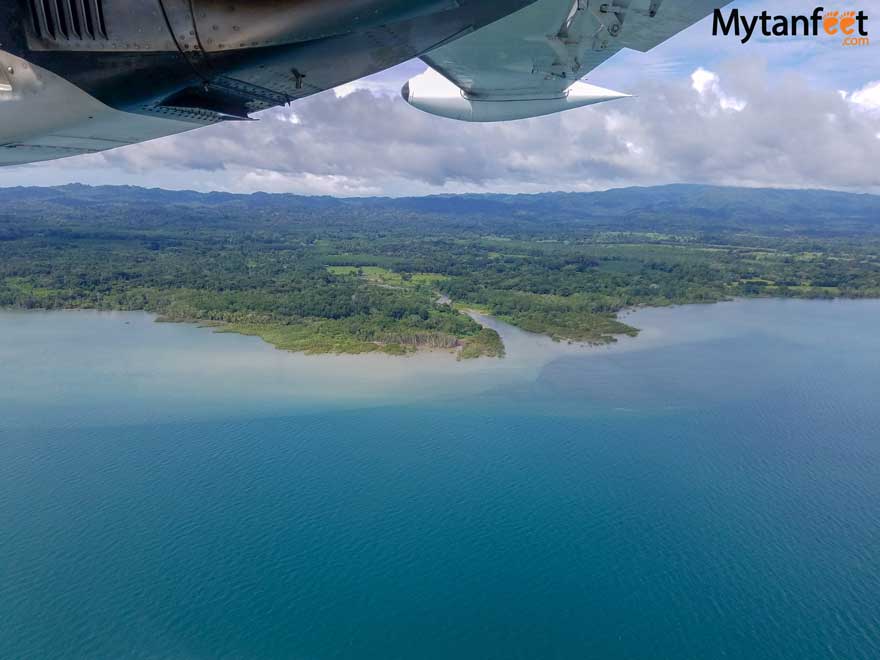
It is important to note that it is much more expensive to fly around Costa Rica. High season (December through April) is more expensive than low season (May through November). The price also depends on your destinations so flights can range anywhere from $50 USD to $300 USD one way per person.
Furthermore, there are limited schedules. There may only be 1-2 flights for your route, no flights for your routes or just 1 in high season. Popular destinations like Golfito, Drake Bay and Tamarindo normally have several flights in high season so make sure to check your schedule. You need to be at the domestic airport 1 hour before your departure time to check in.
Also for domestic flights, they are strict on luggage capacity. They have limited luggage space so you have to pack light. If you go over the weight limit, they will charge you a fee per kilo.
For flying, it really comes down to time vs money . You spend more by flying but you save an incredible amount of time and erase the stresses of driving. What’s even better is that you get amazing views from the plane!
Planning tip: A lot of people will fly to their destinations and then rent a car for the days they are there. This is a great way to avoid the long travel days. However, you will need to pick destinations that have a local airstrip.
Costa Rica Public Transportation
Taking the public bus is the cheapest way to get around Costa Rica. Costa Rica public transportation is actually very good if you’re going to popular tourist destinations and major areas. It’s a great way to save money on your trip to Costa Rica!
From San Jose, there are direct routes to nearly every main tourist destination and town. It’s cheap and a fun way to immerse into local life. You can read our article on taking the bus in Costa Rica for more information.
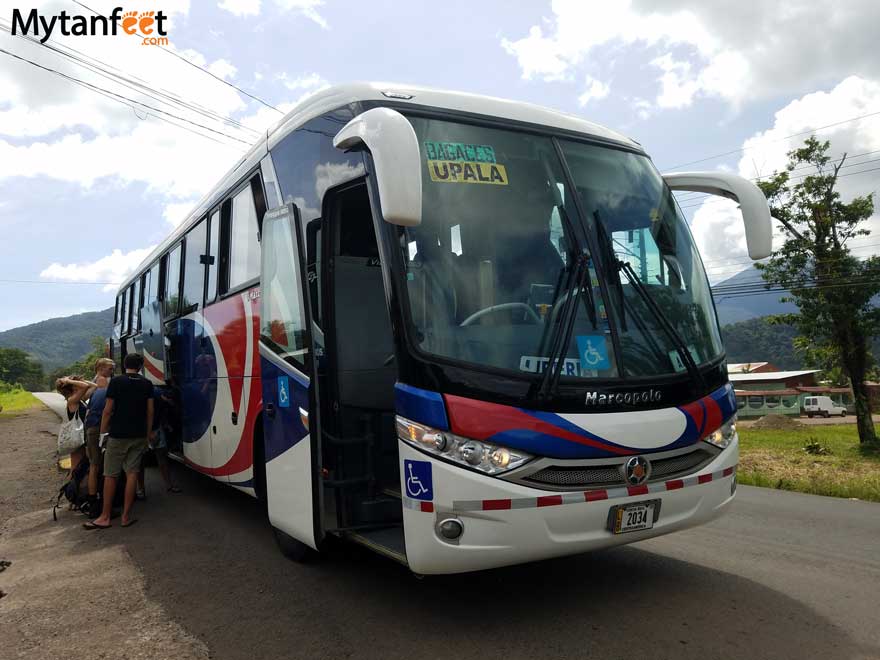
The downside is that the bus takes much longer, especially if you don’t take the “direct” route. We once took the Tamarindo – San Jose bus via Liberia non-direct and it took us 8 hours without traffic since it made a million stops. Another downside is you cannot stop when you need to so you have limited bathroom breaks and food stops (normally only one stop for cross country routes).
Additionally, it can be difficult to get around for many routes. An example is Tamarindo to La Fortuna. This route requires 3 buses and takes around 7 hours (driving is around 4). La Fortuna to Manuel Antonio requires 4 buses, around 9 hours (driving is around 5).
Never assume there are always buses for cross country routes or that they are plenty of routes. If you miss your cross country bus, there is a huge likelihood that the next one is not until the next day.
When You Shouldn’t Take the Public Bus
We don’t recommend taking the bus if you’re with a large family of young kids/babies/seniors with mobility issues, going to more remote/rural destinations or on a short trip.
But if you have the time, are keen on a bit of adventure or are on a budget, the public bus is an excellent option for major destinations. Just make sure to research bus schedules beforehand and plan your travel days accordingly. Always be alert, ask the locals if you’re not sure where to go and always keep your belongings with you at all times.
Taxis are good for short trips like from the supermarket to the hotel, especially if it’s raining, it’s late out or you’re carrying a lot of stuff. However, it’s best to book a shuttle for long trips instead of taxis . Read more tips for taking taxis in Costa Rica.
The most important thing to know is to take an official taxi and not a pirate one. Why? Well pirate taxis don’t have insurance and their cars are usually old and not in good condition. That can cause a lot of problems if you get into an accident or if they get caught by the police.
Instead of taxis, we actually use Uber in Costa Rica.
Uber works in Costa Rica but not everywhere in the country. You can find Uber in the Central Valley cities like San Jose, Heredia, Alajuela and Cartago and there are some in Jaco, Quepos, La Fortuna, Tamarindo and Liberia .
Uber is generally cheaper than taxis and more efficient and faster than buses. Perfect for getting around San Jose or to and from the airport. We even know tourists who used Uber for long ride like San Jose to Jaco/La Fortuna (just remember the driver needs to accept this trip).
Didi, another ride share app is also in San Jose. Lyft is not.
Read our tips to using Uber in Costa Rica .
Ferry or Boat Rides
There are a few ferry routes you can take in Costa Rica.
If you’re planning on going to Montezuma or Santa Teresa from San Jose or Puntarenas, the ferry is a fun option. The ferry takes cars so you can drive from the airport, take the ferry across the Gulf of Nicoya and then drive to your final destination. Check out our tips for taking the Puntarenas Paquera ferry.
These other boats do not take cars, only foot passengers. There is also a taxi-boat-taxi from Arenal to Monteverde (and vice versa) that takes you across Lake Arenal , a boat from Sierpe to Drake Bay, Jaco to Montezuma boat, boat from La Pavona and Moin to Tortuguero and a boat across the Golfo Dulce.
Which Costa Rica Transportation Method is Right For You?
To help answer your question of “How to get around Costa Rica?” you will need to figure out what your priorities are and what you’re willing to spend in terms of both aspects.
Costa Rica transportation methods summary
- Most comfort and flexibility: renting a car.
- On a budget: the bus.
- In between car and bus: shared shuttles.
- For big groups: private shuttles or renting a car.
- With kids: private shuttles or renting a car.
- No tight budget & short trip to main tourist destinations: flying.
- Solo travelers: shared shuttles or bus. Rent a car if not on a budget.
Many people combine transportation methods, you do not have to pick just one. Many people will fly or book a private shuttle to avoid driving the long routes. Here are some examples.
San Jose – Puerto Viejo. This drive can take around 5-6 hours so instead of driving, people will take a private shuttle or the rafting tour from San Jose to Puerto Viejo. Then rent a car for their days in Puerto Viejo.
Drake Bay: A lot of people will rent a car for their whole itinerary but leave Drake Bay as their last destination. They return the car in Sierpe, take the boat to Drake Bay and then fly to San Jose for their departure flight home. Check out our Costa Rica 1 month itinerary that includes Drake Bay!
Quepos – San Jose: Many people fly or take a shuttle/bus to Quepos, rent a car while they’re in Quepos/Manuel Antonio and then fly to San Jose for their departure flight out.
Destinations
If you’re going to major touristic destinations in Costa Rica like La Fortuna, Tamarindo, Puerto Viejo, San Jose, Manuel Antonio, Puerto Jimenez, Samara, Tambor, Santa Teresa, Montezuma, Jaco, and Monteverde, you can get there via car, bus and shuttle. All of them also have their own local airport except Jaco, Samara, Montezuma, Santa Teresa and Monteverde.
For Drake Bay, the best way is to fly or take the boat from Sierpe. The road there is a 4×4 required vehicle only and not really recommended to drive, especially in rainy season.
For Tortuguero, it is boat or plane access only. You can fly directly there or take the boat from La Pavona or Moin dock to Tortuguero. You can read about how to get to Tortuguero here.
If you are going to non-touristy places like Atenas, Grecia , San Ramon, Boca de Tapada, San Isidro de Perez Zeledon, San Vito , San Gerardo de Dota , Santa Cruz, La Cruz , Nicoya or any remote beach, then a car would be the best way. You can also get there via bus but then it will very difficult to get around once you are there.
How to Get Around Articles
We wrote articles on how to get to certain destinations which you can read below.
How to get to Playas del Coco/Gulf of Papagayo from Liberia Airport
How to get to Tamarindo from Liberia Airport
More Costa Rica travel tips below!
Costa Rica apps
Costa Rica maps
Tipping in Costa Rica
Liberia Airport car rentals
Costa Rica Vacation Checklist
- First time to Costa Rica? Read our First Time in Costa Rica guide.
- Click the link to get our detailed Costa Rica Packing List so you know what essential items to bring.
- Check our Costa Rica destinations map and Costa Rica restaurant map
- Do not forget to purchase Travel Insurance for your trip to Costa Rica.
- Stay connected by purchasing a prepaid SIM Card in Costa Rica. Get 10% off your Airalo eSIM package with our promo code “mytanfeet”
- Save money with Mytanfeet Deals for tours and hotels and our Costa Rica Car Rental Discount.
Join our mailing list and get our free Costa Rica eBook!
Exclusive deals
Click here to see more results

FOR YOU, FOR FREE: 17 years' worth of firsthand Costa Rica trip planning and travel advice compiled into hundreds of articles, plus exclusive discounts. Created by a Costa Rican and a four-time published Costa Rica guidebook author. Welcome, amigos, and as we say in Costa Rica, pura vida!
Our 2023 Moon Costa Rica guidebook (third edition)
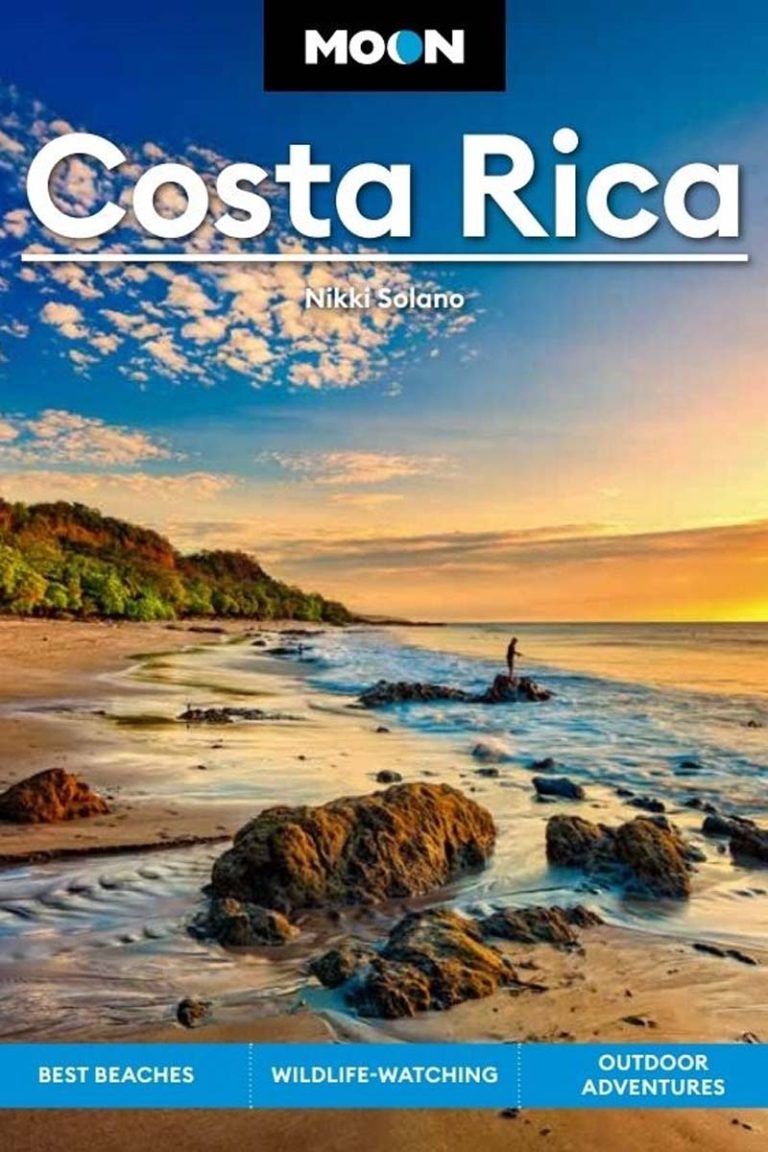
Our 2022 Moon Best of Costa Rica guidebook (first edition)
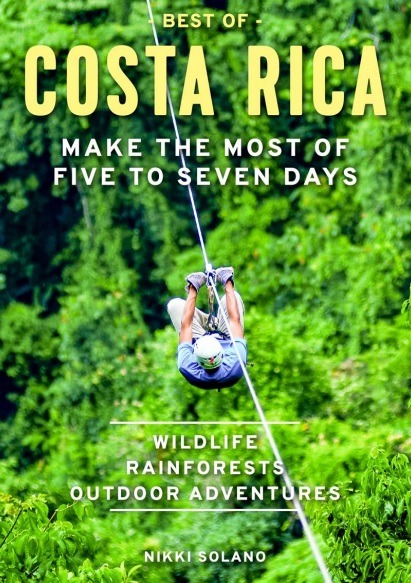
Our 2021 Moon Costa Rica guidebook (second edition)

Our 2019 Moon Costa Rica guidebook (first edition)
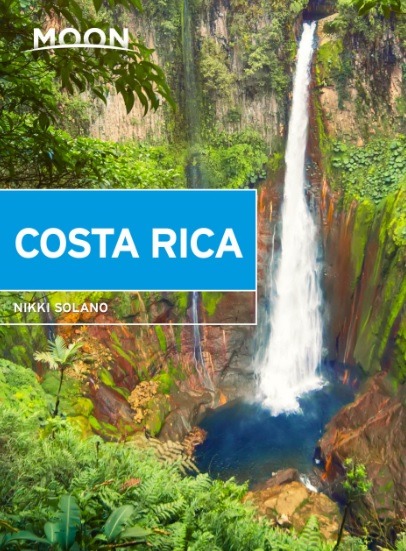
- Moon Travel Guides
- FREE DIY COSTA RICA ACCESS! Details here.
Our company is inclusive. Read our Anti-Hate, Anti-Racism, Anti-Xenophobia, Anti-Inequality, Anti-Discrimination Statement here.
NEW! Our awesome Costa Rica Destination Tool filters 66 destinations by nearly 150 criteria to help you quickly and easily decide where to go in Costa Rica according to your unique preferences, wants, and needs. Learn more and access the tool on our sister site, DIY Costa Rica, here.
Costa Rica Transportation: 15 Ways To Get Around Costa Rica
Home » Transportation In Costa Rica » Costa Rica Transportation: 15 Ways To Get Around Costa Rica

Last updated on July 9th, 2024 at 12:06 pm

Written by Nikki Solano
For you. For free.
Looking for costa rica car rental or shuttle service discounts we’ve got em’ check out our free costa rica discount codes page for details. con mucho gusto (you’re welcome) and pura vida.

Get the Costa Rica info you need by browsing our article's TABLE OF CONTENTS:
How to travel around Costa Rica
Costa rica transportation option #1: shared shuttle services, costa rica transportation option #2: private transfer services, costa rica transportation option #3: car rentals, costa rica transportation option #4: tour transportation services, costa rica transportation option #5: small boats and water taxis, costa rica transportation option #6: ferries, costa rica transportation option #7: domestic flights and charter flights, costa rica transportation option #8: taxis, costa rica transportation option #9: public bus, costa rica transportation option #10: tuk-tuks, costa rica transportation option #11: bikes, costa rica transportation option #12: watersport equipment, costa rica transportation option #13: atvs, costa rica transportation option #14: golf carts, costa rica transportation option #15: walking.
Two of the best things about Costa Rica are its diminutive size and its plethora of attractions , which you’ll find in every corner of the country. Fortunately, this means that no matter where you go in Costa Rica, great experiences are never far away.
To capitalize on its assets, Costa Rica doesn’t just permit cross-region travel, it encourages visitors to hit the road and experience as much as they can , including the country’s unique destinations, varied ecosystems, wild adventures, and diverse cultures. To facilitate this, Costa Rica provides quite a few ways of traveling within the country, and each varies from the next in terms of passenger capacity, scheduled stops, routes covered, luggage options, the transferring of children and pets, price, and scheduling. Be sure to read our guide below to find the Costa Rica transportation options that best suit your budget, preferences, and needs.

Shared shuttle services are one of the most common modes of Costa Rica transportation. They provide transportation in air-conditioned tourist vans that typically seat 8-12 passengers, although larger vehicles that fit up to 30 passengers are sometimes used for popular routes during busy times of the year. As their name suggests, shared shuttles provide a service that you share with other travelers . This means that the ride is not private to your particular travel group.
Here are some other helpful things to know about shared shuttle services in Costa Rica:
- Scheduled stops : Most shared shuttle services provide direct transfers , which means they don’t make impromptu stops along any route. Most shared shuttle services provide a scheduled bathrooms stop , however.
- Costa Rica’s two international airports , the SJO Airport near San Jose and the LIR Airport near Liberia.
- Popular inland destinations , such as La Fortuna / Arenal, Monteverde / Santa Elena, Puerto Viejo de Sarapiqui, and Rincon de la Vieja.
- Popular coastal destinations , including Papagayo, Playas del Coco, Playa Hermosa, Brasilito, Playa Flamingo, Tamarindo, Samara, Tambor, Montezuma, Santa Teresa, Puntarenas, Jaco, Quepos / Manuel Antonio, Dominical, Uvita, Sierpe, Cahuita, and Puerto Viejo de Talamanca.
- Luggage options: On shared shuttle services, carry-on luggage is typically kept with you at your seat. Checked luggage is stored at the back of the vehicle or secured above the vehicle. According to the policies of the shared shuttle service provider you use, there may be a limit to the amount of luggage that you can travel with . Large items, such as surfboards , may not be accepted or may require payment of an additional fee.
- Children and pets: Reduced rates for children are usually offered. Children up to the age of 12 travel with a car seat. If you do not intend to bring a car seat to Costa Rica, one (typically free of charge) can be requested through the shared shuttle service provider. Pets (with the exception of guide dogs) are not permitted in shared shuttle service vehicles.
- Price: Shared shuttle services are reasonably priced . Exact prices vary by route but generally fall in the range of $40-60 USD per adult. (Shared shuttle services to far-flung destinations can run closer to $90 USD per adult). The price of a shared shuttle service is for a one-way transfer.
- Scheduling: Shared shuttle services have predetermined, nonnegotiable departure times . Depending on the popularity of the service route, one or two departure times may be offered per day (typically one in the morning and sometimes another in the afternoon).
Planning on using shared shuttle services throughout your trip? Don’t miss our free discount code that can help you save 20% off shared shuttle services provided by Interbus: Click here to access our free Costa Rica discount codes
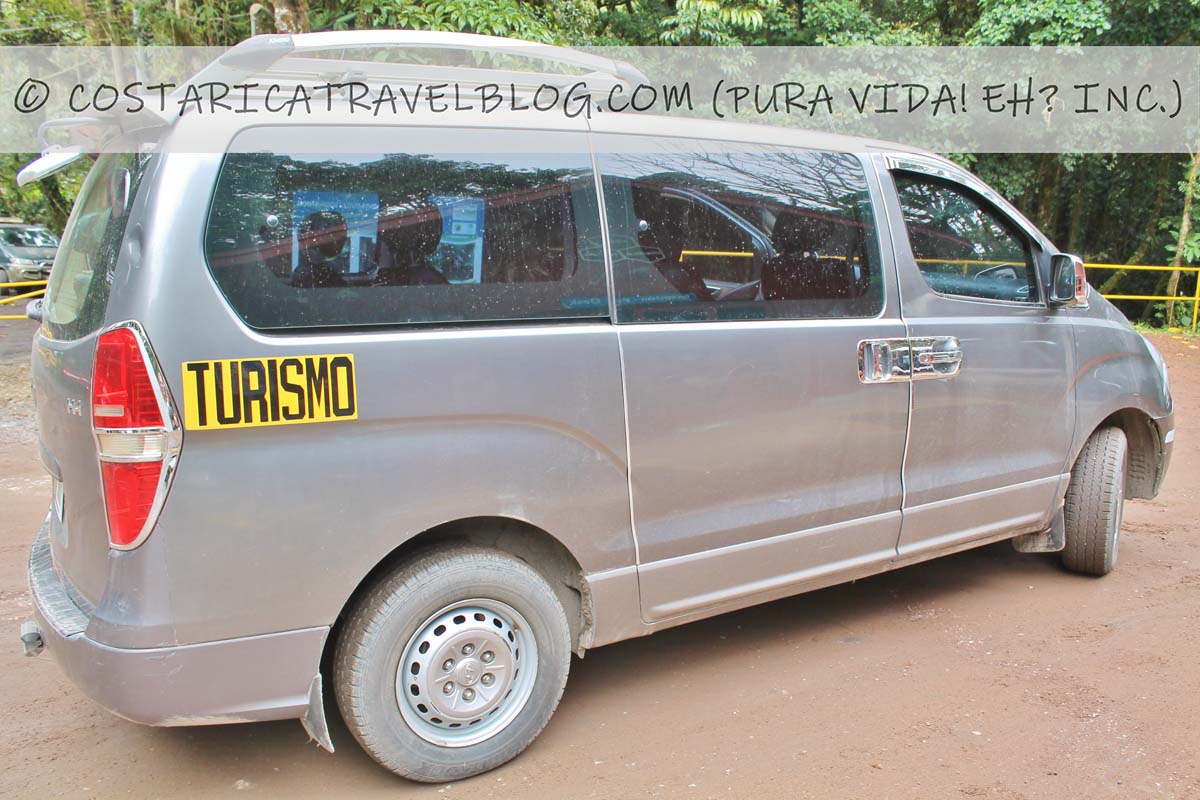
Private transfer services are a popular method of Costa Rica transportation used by travel groups, normally groups consisting of four or more people . They offer transportation in air-conditioned tourist vans that typically seats 8-12 passengers, although larger vehicles that fit up to 30 passengers are sometimes used for larger travel groups. As their name suggests, private transfer services provide a service that is private to your travel group . (In other words, the service is not shared with other travelers , such as strangers.)
Here are some other helpful things to know about private transfer services in Costa Rica:
- Scheduled stops: Private transfer services provide direct services. However, you’re welcome to request stops along a route. Note that some private transfer service providers limit the amount of complimentary stop time per route to one hour and charge a fee for additional stop time. Stop time can be used for impromptu bathroom breaks, restaurant visits, to take photos, etc.
- Routes: Private transfer services travel to almost every Costa Rica destination that’s reachable by van. This is one of their best selling points; not only do they travel to popular destinations, but also they provide a way of reaching destinations that aren’t serviced by shared shuttle services . (See the “shared shuttle services” section above for a non-exhaustive list of places where shared shuttle services travel. If your chosen destinations don’t appear on that list, you can still get to them by using a private transfer service.)
- Luggage options: Since private transfer services provide the luxury of having a van all to yourself, you can place your luggage wherever you want . Store it at the back of the vehicle or secure it above the vehicle if you wish, or keep it with you at your seat. According to the policies of the private transfer service provider you use, there may be a limit to the amount of luggage you can bring on board . Traveling with large items, such as surfboards, doesn’t normally require payment of an additional fee.
- Children and pets: Children up to the age of 12 travel with a car seat. If you do not intend to bring a car seat to Costa Rica, one (typically free of charge) can be requested through the private transfer service provider. Pets (with the exception of guide dogs) are generally not permitted in private transfer service vehicles.
- Price: Private transfer services are priced per group, not per person. Exact prices vary by route but generally fall in the range of $100-400 USD. The cost of the service is shared among van occupants, so depending on the number of people in your travel group, private transfer services may or may not be the most cost-effective Costa Rica transportation option. Unless you’ve arranged otherwise through the private transfer service provider, the price of a private transfer service is for a one-way transfer.
- Scheduling: Private transfer services do not have predetermined departure times . Departure times are negotiable ; you’re free to select your own. Note that some private transfer service providers can offer service at any time of day whereas others limit possible departure times to their operating hours , such as between the hours of 6:00am and 7:00pm, for example. If you need to arrange Costa Rica transportation according to a set or irregular schedule, private transfer services offer the most flexibility.
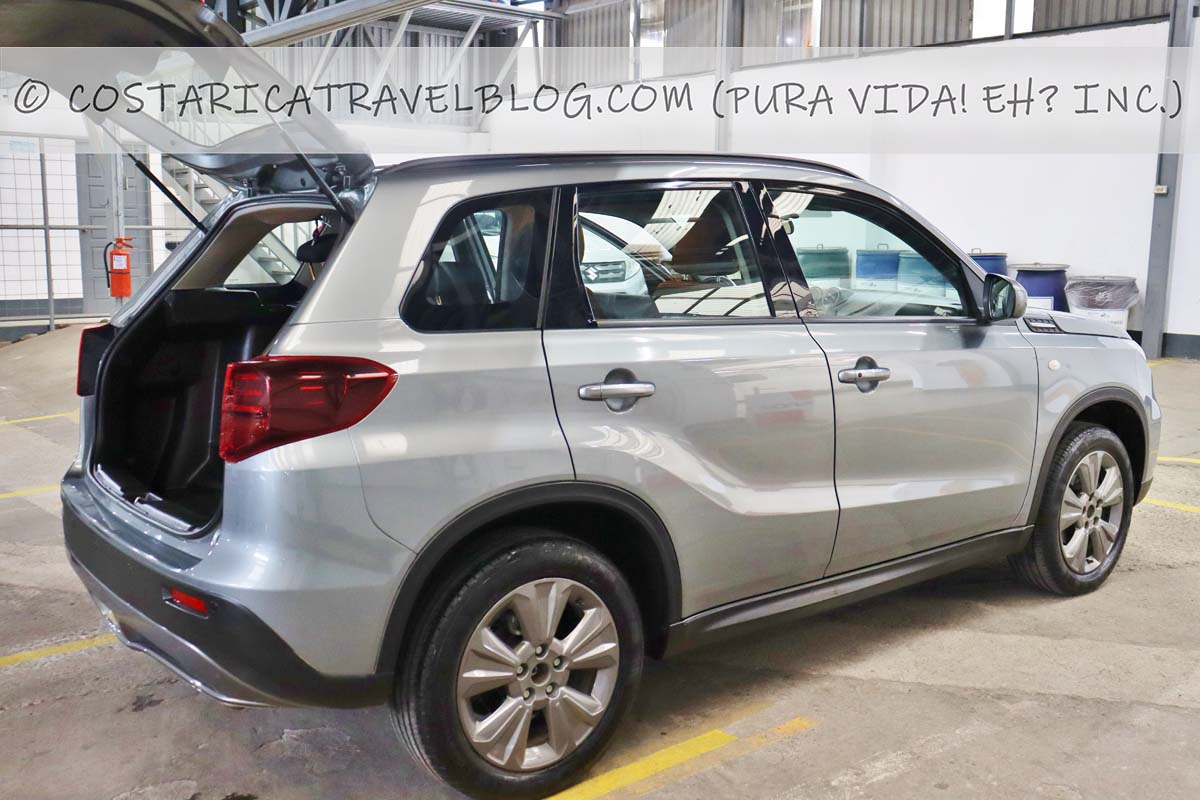
Rental cars provide freedom, flexibility, and an opportunity to discover parts of Costa Rica that aren’t typically seen on routes serviced by shared shuttle services and private transfer services , among other modes of transportation. If you feel comfortable driving abroad, you’re familiar with Costa Rica’s roads and driving laws, you have access to a GPS or map system for navigational support, and you have a bold sense of adventure, driving yourself in a rental car is a fantastic way to get from point A to point B and beyond.
You can rent a small, midsize, or intermediate-size 4×4 SUV, or a van, truck, or non-4×4 sedan, in Costa Rica . Both manual transmission and automatic transmission vehicles are available.
Here are some other helpful things to know about rental cars in Costa Rica:
- Scheduled stops and routes: No other form of Costa Rica transportation provides the same level of freedom as a rental car. With one, you can make stops along driving routes wherever and whenever you wish , and you can travel to every destination that’s reachable by car , provided you aren’t put off by navigating Costa Rica’s sometimes arduous back roads. If you’d prefer to stick to well-maintained roads, it’s possible to travel across Costa Rica, from the northwest corner at Nicaragua to the southeast corner at Panama, as well as from the Caribbean Sea on the north side of the country to the Pacific Ocean on the south side of the country, on fast-paced, paved highways . No uncomfortable back road travel required.
- Luggage options: The size of vehicle you rent and the number of people in your travel group will determine where luggage will be stored. If there’s room in the vehicle, luggage can be stored in the back seat . If not, it will need to go in the trunk or a rooftop carrier, otherwise known as a canasta .
- Children and pets: Children up to the age of 12 travel with a car seat . If you do not intend to bring a car seat to Costa Rica, one can be rented through the car rental agency. Pets (with the exception of guide dogs) are usually not permitted in rental cars.
- Price: Car rentals are priced per day or per week, depending on the duration of the rental period. Rates are usually calculated on a 24-hour basis, with the clock starting from the moment you pick up the car . Some car rental agencies provide a grace period (typically one hour) within which you’re permitted to return the car after the scheduled return time without being charged for an additional rental day. Exact prices vary according to several factors , including the vehicle’s size, model, and transmission type, your chosen pick-up and return locations and times, the amount of insurance you wish to purchase, and your interest in optional add-ons. The cost of the service is shared among car occupants, so depending on the number of people in your travel group, renting a car may or may not be the most cost-effective Costa Rica transportation option.
- Scheduling: Having a rental car is ideal if you want to explore Costa Rica at your own pace and according to your own schedule . Within the regular operating hours of your preferred car rental agency, you can choose your desired car pick-up and return times, as well as the total number of days you’d like to have the vehicle . Other decisions you can make for yourself include the time of day you’d like to hit the road, the roads you’d like to travel, and the pace at which you travel.
Planning to rent a car in Costa Rica? Don’t miss our related blog posts: Renting A Car In Costa Rica: Should You Do It? How Not To Fall For Costa Rica Car Rental Scams Costa Rica Car Rental Insurance This Is The Costa Rica Car Rental Agency We Rent Cars Through
Planning on renting a car for your trip? Don’t miss our free discount code that can help you save 25-50% off Costa Rica car rentals: Click here to access our free Costa Rica discount codes
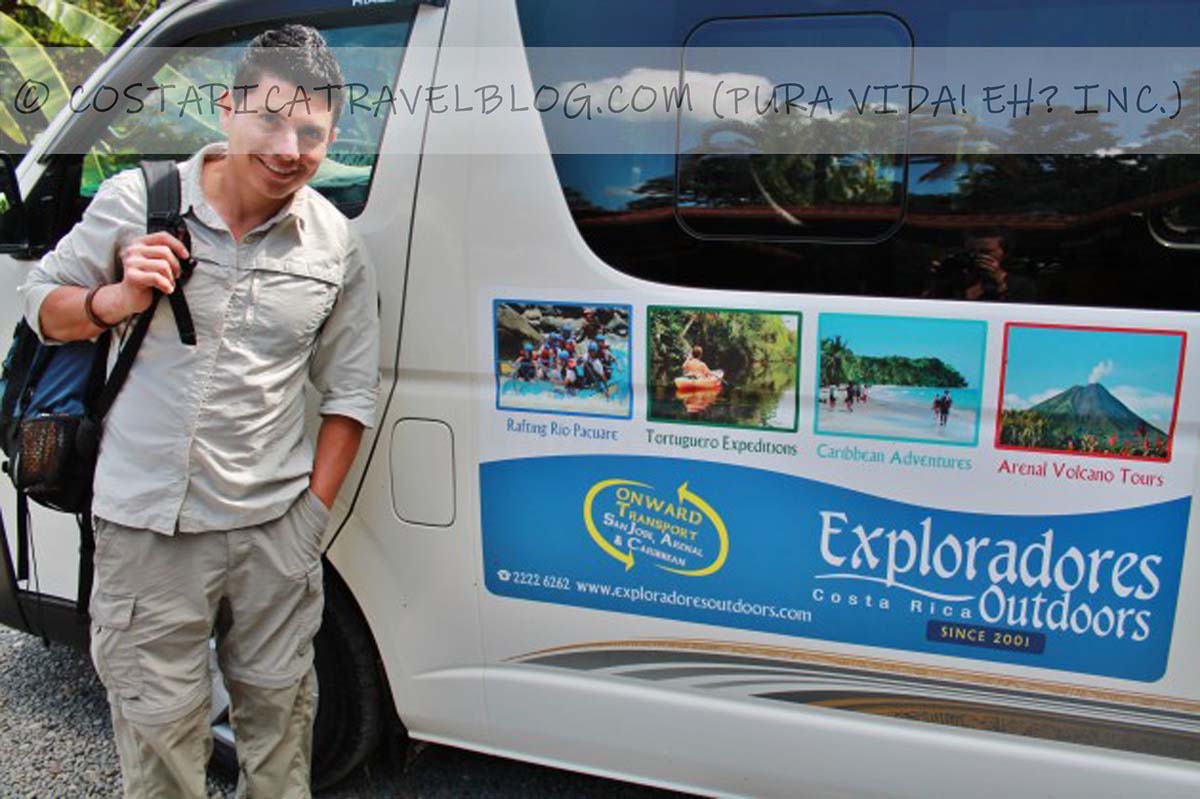
Tour transportation services (sometimes called city-to-city transportation-inclusive tours, adventure connections, or onward transport) are one of our favorite ways to get around Costa Rica. They’re much like shared shuttle services in that they are provided in an air-conditioned tourist van that is shared with other travelers. Unique to tour transportation, though, is the ability to participate in a guided activity partway through the service route, making tour transportation services a combined tour and transport experience.
Here are some other helpful things to know about tour transportation services in Costa Rica:
- Scheduled stops: Tour transportation services make at least one scheduled stop per route, to allow passengers to participate in a guided tour, such as a white-water rafting tour. The scheduled stop is the essence of tour transportation; without it, the service would be a shared shuttle service. The scheduled stop, which usually lasts for at least a few hours while a guided activity is experienced, is also a great way to break up long travel days . The following list is non-exhaustive, but it provides an idea of the types of activities that can be experienced in conjunction with tour transportation services: white-water rafting tours, safari float tours, national park tours, canyoning tours, waterfall jumping tours, zip-lining tours, Tortuguero tours, and crocodile tours.
- Costa Rica’s international airports , located near San Jose and Liberia.
- Popular inland destinations , such as La Fortuna / Arenal, Monteverde / Santa Elena, and Puerto Viejo de Sarapiqui.
- Popular coastal destinations, including Papagayo, Playas del Coco, Playa Hermosa, Brasilito / Conchal, Playa Flamingo, Tamarindo, Samara, Puntarenas, Jaco, Quepos / Manuel Antonio, Cahuita, and Puerto Viejo de Talamanca.
- Luggage options: With tour transportation, carry-on luggage is typically kept with you at your seat. Checked luggage is stored at the back of the vehicle or secured above the vehicle. According to the policies of the tour operator providing the tour transportation service, there may be a limit to the amount of luggage that you can travel with . Large items, such as surfboards , may not be accepted or may require payment of an additional fee.
- Children and pets: Some tour operators offer reduced tour rates to children , which translate to lower costs for tour transportation services. Children who are transported in tourism vehicles are not required to use a car seat . Pets, with the exception of guide dogs, are not generally permitted in vehicles used to carry out tour transportation services.
- Price: Tour transportation services are reasonably priced , when you consider that the cost of the transportation service is combined with the cost of the guided activity experienced along the transportation service route. In other words, for the price of the service, you get to experience a guided tour AND travel (one-way) between two destinations . Exact prices vary by tour and route but generally fall in the $50-150 USD per adult.
- Scheduling: Tour transportation services have predetermined, nonnegotiable departure times because they run according to set guided tour schedules. Most often, only one departure time is offered each day , typically in the morning. Tour transportation services are a time-efficient way to travel because they permit traveling between destinations and experiencing activities at the same time. They can also be a cost-efficient way to travel, when the combined price of the transportation service and the guided tour proves to be less expensive than the cost of those items when booked separately.
Did you know you can use day tours to save time and money while traveling around Costa Rica? Learn how by reading our related blog post: Costa Rica Tour Transportation: How To Use Tours To Travel Between Destinations

Boat transportation, sometimes called a water taxi service, is a common way of moving between coastal destinations . Boats vary according to their model, structure, size, and passenger capacity. In addition, some boats are slow-moving, have a roof to protect passengers from the elements, and provide leisurely trips across lakes and bays while others are roofless speedboats that zip across gulfs and the open ocean. Most boats seat 8-24 people. Unless you hire a boat charter, boat transportation and water taxi services are shared with other travelers ; the rides are not private to your particular travel group.
Here are some other helpful things to know about small boat services and water taxi services in Costa Rica:
- Scheduled stops: Most boat and water taxi services provide direct transfers, which means they don’t make stops along the way.
- The van-boat-van service, also known as the jeep-boat-jeep service or the taxi-boat-taxi service, is a combined ground-and-boat transportation service that connects La Fortuna and Monteverde , which sit on opposite sides of Lake Arenal. You can learn more about the van-boat-van service by reading our related blog post: Best Ways To Travel From La Fortuna To Monteverde (Or Vice Versa).
- Boat services connect northern Pacific coast destinations , including Papagayo, Playas del Coco, Playa Hermosa, Tamarindo, and Playa Grande
- Boat services connect Nicoya Peninsula destinations , including Montezuma, Santa Teresa, and Malpais
- Boat services connect central Pacific coast destinations , including Herradura and Jaco
- Boat services connect Osa Peninsula and Golfo Dulce destinations , including Sierpe, Drake Bay, Puerto Jimenez, Golfito, and Zancudo.
- Boat services connect Caribbean coast destinations , including Tortuguero, Limon, and Puerto Viejo de Talamanca
- Luggage options: Most boats have enclosed compartments (usually at the front of the boat) where luggage is stored during travel. Luggage policies vary across boat transfer service providers , but you’re typically allowed to bring one suitcase/large backpack and one small bag on board. For routes that cross lakes, bays, gulfs, and/or oceans, a good rule to follow is to keep the suitcase or large backpack weighing less than 50lbs. For routes that cross canals (travel to and from Tortuguero, for example), it’s best to keep your luggage weighing less than 25lbs. Excess baggage isn’t always permitted on boat transportation services, but when it is, baggage fees (budget $10-15 USD per piece) may apply. Have the boat transportation service provider confirm whether large items, such as surfboards and bikes, can be transported, and if so, at what cost.
- Children and pets: Reduced rates for children are usually offered. With prior approval, some boat transportation service providers may allow pets to be transported if they’re stored in a crate or carrier.
- Price: Boat transportation services are reasonably priced . Exact prices vary by route but generally fall in the range of $25-55 USD per adult. The price of boat transportation is for a one-way transfer.
- Scheduling: Boat transportation services have predetermined, nonnegotiable departure times . Depending on the popularity of the service route, one or more departure times may be offered per day .

Costa Rica doesn’t operate a ton of ferry services, but the few that are offered (by Coonatramar and Naviera Tambor ) serve a helpful purpose: they provide a way of crossing the wide Nicoya Gulf, helping to ease travel to destinations on the Nicoya Peninsula from destinations in most other parts of Costa Rica, except for the northern Pacific region (i.e., Guanacaste) . The ferries depart from the city of Puntarenas (in the central Pacific region) and travel to the local, non-touristy communities of Paquera and Playa Naranjo on the Nicoya Peninsula. (From Paquera and Playa Naranjo, ground transportation is required to reach popular destinations on the Nicoya Peninsula, including Montezuma, Santa Teresa, and Malpais.) Ferries vary in structure, size, and passenger capacity, but they’re large enough to carry many travelers and vehicles (rental cars are permitted) , and they’re always shared with other travelers.
Here are some other helpful things to know about ferry services in Costa Rica:
- Scheduled stops: Ferries provide direct transfers . They don’t make stops along the way.
- Routes: As explained above, ferries can be used to travel between the city of Puntarenas and the community of Paquera or the city of Puntarenas and the community of Playa Naranjo .
- Luggage options: Ferries don’t enforce strict luggage policies. As a passenger, you’re welcome to bring all of your luggage on the ferry, regardless of the quantity or weight, and at no extra cost . The ferries don’t provide public storage, however, so whatever you choose to bring aboard you’ll need to keep at/beside your seat . Ferry seating is not assigned, and you’re welcome to roam about the ferry during the service, with your luggage in tow, to take in views of the Nicoya Gulf. If you drive a rental car onto the ferry, you can keep your luggage stored in your vehicle, just be sure to lock the car .
- Children and pets: Reduced ferry ticket rates for children are offered. Pets are usually accepted for transport if they’re stored in a crate or carrier.
- Price: Ferry tickets are inexpensive . Exact prices vary by route but generally range $1-2 USD per adult. (Budget an extra $20-30 USD if you plan to drive a car onto the ferry). The price of a ferry ticket buys a one-way transfer.
- Scheduling: Ferries have predetermined, nonnegotiable departure times . They run several times a day, every day .

The leading domestic flight provider, Sansa , connects several popular Costa Rican destinations by flight. Flights are commonly provided using Cessna Grand Caravan planes , which typically seat 8-14 people. Domestic flight services are similar to shared shuttle services in that they’re shared with other travelers, sometimes strangers.
Several more individuals and private businesses provide charter flights that can travel to any destination in Costa Rica that has an airstrip . A wide variety of planes that seat as few as three people and as many as 18 people, including De Havilland Twin Otter planes, Britten Norman Islander planes, King Air planes, Piper Seneca/Aztec planes, and Cessna Caravan/Cardinal planes, are used for charter flights. Charter flight services are similar to private transfer services in that they’re private to your travel group and are not shared with other travelers, such as strangers.
Here are some other helpful things to know about domestic flights in Costa Rica:
- Scheduled stops: Sansa provides some direct flights but most of their domestic flights have a stopover at the SJO Airport (domestic flight terminal). Charter flights are usually direct flights , unless the route covered is a long one and a stopover in San Jose is needed to refuel.
- Costa Rica’s two international airports , the SJO Airport near San Jose and the LIR Airport near Liberia.
- La Fortuna / Arenal , a popular inland destination
- Popular coastal destinations , including Tamarindo, Nosara, Quepos, Bahia Drake, and Puerto Jimenez
- Less popular coastal destinations , including Tambor, Palmar Sur, Golfito, and Limon, which are typically used as jumping off places for travel to nearby popular destinations
- Routes (charter flights): Charter flights travel to almost every Costa Rica destination that’s reachable by plane , including destinations that only have an airstrip, not an airport. (Costa Rica has nearly 100 private airstrips.)
- Luggage options (domestic flights): Sansa typically allows passengers to fly with one piece of complimentary checked luggage, one piece of carry-on luggage, and one personal item , such as a purse, book, binoculars, camera, or laptop. (Excess baggage fees apply.) Luggage policies and fees are determined by ticket types and can be affected by the use of a discount/promotional code , so have Sansa confirm what policies and fees will apply to your flight according to your reservation. A good rule to follow is to keep your complimentary piece of checked luggage weighing less than 30lbs and smaller than 45 inches (combined height, weight, and length), and your carry-on luggage weighing less than 10lbs and smaller than 20 inches (combined height, weight, and length). Large items, including fishing poles, golf clubs, scuba diving equipment, surfboards, and bikes, are usually accepted on domestic flights (availability permitting), but they typically require preapproval and payment of a fee.
- Luggage options (charter flights): Luggage policies and fees vary significantly across charter flight providers . Have the charter flight provider confirm their luggage policies and fees when you inquire about reserving a flight.
- Children and pets: Sansa allows young children, typically under the age of two, to fly for free on domestic flights when they sit on their parent’s lap. Reduced rates for older children are usually offered. Sansa accepts pets on domestic flights. Guide dogs fly free , so long as they weigh less than 40lbs. Other pets can travel for a free; they must also weigh less than 40lbs, travel in a carrier, and have a vaccination record showing good health. Several charter flight providers are also pet-friendly and welcome you to bring your fur babies aboard. Have the charter flight provider confirm their pet policies and any fees when you inquire about reserving a flight.
- Price: Airfare for domestic flights and charter flights varies according to several factors, such as the route traveled, the date of travel, and the ticket type. Domestic flights are priced per person, per one-way service, unless you reserve a round-trip flight. They’re usually two-to-three times the cost of a shared shuttle service for the same route. Charter flights are priced per group, per one-way service, unless you arrange a round-trip service. They’re more experience than the cost of a private transfer service for the same route. Although this isn’t always the case for large groups, domestic flights and charter flights are typically two of the least cost-effective Costa Rica transportation options. Regardless of whether you take a domestic or charter flight, depending on the airport you fly into and/or out of, you may need to pay an additional fee or departure tax to access private land.
- Scheduling: Both domestic flights and charter flights are modes of transportation that can significantly reduce travel time between destinations , especially destinations that sit on opposite sides or ends of the country. (Keep in mind that if your flight requires a stopover in San Jose or elsewhere, that can add additional time to the duration of the transportation service.) Domestic flights have predetermined, nonnegotiable departure times. (The travel season and the popularity of the service route determine how many flight departures are offered each day.) Charter flights do not normally have set departure times, so you’re welcome to arrange your own with the charter flight provider.
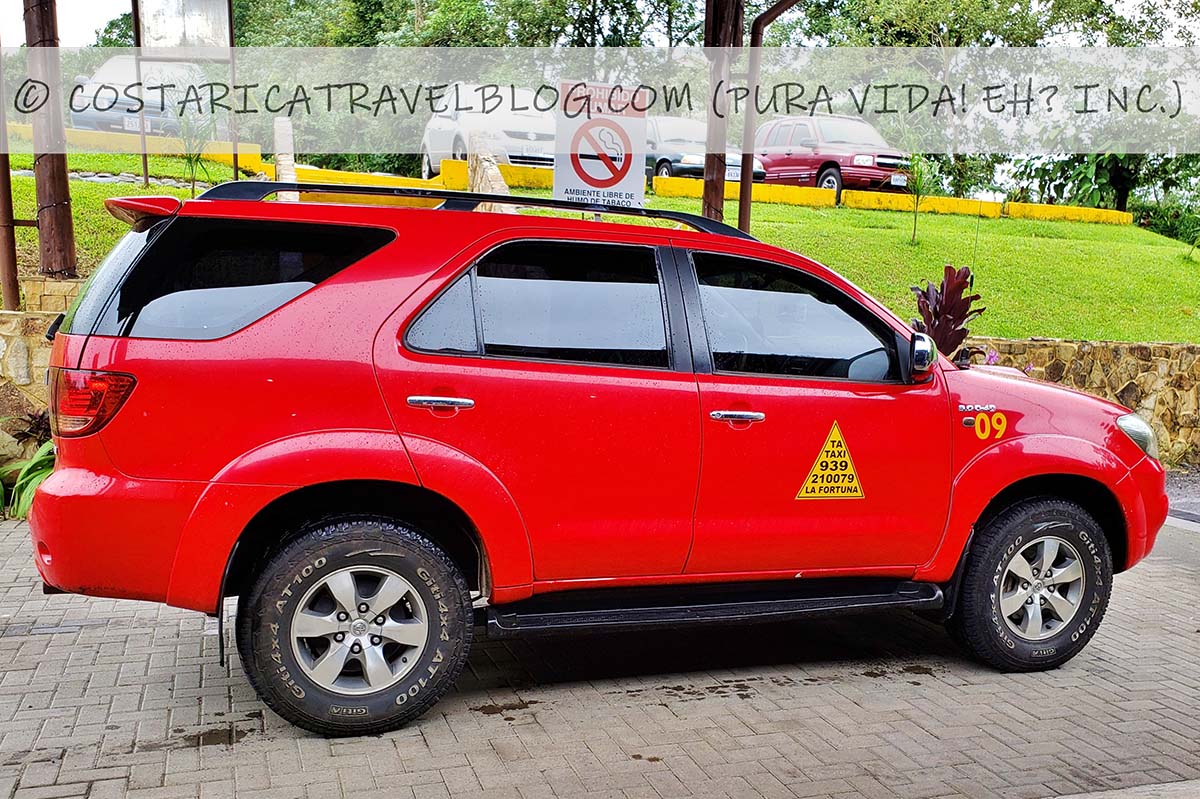
Costa Rica’s official taxi services are performed in red vehicles . The only exception to this rule is Costa Rica’s official SJO Airport taxi services , which are performed in orange vehicles . Red taxis operate in towns and cities around the country, with the exception of car-free communities, like Tortuguero. Unofficial taxi services (called piratas ) are unlicensed, lone drivers who provide informal, unregulated rides. Many piratas own red-colored vehicles, so it’s easy to mistake them for official red taxis. To ensure you climb into an official red taxi, look for the yellow triangle and code (printed in black) on the vehicle’s red door , as shown in the photos above. (Official SJO Airport taxis have a white triangle and code on the vehicle’s orange door.)
Most official red taxis are sedans that can accommodate four passengers . If you’re traveling with a group of more than four people, you’ll need to either hire two taxi drivers to accommodate your group or specifically request a taxi that’s an SUV or van . Accessible taxis are available upon request.
Here are some other helpful things to know about taxi services in Costa Rica:
- Scheduled stops: Taxi services are typically direct transfers, but they can make stops if and when necessary.
- Routes: Taxis can travel to almost every destination in Costa Rica that’s reachable by vehicle. However, taxis are rarely used for country-country travel (i.e., as a way to travel between towns and cities). They’re more commonly used to move within towns and cities or to travel to sights and attractions on the outskirts of towns and cities.
- Luggage options: Luggage can be stored inside the taxi beside your seat or in the vehicle’s trunk. Large items, such as surfboards and bikes, can be difficult to transport by the average taxi, unless you specifically request a large taxi vehicle, such as an SUV or van.
- Children and pets: Children up to the age of 12 travel with a car seat. If you intend to use taxi services in Costa Rica, consider bringing a car seat from home . (Most taxi drivers don’t provide one.) Depending on the driver, pets may or may not be permitted in taxis.
- Price: Taxi services are priced per kilometer . Exact prices range $1.75-2.00 per kilometer for official red taxis. (Official SJO Airport taxis are slightly more expensive than official red taxis.) Make sure the driver turns on the maria (meter) when you enter the taxi . You’ll pay more if you need a driver to wait for you while you make a stop, and you may also pay more if you use a taxi service after 10:00pm.
- Scheduling: Taxi services run throughout the day, every day . Most hotels, tour operators, tour guides, and/or restaurants can call you a taxi free-of-charge. If you speak Spanish, you can call the local taxi dispatch office to arrange your own pick-up. To grab a taxi in any Costa Rican town, hail one on the street or ask a local where you can find the parada de taxis (taxi stop). Taxi stops usually line parks or churches.

You may be surprised to learn that Costa Rica’s public transit system is well-established and operates fairly smoothly . Costa Ricans rely heavily on the system to get around, as do a small percentage of international visitors who are in the country with an extremely tight budget. Despite popular belief, Costa Rica’s public buses aren’t “chicken buses”; they’re large vehicles that resemble coach buses. Rarely are they air-conditioned, though, and they aren’t the most comfortable way to travel within Costa Rica.
Here are some other helpful things to know about public bus services in Costa Rica:
- Scheduled stops: Costa Rica’s public transit system provides two types of bus services, directo (direct) servies and colectivo (collective) services. Directo services provide direct (or near direct) service between two destinations, meaning the driver won’t stop along the way, or if they do, stops will be infrequent and quick. Colectivo services make several stops along a route. They’re the slowest, and typically the cheapest, form of public transportation.
- Routes: Public buses can travel to almost every Costa Rica destination that’s reachable by vehicle, including small, rural communities that aren’t regularly visited by other types of Costa Rica transportation.
- Luggage options: If you have a lot of luggage, traveling by public bus can be a pain . Some buses have enclosed compartments under the bus where suitcases and large backpacks can be stored, but if you don’t want your belongings to get stolen, you’ll need to score a window seat on the side of the bus where the compartment’s door is located and keep your eyes on the compartment every time the bus stops . If you travel light, you can carry your luggage inside the bus with you, but because seats usually sell out, you’ll likely won’t be able to keep your luggage with you beside your seat, so you’ll need to place it in an overhead rack and keep an eye on it there . Medium-size backpacks and small suitcases can be stowed by your feet , provided you don’t mind sitting uncomfortably.
- Children and pets: Reduced bus ticket rates for children are offered. Pets are usually accepted for transport if they’re stored in a crate or carrier.
- Pricing: Public buses are the cheapest mode of transportation in Costa Rica . Exact prices vary by route and whether the bus provides a directo or a colectivo service, but generally, they range $1-10 USD per adult. The price of a bus ticket buys a one-way transfer.
- Scheduling: Public buses have predetermined, nonnegotiable departure times . They run several times a day, every day .

Tuk-tuks, otherwise known as auto-rickshaws, have popped up in some Costa Rican beach towns over the past decade. Consider them a variation of unofficial taxi services albeit performed in small, three-wheeled vehicles as opposed to sedans or SUVs. Most tuk-tuks can accommodate two-to-three passengers , depending on their size. In Costa Rica, you’re most likely to come across tuk-tuks in the beach town of Puerto Viejo de Talamanca , on the Caribbean coast, and in the beach town of Nosara , on the Pacific coast.
Here are some other helpful things to know about tuk-tuk services in Costa Rica:
- Scheduled stops: Tuk-tuks are typically direct transfers, but they can make stops if and when necessary.
- Routes: Tuk-tuks tend to stick to short routes, rarely traveling more than a half-hour or so outside of a destination. They’re primarily used to move within beach towns or to travel to sights and attractions just outside of beach towns.
- Luggage options: Tuk-tuks are small and don’t provide much space for storing luggage beyond a small personal item , such as a purse or a few shopping bags. You may be able to get by with carrying a large item, such as surfboard, on your lap.
- Children and pets: Children are welcome to travel in tuk-tuks with an adult. Depending on the driver, pets may or may not be permitted in tuk-tuks.
- Price: Service prices charged by tuk-tuk drivers are negotiable and vary by route.
- Scheduling: Tuk-tuk services run throughout the day, every day, but their availability and schedules are influenced by Costa Rica’s travel seasons . As you’d expect, you’ll find more tuk-tuks during the high season and fewer tuk-tuks during the low season. Most hotels, tour operators, tour guides, and/or restaurants can call you a tuk-tuk free-of-charge. To find a tuk-tuk in a Costa Rican beach town that has them, ask a local where the tuk-tuk drivers tend to congregate.

A rented bike provides an easy and inexpensive means of exploring town centers and communities . You’ll find tons of beach-cruiser bikes for rent in popular beach towns, such as Puerto Viejo de Talamanca (on the Caribbean coast) and Tamarindo and Santa Teresa (on the Pacific coast). Inland destinations, including La Fortuna, also have bikes for rent, including higher quality road bikes and mountain bikes .
Here are some other helpful things to know about bike rentals in Costa Rica:
- Scheduled stops and routes: The best thing about bike transportation is that it’s flexible. A bike can be used to travel just about anywhere , and it supplies renters with the freedom to make scheduled or impromptu stops wherever, whenever needed.
- Luggage options: Unless you opt to wear a backpack while biking, most bikes don’t provide a way to carry luggage.
- Price: The cost of a rental bike varies by destination but averages $10-15 per day for a beach-cruiser bike and closer to $50-75 per day for a higher quality road bike or mountain bike .
- Scheduling: Most bikes are rented by the day or the week.

Rented watersport equipment offers a fun way of exploring Costa Rica’s waters, whether they belong to the Pacific Ocean, the Caribbean Sea, or one of several gulfs, bays, or rivers . In Costa Rica, watersport equipment that can be used as a mode of transportation includes kayaks, stand-up paddleboards, and jetskis. Not surprisingly, watersport equipment is available to rent in beach communities, including many of those that line the Pacific and Caribbean coasts , such as Tortuguero (on the Caribbean coast) and Samara and Drake Bay (on the Pacific coast). Operators in and around the inland destination of La Fortuna rent watersport equipment for use on the nearby lake, Lake Arenal .
Here are some other helpful things to know about watersport equipment rentals in Costa Rica:
- Scheduled stops and routes: Like bike transportation, rented watersport equipment can be used to connect two or more neighboring destinations by water , as well as intriguing offshore attractions, like islands . It offers renters the freedom to make scheduled or impromptu stops wherever, whenever needed.
- Luggage options: Unless you opt to wear a backpack while using watersport equipment, which may not be possible if you’re wearing a lifejacket, most watersport equipment doesn’t permit carrying luggage.
- Price: The cost of kayaks, stand-up paddleboards, and jetskis vary by type but average $25-100 per day.
- Scheduling: Most watersport equipment is rented by the day, if not in two- or four-hour blocks of time.

ATV transportation, although far from eco-friendly, is a mode of transportation used in a handful of beach towns in Costa Rica, primarily those that fall along the Pacific coast, including Tamarindo and Santa Teresa. ATVs are a lot like mini rental cars: they’re gas-powered vehicles used to quickly and easily move around and between towns and communities . Despite their undeniable carbon footprint, ATV rentals are a popular option for getting to and from accommodations, restaurants, beaches, and other local attractions.
Here are some other helpful things to know about ATV rentals in Costa Rica:
- Scheduled stops and routes: Like rental cars, ATV rentals allow you travel between places with little physical effort. What’s more, in many cases, ATVs allow for off-road travel, which can reduce travel time and be loads of fun. ATVs welcome scheduled or impromptu stops , wherever and whenever needed.
- Luggage options: Some ATVs provide a compartment where small travel items, such as a backpack, can be stored.
- Price: The cost to rent an ATV varies by destination but averages $50-100 per day .
- Scheduling: Most ATVs are rented by the day, and in some cases, by the week.

Golf carts aren’t as popular in Costa Rica as they are at other tropical destinations, especially resort destinations, but you will find them in a few beach towns , including Playas del Coco and Tamarindo (on the Pacific coast). They’re a lot like ATVs in that they provide an easy way to move around towns and communities (albeit at a slower pace than an ATV), but unlike ATVs, golf carts don’t have as heavy a carbon footprint, especially electric golf carts . If the physical effort that walking and biking requires is most off-putting to you, you’ll likely love the ease with which rented golf carts invite you to move between accommodations, restaurants, beaches, and other local attractions.
Here are some other helpful things to know about golf cart rentals in Costa Rica:
- Scheduled stops and routes: Like rental cars and ATVs, golf cart rentals make it easy to move around towns with little physical effort, and they allow for scheduled or impromptu stops , wherever and whenever needed.
- Luggage options: Most golf carts don’t have a compartment where luggage can be stowed, but many have a spare. So, if you don’t plan on occupying that seat with passengers, it can be used to carry some luggage.
- Price: The cost to rent a golf cart varies by destination but averages $35-65 per day .
- Scheduling: Most golf carts are rented by the day. In some cases, they’re rented by the week.
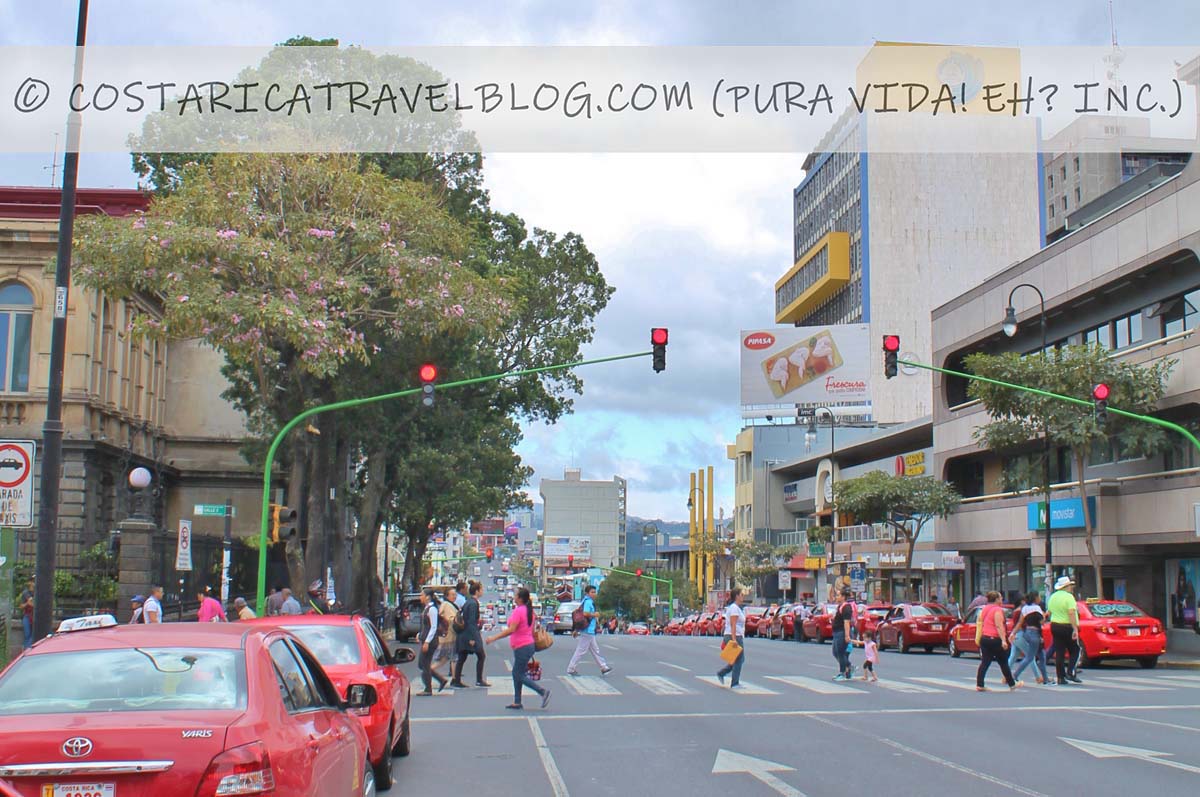
Many destinations in Costa Rica, from the capital city of San Jose to sprawling beach towns along the Caribbean and Pacific coasts, are primarily flat and invite leisurely strolls . If you don’t want to pay for a taxi or rent equipment, such as a bike, to get around, consider moving from point A to point B on foot .
Here are some other helpful things to know about traveling on foot in Costa Rica:
- Scheduled stops and routes: Walking awards you the freedom to wander and stop whenever and wherever you wish.
- Luggage options: Dragging luggage around any town isn’t a pleasant experience. Pack must-have items in a small backpack and leave the rest of your luggage at your hotel when you set out to explore a destination on foot.
- Children and pets: Like adults, children and pets are welcome to walk around towns. Note that sidewalks can be nonexistent, broken, bumpy, and difficult to maneuver with a stroller, so if you intend on walking a lot in Costa Rica and a young child will be joining you on the trip, bring a backpack child carrier to Costa Rica. If you bring a pet to Costa Rica, keep them on a leash whenever you visit town centers. Also, be aware that you’ll encounter a fair number of stray dogs around towns, and know in advance that most restaurants and shops aren’t pet-friendly.
- Price: 100% gratis (free)!
- Scheduling: Walking provides an opportunity to explore destinations at your own pace and according to your own schedule. To stay safe, minimize the amount of time you walk around destinations after dark, especially if you’re a lone traveler. For additional safety tips, don’t miss our related blog post Is Costa Rica Safe? Yes, If You Do This .
Do you have questions about any of the modes of transportation described above, want to know which transportation service companies we recommend, or need help deciding which types of transportation services to use? No problem! When you’re ready, make an appointment here to communicate with me (Nikki) privately and we can discuss these and other topics to get your questions answered fast and your Costa Rica trip poised for success. Pura vida, amigos! 🙂

Hey, Costa Rica Travel Blog reader, thank you for visiting and reading our blog! We're truly grateful for your time and preference.
Do you know that your spam-free reading experience is most important to us? Unlike some other Costa Rica blogs, we do not to sell your personal information, and we choose not to display ads, sponsored content, or affiliate marketing on our blog so we can keep your visit as distraction- and junk-free as possible. Because we prioritize your privacy, we don't earn money when you visit us, when you sign up for our e-course, or when you click on our links, which means the time and work we put into this blog—including its 300+ articles—is entirely voluntary! If you find our content valuable, and you'd like to thank us for making the trip-planning process easier and your Costa Rica vacation more enjoyable , please consider making a small donation ($1, $2, $3, or an amount of your choosing) to our blog. Doing so is a great way to pat us on the back if you feel we deserve it . 😊 Pura vida, amigos!

Click on the button above to donate through PayPal. (If you cannot see the PayPal button above, click here .) A PayPal account is not required to make a donation; credit and debit cards are also accepted. PayPal donations are confidential; we never see your payment details.

Tagged: budget travel , cars , costa rica , costa rica travel , costa rica travel tips , costa rica vacation , flights , tourism , transportation , travel , travel guide , travel tips , vacation
- Author Posts
I prefer to rent a car wherever possible.and practical. I really enjoy the flexibility and freedom to explore.
Hi Jeremy Sell!
Great tip! Vehicle rentals definitely provide travelers with more flexibility and freedom to explore, as you mention. I also love that you mentioned “wherever possible and practical .” Practicality is key; some areas of Costa Rica are more challenging to drive than others (the time of year is an important consideration too), so whether or not it would be practical to drive when and where you plan to go is a vital question worth asking. For more information about this topic, don’t miss our related blog post:
Renting A Car In Costa Rica: Should You Do It?
Pura vida! 🙂
Great tips! We used Gray Line & Interbus for intercity transportation, and it was reasonably priced and very convenient! We’d highly recommend it.
Hey aweekoraweekend!
Thanks so much for sharing your experience! We agree; shared shuttle services are always a great option. They offer clean and reliable transportation with set schedules (sometimes multiple times daily), and they’re usually cost-efficient. Thanks so much for the recommendation! 🙂
Pura vida amigos!
It’s so fun! I need a vacations now! Thanks for the information!
Hello Hotels in Managua!
Come visit, neighbor! 🙂 Quick question: are you connected to Hotel Mozonte in Managua? We’d love to visit Nicaragua one day, and when we go, we’ll be sure to check out Managua.
Excellent information! Thanks for the detail.
Hi Bluebird Annie!
Thank you Bluebird Annie for your comment, as always! 🙂
Readers, if you have an interest in birding, check out Annie’s blog at http://www.howtospyonbirds.wordpress.com—she is one of the most knowledgeable people we know in the field. Readers/birders are also in for a real treat. Annie will be building a full-fledged birding website in the near future, so keep an eye on her blog for updates.
I recently visited Costa Rica (Jaco) and loved my stay there! We actually rented a small SUV because we wanted to drive over to Panama during our stay. Needless to say, crossing the boarder wasn’t the easiest thing to do LOL! We had a great time overall though. Please check out my stay there. Pura Vida!
Hey tffnyhrly!
That’s so great! Rental vehicles are perfect for that reason; they allow you to explore areas you may not get to see otherwise. Knowing the border, I bet that was quite an experience, especially if you tried to cross in your rental car! 🙂 I checked out your blog post “Hello Costa Rica” and it was great to read that you loved your visit. Hope to see you back in CR one day! 🙂
Hi. We have rented a car for our upcoming trip to costa Rica which starts next week. We got a small car to, so that we don’t spend much money in gas. Do you think we will need a 4×4 car, or should we be fine in our small car. We are going from San Jose, Manuel Antonio, Arenal, Monteverde, Tamarindo.
Thanks for the help!
Hello Vanessa M!
Great question! Typically, with trips into/out of the Monteverde area, we recommend having a 4X4. One is not necessarily needed but the drive without it would be extra slow-going. Of course, if your car rental arrangement is already set, and you won’t be driving a 4×4 vehicle, just drive slower on bumpy sections (if you plan to arrive from the north) and take curves cautiously. For more information about driving to and from Monteverde, don’t miss our related blog post: Driving To Monteverde: Photos, Road Conditions, Routes, Drive Times, and More!
Wishing you a safe trip. Pura vida! 🙂
First, thank you for taking the time to post so much valuable information! My fiance and I are in the process of planning a couple of weeks in CR later this year. He desperately wants to rent a car but, the more I read the more leery I become (i.e., the roads, lack of signage, rental car scammery, etc.). You mentioned city-to-city tour transfers and we’re looking forward to several tours so, this could be an option but, my question is: what do we do with our luggage in the meantime?
Congrats on your upcoming marriage! 🙂 You ask a really important question, and we address it in one of our other blog posts. Please see the “What happens to my luggage” section of this article:
Costa Rica Tour Transportation: How To Use Tours To Travel Between Destinations
Amazing post!! It is really wonderful for the people who are thinking to travel in Costa Rica for first time. Two months ago, I have been to there and hired Private Transportation through TicoRide.com. I would recommend them for any private and shared shuttle services in Costa Rica.
Hi TicoRide!
Thanks so much for your kind words regarding our article, and the self-promoting line related to your own business’s transfer services. 😉
Wishing you all the best throughout your business operations. Pura vida!
My family and I are planning a trip in July and are planning on renting a vehicle, but are unsure how easy it will be to travel from Liberia, playa hermosa, fortuna, San Jose, manual Antonio. Is there another subject specific to navigating around the country?
Hey Shiloh!
Great question! We wrote an article that details Costa Rica’s highways, so that might be what you’re looking for. You can access it here:
Costa Rica Highway Conditions By Route
You can also check out our post on drive times as it provides some helpful charts that document roughly how long it takes to travel between destinations:
Driving In Costa Rica: Distance And Duration Of Popular Routes
- The forum ‘Costa Rica Travel Blog Forum’ is closed to new topics and replies.
- Kale by LyraThemes.com.
We're Nikki and Ricky, and we're human!
Sadly, ai-generated costa rica blogs and guides are taking over the internet. thank you for choosing our authentic website and resources over others, for trusting our firsthand experience, and for preferring our human-backed recommendations 😀 other ways we are unique:.
✓ We choose not to display ads, sponsored content, or affiliate marketing on our blog. Because we prioritize your privacy, we don't earn money when you visit us, when you sign up for our e-course, or when you click on our links, which means the time and work we put into this blog is entirely voluntary. ✓ Ricky is a born-and-raised Costa Rican and Nikki (married to Ricky) has explored Costa Rica since the mid-2000s . ✓ We've operated our Costa Rica-based business, Pura Vida! eh? Inc. , for 16 years (and counting!) . ✓ Our Costa Rica guidebooks are published by the prestigious Moon Travel Guides brand . ✓ We only ever write about experiences we know firsthand , and we never stuff our blog with general information about Costa Rica that is widely available elsewhere . ✓ We never copy or plagiarize other writers' content . How we wish other writers would show us the same respect! ✓ Unless stated otherwise, every photo displayed on our blog was taken by us, and with our own two hands. (Unlike some other bloggers, who rely on drones to travel and conduct research for them, we actually visit and explore the places we write about .)👍🏽 ✓ We're active in promoting Costa Rica around the world . We've written about Costa Rica for Wanderlust Magazine (UK), presented Costa Rica on Rick Steves' Monday Night Travel Show and podcast/radio show (US), and served as a Costa Rica Destination Editor for Essentialist (Spain). ✓ Our work is backed by hundreds of positive reviews and testimonials ( read some here ) ✓ We are not overly active on social media . Instead of fixating on our own popularity, we spend the majority of our time exploring and researching Costa Rica, updating our various Costa Rica resources, and working with travelers one-on-one. We're focused on the quality of your travel experience , not the quantity of our followers. ❤️
We hope you enjoy your visit to our junk-free blog as much as your time in Costa Rica. 😊

- Privacy Policy Overview
- Remember my preference
This website uses cookies to operate and provide you with the best user experience possible. To ensure you're aware of and okay with this and our other privacy-related practices, please review our Privacy Policy, then click the button below to accept it.
If you do not accept the policy, we respect your choice 100%. Unfortunately, several of our website’s features, including our Questions and Answers Forum, rely on cookies to operate. Most are also run by themes, plugins, and other add-ons to our website that we do not and cannot control, which means the cookies you receive are mainly provided by third parties. Because simple actions like reading our articles, asking a question, and even visiting our website’s homepage require the use of cookies, it is not possible to explore or use our website without them. If you would prefer not to receive cookies, we kindly (and sadly) ask that you do not visit our website. (Alternatively, you can try setting your browser to remove or reject browser cookies before visiting our website, but you may find that our website doesn’t function properly without them.) By visiting or submitting information through our website, you acknowledge and accept our use of cookies, and the use of third-party cookies. For more information, please see our Privacy Policy.
Thank you for understanding!
In order for our site to remember that you accept our policy, please enable the Strictly Necessary Cookie.
If you leave the Strictly Necessary Cookie disabled, we will not be able to save your preference. This means that every time you visit this website you will need to accept the policy again.
Costa Rica Travel Guide
Courtesy of Matteo Colombo | Getty Images

Getting Around Costa Rica
The best way to get around Costa Rica is by bus, which is reliable, navigable, inexpensive and frequently runs through San José , Costa Rica's capital. Driving on your own is not highly recommended as some roads are tricky (speckled with potholes and ambiguously marked intersections). A better alternative to renting your own set of wheels is hiring a car-and-driver service recommended from your hotel , so you can enjoy the country's gorgeous scenery without having to tackle challenging roads with confusing signage. Signing up for one of the best tours in Costa Rica is another great way to sightsee without having to navigate the country on your own. For a hassle-free means of getting to downtown San José from the Juan Santamaría International Airport (SJO), you'll want to flag a taxi. Official taxis at the airport are orange. If you're planning to explore Guanacaste and the Nicoya Peninsula in the northwest region of Costa Rica, you can easily hail a taxi from the Daniel Oduber Quirós International Airport (LIR).
Explore More of Costa Rica


Things To Do

Best Hotels

You might also like

# 1 in Best Cheap Destination Wedding Locations

# 3 in Best Places to Visit in March

Chilean Patagonia
# 2 in Best Places to Visit in Central and South America
If you make a purchase from our site, we may earn a commission. This does not affect the quality or independence of our editorial content.
Recommended
The 26 Best Beach Resorts in the World
Marisa Méndez|Erin Vasta|Rachael Hood|Catriona Kendall September 5, 2024

30 Fun Fall Weekend Getaways for 2024
Holly Johnson August 29, 2024

The 19 Best Fall Family Vacations for 2024
Amanda Norcross August 27, 2024

The 28 Best Water Parks in the U.S. for 2024
Holly Johnson|Timothy J. Forster May 8, 2024

The 18 Best Napa Valley Wineries to Visit in 2024
Lyn Mettler|Sharael Kolberg April 23, 2024

The 25 Best Beaches on the East Coast for 2024
Timothy J. Forster|Sharael Kolberg April 19, 2024

The 50 Best Hotels in the USA 2024
Christina Maggitas February 6, 2024

The 32 Most Famous Landmarks in the World
Gwen Pratesi|Timothy J. Forster February 1, 2024

9 Top All-Inclusive Resorts in Florida for 2024
Gwen Pratesi|Amanda Norcross January 5, 2024

24 Top All-Inclusive Resorts in the U.S. for 2024
Erin Evans January 4, 2024


Costa Rica Guide
Travel information and maps, costa rica bus routes.
Accurate comprehensive list of every current bus route in service in Costa Rica and the company that operates it. We download the data from the government licensing agency Autoridad Reguladora de los Servicios Públicos (ARESEP), filter out about 30,000 lines and 20 columns of regulatory crap to come up with the list of routes and operators. This is the only reliable source (they use it for tax collection so it’s kept up to date) we have found for Costa Rican Buses.
These are intercity routes and do not include the local city buses for San José or other metropolitan areas.

Direct Routes are shown first and in bold typeface (strongly recommended when possible). If you haven’t already seen the Costa Rica Bus Schedule you should check there first since it includes more information for 160 of the main routes.
Phone numbers are provided for the major carriers (sorry you’ll have to google or use paginas amarillas for the others) and a call is the best way to get current schedule information for any route. Scroll through the alphabetical list or use the “find” function (ctrl+f) to locate your destination.
There are over 1,000 destinations on this bus schedule so it’s much easier to search than scroll through all of them ( how to search webpage contents on any device ).
The “Bus Schedule” has a map indicating public bus connections between destinations in Costa Rica .
- How to get around in Costa Rica?
Book your individual trip , stress-free with local travel experts
Select Month
- roughguides.com
- Central America & the Caribbean
- getting-around
- Travel guide
- Itineraries
- Local Experts
- Travel Advice
Plan your tailor-made trip with a local expert
Book securely with money-back guarantee
Travel stress-free with local assistance and 24/7 support
Our trip has been amazing. This is our third time in Sri Lanka and possibly my favourite trip. I am already planning my next one.
Costa Rica is a small country that punches above its weight. Despite its slender proportions, the country has more than its fair share of national parks and wildlife reserves, sandy beaches , volcanoes, cities and towns. Luckily, getting around Costa Rica is relatively quick and easy, whether by car, bus or plane. In this guide, we'll tell you all about how to get around in Costa Rica.
Book your flight to Cost Rica from as low as £430
How to get to Costa Rica?
Getting around in costa rica by domestic flights, getting around in costa rica by rental car.
- Getting around in Costa Rica via taxi
Motorbikes and scooters in Costa Rica
Tips for getting around by marcos, our travel expert, travel ideas for costa rica, created by local experts.

Costa Rica: Coast to Coast
From paradise beaches, scenic narrow waterways and magical rainforests, Costa Rica has much to offer. Head east and discover the tranquil Caribbean Sea, head west for the tumultuous Pacific Ocean and surfer’s paradise.
_listing_1591460531695.jpeg)
Discover Northern Costa Rica
This self drive itinerary allows you to explore the Central and Northern highlights of Costa Rica: from the active volcano Arenal to the cloud forest of Monteverde and the beaches of Guanacaste with plenty of surf & yoga - discover why they call it the land of Pura Vida - pure life!

A self drive Caribbean adventure
It's time to discover Costa Rica's Caribbean coast in your own rental car: From Boca Pacuare, where the turtles come to lay their eggs, to the unique culture of Cahuita and the beaches of Puerto Viejo! Your trip will finish in Turrialba, home of the main archaeological monument in our country.

Beaches and Volcanoes
Escape to Arenal for volcanoes, waterfalls and wildlife reserves. Enjoy gentle hikes or partake in adrenaline-fuelled river rafting. Then journey down to Costa Rica’s Central Pacific for some sand and surf fringed by dense forest that’s teeming with wildlife.

From the Cloud Forest to the Beaches
On this amazing trip, you will explore the Cloud Forest and rural life of Dota, including a community visit to get to know the real Tico life before heading to the incredible Drake Bay and Corcovado National Park with its stunning biodiversity, and then the amazing beaches of Manuel Antonio.

Tropical Costa Rica
Visit volcanoes, take a dip in a hot springs, drift lazily along the country’s waterways and seek out wildlife in tropical lowland forest. Costa Rica’s diverse ecosystem beholds a whole host of natural treasures.
Though some people travel to Costa Rica by bus, the majority arrive via one of two international airports, either near San José or the northern city of Liberia .
It's also possible to cross the border by bus. Bus services connect San José with neighbouring countries, including Panama, Nicaragua, El Salvador, Honduras, Mexico and Guatemala. While some travel to Costa Rica overland, most visitors arrive by plane.
Rough Guides tip: book your flight to Costa Rica here
Flying to Costa Rica
Costa Rica has two international airports. Juan Santamaría (SJO), just outside San José, receives the majority of flights, though Daniel Oduber Quiros (LIR), near the northern city of Liberia, handles an increasing range from the US, Canada and the UK.
Fares can be as low as £430 for either route , though generally hover around £500–650. You can sometimes find cheaper fares by flying via Madrid (with Iberia ), Paris ( Air France ), the US or Canada ( Air Canada ), though this will obviously extend your journey time.
Getting to Costa Rica from the UK got a lot easier since the introduction of direct flights: British Airways flies to San José and Thomson flies to Liberia.
From the US and Canada
Flying to Costa Rica from North America is relatively cheap and easy. Daily direct flights depart for San José from numerous cities in the US, including Miami (around 2hr 45min), Orlando (around 3hr), Houston (around 3hr 40min), Dallas (around 4hr), Denver (around 5hr 15min), New York (around 5hr 30min) and Los Angeles (around 6hr).
From Australia, New Zealand and South Africa
There are no direct flights from Australia, New Zealand or South Africa to Costa Rica – the quickest and easiest option is to fly via the US or Canada. Note that it’s best to book several weeks (or months) ahead.
Overland to Costa Rica
Travelling to Costa Rica by bus is fairly easy. Costa Rica’s national bus company, Tica Bus runs daily services between San José and destinations across the Americas. Travel to or from Managua (11hr), Guatemala City (60hr, with overnights in Managua and El Salvador at your own expense) and Panama City (16hr). Be sure to reserve your tickets up to a month in advance in high season (and up to three months in December).

Espadilla beach near Manuel Antonio national park, Costa Rica © Shutterstock
Buses are the most common way of getting around Costa Rica, and the public bus system is excellent, inexpensive and relatively frequent, even in remote areas. Privately run shuttle buses offer quicker but pricier transfers, while taxis are decent value for groups. Car rental can be quite expensive, and driving can be a hair-raising experience, with precipitous drops in the highlands and potholed roads just about everywhere else.
It’s also worth bearing in mind that the difficult terrain makes driving distances longer than they appear on the map. Domestic flights are one of the quickest ways of travelling around Costa Rica, with the two main domestic airlines offering economical flights.
What better way to plan a trip than to rely on personalized experiences? Our content manager has traveled to Costa Rica and shares with you what to consider when planning your trip .
Getting around in Costa Rica by bus
Getting around Costa Rica by bus is by far the cheapest option – the most expensive journey in the country (from San José to Paso Canoas on the Panamanian border) costs just US$14. San José is the hub for virtually all bus services in the country; indeed, it’s often impossible to travel from one place to another without backtracking to the capital.
It’s best to book tickets for popular routes in advance, though you may be lucky enough to get on without a reservation. Tickets on most mid- to long-distance and popular routes are issued with a date and a seat number; make sure the date is correct, as you cannot normally change your ticket or get a refund. Bus schedules change with impressive frequency, so be sure to check in advance. You can download a timetable from the ICT website or check here .
Shuttle buses
A network of air-conditioned shuttle buses connects most of Costa Rica’s main tourist destinations. While these often cost over five times as much as the public buses, they are significantly faster and more comfortable, and will pick up and drop off at hotels. Try Interbus.

Arenal volcano in Costa Rica ©Shutterstock
If you’re short on time, the best way to travel Costa Rica is by plane. The two main domestic carriers are:
Although, you are better off booking your flight(s) through more trustworthy websites like Kayak . Domestic flights can be particularly handy for accessing the more remote corners of the country – the flight from San José to Puerto Jiménez on the Osa Peninsula, for example, takes just 50 minutes compared to four and a half hours on the bus.
NatureAir, which flies from Tobías Bolaños Airport in Pavas, 7km west of San José, generally has bigger planes and more frequent services. Sansa flies from Juan Santamaría airport, 17km northwest of San José. Rates start around US$60 for the shortest hops on both airlines, and last-minute deals are sometimes available on flights that aren’t fully booked.
Although there’s little traffic outside San José and the Valle Central , the common perception of driving in Costa Rica is of endless dodging around cows and potholes, while big trucks nudge your rear bumper in an effort to get you to go faster around the next blind bend. The reality is somewhat different. While many minor roads are indeed badly potholed and unsurfaced, travelling around Costa Rica by car is relatively easy. Plus with your own vehicle you can see the country at your own pace without having to adhere to bus or plane schedules.
Expect to pay from about US$40 per day for a regular vehicle, and up to US$80 for an intermediate 4WD (both including full insurance), which might be helpful at Arenal and Monteverde area. It’s well worth hiring a Sat Nav, as road signs in Costa Rica are few and far between.
Most car-rental companies are located in San José and at or around the international airports near Alajuela and Liberia, though the best option is to rent your car online before arrival .
Local agencies invariably provide a much better deal than the major overseas operators (Vamos and Adobe are particularly recommended), although renting outside San José is usually a bit more expensive. During peak season (December to March), it’s wise to reserve a car before you arrive.
If you’re planning to visit the Nicoya Peninsula , Santa Elena and Monteverde or remote parts of the Zona Sur , it’s definitely worth paying the extra money for a 4WD. Indeed, in some areas of the country during the rainy season (May to November), it’s a necessity for rough roads and river crossings.
Car safety in Costa Rica
Although the majority of the country’s roads are fairly light on traffic, the road accident rate is phenomenal. While most Ticos blame bad road conditions, the real cause is more often poor driving. Sections of washed out, unmarked or unlit road add to the hazards, as do big trans-isthmus trucks.
Another hazard is car crime. Break-ins are an unfortunately regular occurrence, as are scams such as thieves puncturing your tyres and then robbing you after stopping to “help”. Most people have a memorable, and uneventful, time travelling around Costa Rica by car, but it will help if you consider the following:
- Drive defensively.
- Keep your doors locked and windows shut, especially in San José.
- Keep valuables in the boot or out of sight.
- Avoid driving at night, when wild animals are more active.
- If someone suspicious approaches your vehicle at a red light or stop sign, sound your horn.
- Do not pull over for flashing headlights – note that an emergency or police vehicle has red or blue flashing lights.
- If you get lost, find a public place, like a service station, to consult your map or ask for directions.
- If someone tells you something is wrong with your vehicle, do not stop immediately. Drive to the nearest service station or other well-lit public area.
- Do not park at remote trailheads – leave your car at the nearest manned ranger station.
- Be aware of steep roadside gullies, used to channel rainwater runoff, when turning or reversing.
- Do not pick up hitchhikers.
- In case of emergency, call T: 911.

The famous hanging bridge in Monteverde Cloud Forest ©Shutterstock
Getting around in Costa Rica via taxi
Taxis regularly do long- as well as short-distance trips, and are decent value if you’re travelling in a group.
For riders with a decent amount of experience, a motorcycle is one of the best ways to travel Costa Rica. You will need a valid licence or endorsement in order to rent a bike. Smaller motorcycles for day-trips (125–155cc) can be rented in some beach towns (ie Jacó and Tamarindo), with daily rates from around US$40.
Those who want to tour the country can rent larger motorcycles (250cc and above) or book guided tours out of San José. Once outside the metropolitan area, an endless number of curvy back-roads and scenic gravel trails awaits. While the notorious road conditions of Costa Rica can be tiring in a car, they are usually great fun on a dual-sport motorcycle (Enduro motorcycle), with its good suspension.
Interested in a motorbike tour? Talk to our local experts to craft the best trips!

Sun rising over the Playa Blanca beach in Peninsula Papagayo in Guanacaste, Costa Rica © Shutterstock
Hola! I'm Marcos, your travel expert in Costa Rica , and I'm thrilled to help you navigate the best ways to get around this beautiful country!
Costa Rica may be small, but it's packed with diverse landscapes, from lush rainforests to stunning beaches. The transportation options you choose can greatly impact your experience, so let's explore the best ways to get around:
For flexibility and convenience, renting a car is often the best choice, especially if you're planning to explore off-the-beaten-path destinations. Costa Rica's main roads are generally in good condition, but be prepared for less maintained roads in rural areas. A 4x4 is recommended if you're venturing into the mountains or to remote beaches.
Domestic flights
If you're short on time and looking to cover large distances, like from San José to the Nicoya Peninsula or the Caribbean coast, domestic flights are a quick and efficient option. Costa Rica has several small domestic airlines that connect major tourist destinations.
Public buses
For those on a budget, public buses are the most economical way to travel. They cover most of the country and are generally reliable. However, bus travel can be time-consuming, especially to remote areas, and schedules can sometimes be irregular.
Shuttle services
Shared or private shuttles are a convenient and comfortable way to travel between popular tourist destinations. They're more expensive than buses but less hassle than renting a car, and they often provide door-to-door service from hotels.
Taxis and ride-sharing apps
In cities and towns, taxis are readily available and can be a convenient way to get around for short distances. Ride-sharing apps like Uber are also available in some urban areas and can be a reliable and safe option.
The Rough Guides to Costa Rica and related travel guides
In-depth, easy-to-use travel guides filled with expert advice.

Travel advice for Costa Rica
From travel safety to visa requirements, discover the best tips for visiting Costa Rica
- Eating and drinking in Costa Rica
- National Parks in Costa Rica
- Travel Tips Costa Rica for planning and on the go
- Best time to visit Costa Rica
- Papagayo, Costa Rica
- Tortuga island, Costa Rica
- Costa Rica Weather in January
- Costa Rica Weather in March
- Costa Rica Weather in April
- Costa Rica Weather in May
- Weather in Costa Rica in August
- Weather in Costa Rica in June
- Costa Rica Weather in November
- How to get from San Jose to Puerto Viejo
- How to get from San Jose to Tortuguero
- How to get from San José to La Fortuna
- How to get from San José to Tamarindo
Find even more inspiration for Costa Rica here

- Travel Tips

written by Ties Lagraauw
updated 31.05.2024
Ties is a true world explorer - whether it be for work or leisure! As Content Manager at RoughGuides, and the owner of Dutch travel platform Reis-Expert.nl , Ties is constantly on the move, always looking for new destinations to discover.
Ready to travel and discover Costa Rica?
Get support from our local experts for stress-free planning & worry-free travels.
- Travel advice

centrocoasting
The bus travel guide for central america, making bus travel easy, no more confusing bus travel.
Finding accurate information about bus stations and bus schedules in Central America can be difficult. Centrocoasting has the most accurate and up-to-date information for bus travel in Central America. We have personally ridden every bus and snapped photos for you along the way. There is a ton of information for El Salvador, Nicaragua and Costa Rica, with Panama coming soon. Next year we will bring you more countries too!
Help your fellow traveller!
We here at Centrocoasting are just like you: travellers who love the adventure of local buses. This Guide is based on personal experience, but things change and we don’t have every detail and schedule, yet! Nothing in this site is guaranteed. We have tried our best to be a helpful source of info by adding and fixing times and prices when we find changes and updates. But, this is where you come in – help us help you and your fellow travellers by sharing your experience and adding bus schedule, route and price information. We get submissions all of the time from travellers just like you, so join the fun and leave us your travel tips and info updates in the comments on each station page. Thank you!
**Help us add information for Guatemala and Honduras **
Let us help you have the best vacation possible, travel safe and travel smart you are responsible for your own safety. read more, check out our instagram.

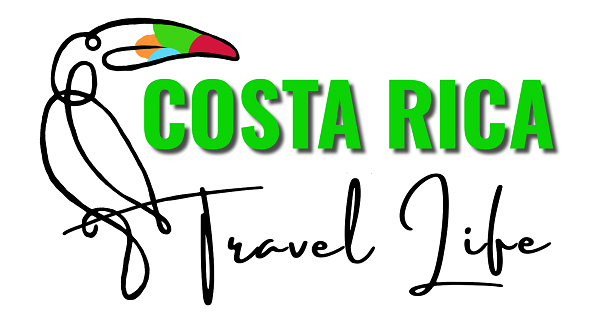
Home » Travel Planning and Inspiration » 11 Things You NEED To Know About Shuttles in Costa Rica
11 Things You NEED To Know About Shuttles in Costa Rica
By Author Costa Rica Travel Life
Posted on Last updated: March 17, 2024
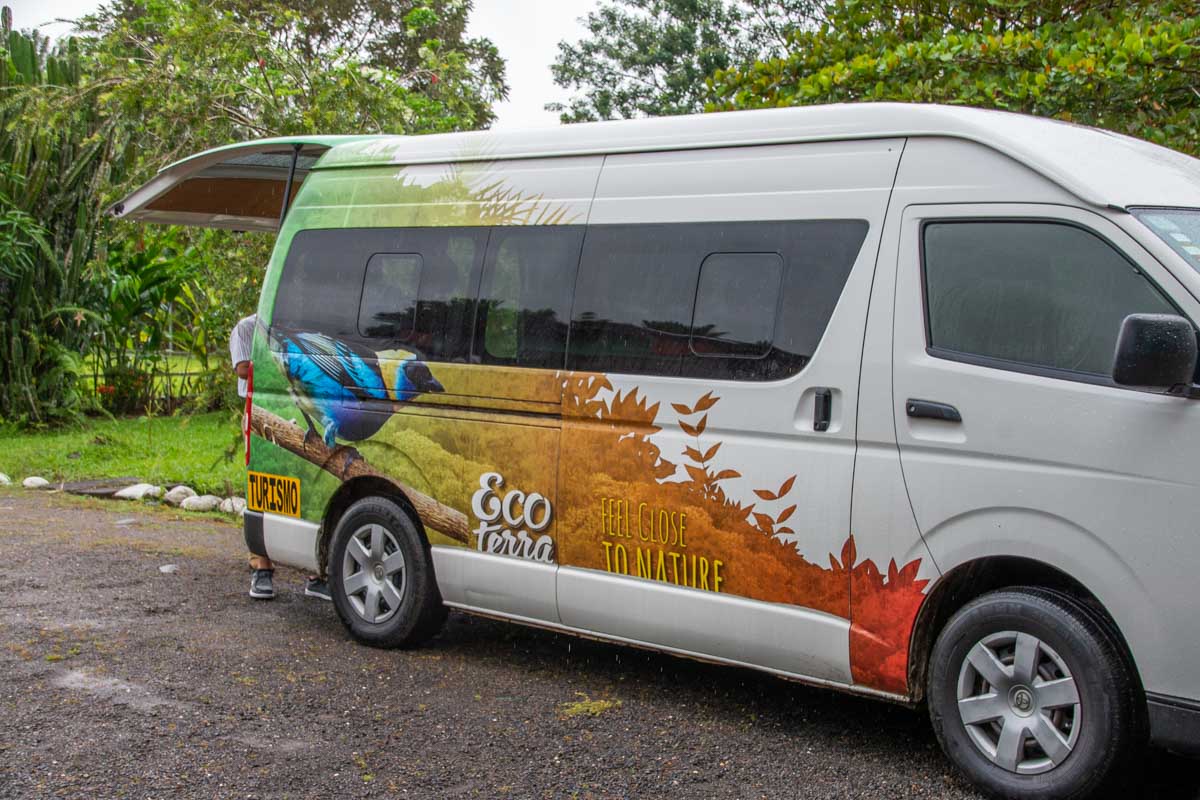
This blog may contain affiliate links. Read our disclosure policy for more info.
Costa Rica is an amazing country full of once-in-a-lifetime tours , spectacular waterfalls , and wildlife galore, but it’s not the easiest to get around. Planning your transport can be pretty stressful, especially if you don’t know much about the country and its road conditions.
Not everyone wants to rent a car in Costa Rica , and using public transport can be difficult and time-consuming, especially for longer journeys. For that reason, many travelers planning a Costa Rican holiday turn to shuttles to get around.
We’ve traveled to Costa Rica countless times and we even lived there for a while! We’ve booked shuttles often and always had good experiences with them. So if you’re wondering whether or not using shuttles to get around Costa Rica is the right option for you, this blog is here to help you decide.
We’ve compiled all of the need-to-know info about shuttles in Costa Rica to help you plan your trip!
Don’t have time to read the full article? Shuttles in Costa Rica are generally very safe and reliable. Bookaway is our top choice for booking a shuttle in Costa Rica. We also like booking shuttles with Viator , but their selection is more limited.
1. About shuttles in Costa Rica
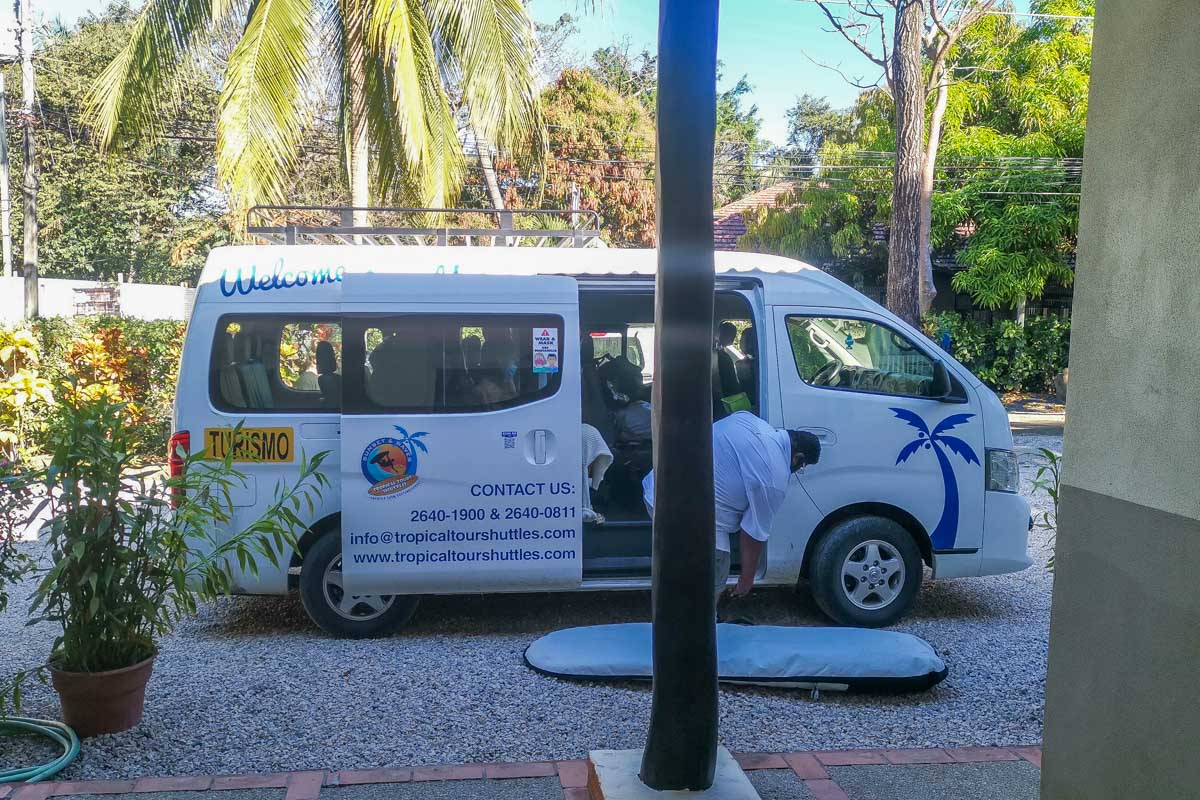
Shuttles are small, white buses you’ll see all over Costa Rica. If you’ve ever done a group tour in Costa Rica or elsewhere in the world, chances are you’ve traveled in this type of vehicle!
The Costa Rican tourism industry really knows what it’s doing and so they’ve established a very strong shuttle network to make it easy for tourists to travel all over the country.
The shuttle services in Costa Rica are very reliable and can take you pretty much anywhere. You can book shuttles online , and private or group options are available. We use them all the time when we travel in Costa Rica, and they’re one of the best ways to get around if you don’t want to drive here.
2. When is the best time to use shuttles in Costa Rica?
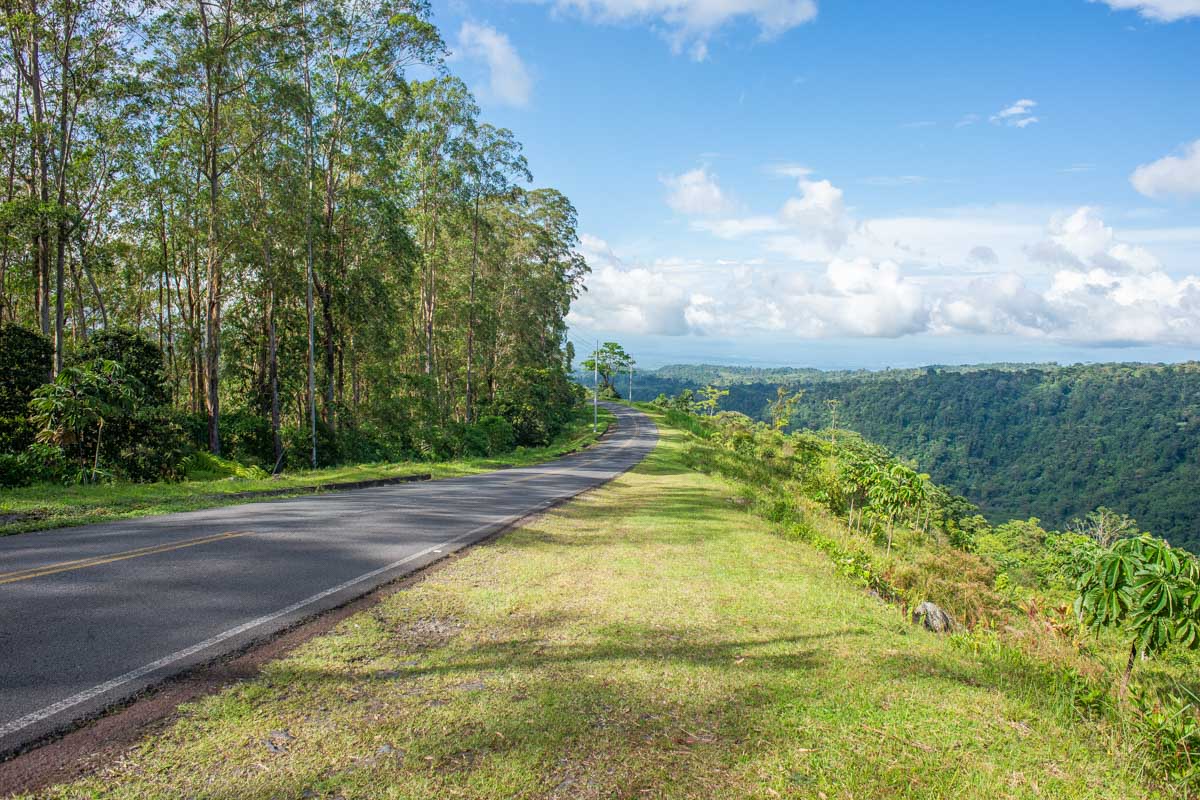
There are several reasons to take a shuttle in Costa Rica . Overall, it really comes down to your preferences and what works well for your trip. To be honest, they’re very safe and reliable so taking a shuttle is rarely a bad idea.
You don’t want to drive
Overall, driving in Costa Rica is safe, but the roads can be bumpy and unpredictable. The potholes are huge! You also sometimes come across river crossings with no bridge, which can be risky without a 4×4.
Due to patchy cell service, navigation can also be tricky outside of major cities. If you’re the kind of person who struggles with paper maps and gets stressed out if you get lost, it’s probably best to take a shuttle.
Driving at night can also be difficult due to a lack of street lights, uneven roads, drunk drivers, and poor signage. Short trips in cities are okay, but overnight drives are a bad idea.
We’re not saying that you shouldn’t drive in Costa Rica, but it’s definitely understandable if you don’t want to.
You are limited on time
Shuttles are great if you’ve only got a short amount of time to explore Costa Rica . Taking a private shuttle is usually faster than driving yourself because the drivers know exactly how to handle the Costa Rican roads, and they can find the fastest routes without getting lost.
And shuttles are DEFINITELY faster than public transport in Costa Rica. Public transport is okay for short journeys around one area, but not for getting around the whole country. The buses tend to be unreliable, which can be frustrating and time-consuming.
More remote areas also don’t tend to have good public transport networks, so it can be very difficult to get around. It can be hard to plan your route and there’s often a lot of waiting and changing buses involved, which takes a lot of time away from your trip.
You arrive or leave late at night
We really don’t recommend driving far at night in Costa Rica. If you arrive or leave late, it’s definitely better to take a shuttle for a couple of reasons.
The roads in Costa Rica tend to be poorly lit and given all of the potholes, this can create big problems if you’re driving a rental car. You also need to be careful about wildlife in the middle of the road when driving near mountains or forests.
Drunk driving is also unfortunately a big issue in Costa Rica. Naturally, there are more drunk drivers out late at night and this, combined with the difficult road conditions, can be a recipe for disaster.
Finally, nighttime is when most thieves and carjackers operate, so it’s just safer to take a shuttle. If you want to rent a car in Costa Rica but your flight gets in early or late, we recommend taking a shuttle from the airport and picking your vehicle up the next day.
You’re traveling in a large group
Most rental cars have a maximum capacity of five people, so if you’re traveling in a large group, you’re probably better off using private shuttles than renting two cars. Private shuttles are usually more spacious and comfortable than shared shuttles because it’s just your group inside.
It’s likely to work out cheaper, especially if you’re staying in one or two places rather than heading somewhere new every few days. It also takes all of the stress out of getting from A to B, so we think it’s a win-win situation.
Low-stress travel and convenient
Using shuttles really does take the hassle out of getting around Costa Rica. As we mentioned, navigation can be tricky here and the road conditions can sometimes be challenging, especially if you’re not confident driving in a foreign country.
You can also book your shuttles before you arrive so that you really don’t have to stress about transport during your trip.
Costa Rica is also full of incredibly beautiful places , so it’s nice to be able to sit back, relax, and take in the views as you travel around, rather than worrying about driving and swerving potholes. I mean, you’re on holiday, after all!
3. Where is the best place to book shuttles in Costa Rica?

Bookaway is the best because they’ve got the most choice. You can find shuttles from all companies in Costa Rica, and they have the broadest selection of routes. We’ve also found that we get the best prices by reserving shuttles online with Bookaway .
We also like booking with Viator because they have a generous cancellation policy and a buy now, pay later option, so it gives you a lot of flexibility. However, their selection isn’t as wide as Bookaway’s, but it’s still worth checking.
4. What is better, private shuttles or group shuttles in Costa Rica?
It depends on how many people you’re traveling with, and how much luggage you have.
If you’re traveling alone, as a couple for a honeymoon , or in a small group, then the shared group shuttles are fine. However, they can be cramped, so you should think about a private shuttle if you’re in a group with more than five or six people. It should end up costing the same, or even less than a shared one!
A private shuttle can also be better if you have lots of luggage, as there may not be room for all of it on a shared shuttle.
5. Do you need to book shuttles in Costa Rica in advance?

Yes, you should book them in advance, especially from December to April. This is the busiest season in Costa Rica and so they can book up weeks in advance. You should book your shuttles before you arrive, otherwise, you might struggle to find one!
Even outside of the busy season, we still recommend booking in advance as it will give you more choice. Plenty of companies on Bookaway offer free cancellation, so you can still adjust your plans if necessary.
Related Read: Other great experiences we recommend you book in advance include ziplining adventures , whale watching tours , and snorkeling trips !
6. Can you take luggage on shuttles in Costa Rica?
Yes! Just like flying on an airplane, most companies will let you have one large bag and one day bag. Fortunately, unlike airlines, they are flexible and won’t charge you the Earth for extra bags. If you’ve got more luggage you can message them to see if they have room for it onboard the shuttle.
However, if you have loads of luggage with you, a private shuttle might be a better option. This is especially true if you’re in a group where everyone has multiple suitcases.
7. Are shuttles safe in Costa Rica?

Yes, they are. Safety in Costa Rica is top of mind for the tourism industry and all drivers must have a special license to drive a tourist vehicle. You don’t need to worry about moonlighters and sketchy drivers, because they’re all professional and know the roads well.
If you do notice your driver driving erratically, say something to them. Most drivers are friendly and want you to feel comfortable!
8. Can you take small children on shuttles in Costa Rica?
Yes, you can but you may need a car or a booster seat for kids who are:
- Aged 12 and under
- Are up to 57 inches (145 cm) tall
- Weigh up to 79 pounds (36 kg)
Babies under the age of one have to sit in rear-facing car seats and kids aged 6-12 usually sit in backless booster seats. Fortunately, you don’t need to stress too much about getting the right kind of seat when taking a shuttle because most companies offer them. After all, they’re a legal requirement, so they could get in a lot of trouble for not doing so!
Just make sure that you contact the company ahead of time about needing a car seat. Tell them the age and size of your child so that they can provide you with the right seat for them, and then they’ll handle it all from there. When you go through Viator or Bookaway , you can usually contact the shuttle company right after you book your ride.
9. Is public transport reliable in Costa Rica?
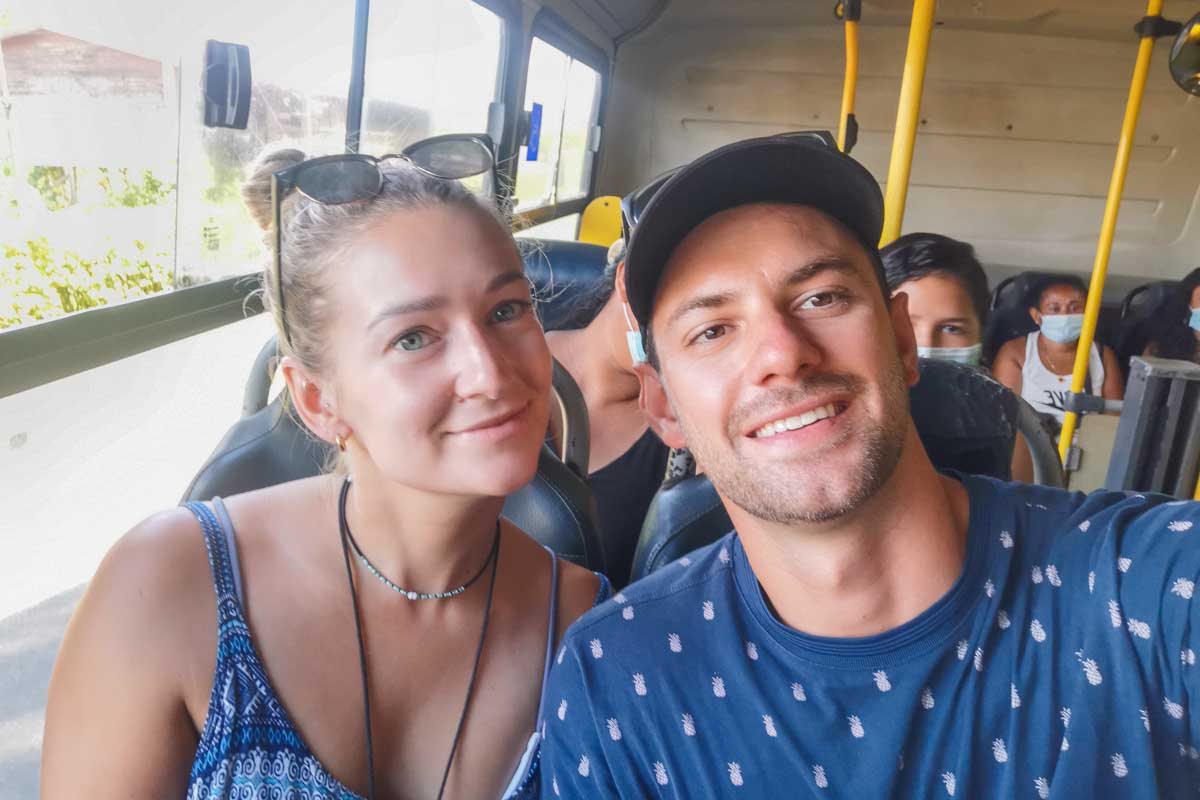
No, it’s not.
Public transport is okay to use on shorter routes in touristy areas, but it’s a lot more difficult for longer routes and in remote places. For example, it’s really hard to travel the Nicoya Peninsula using public buses and it takes SO much time.
We really don’t think that using public transport is worth the time that it takes away from your holiday, especially if you’re only here for a short trip. There’s so much to see and explore in Costa Rica , and you’re much better off using your time to experience all of the country’s natural wonders rather than waiting for a bus!
10. What is cheaper, taking shuttles or a rental car in Costa Rica?
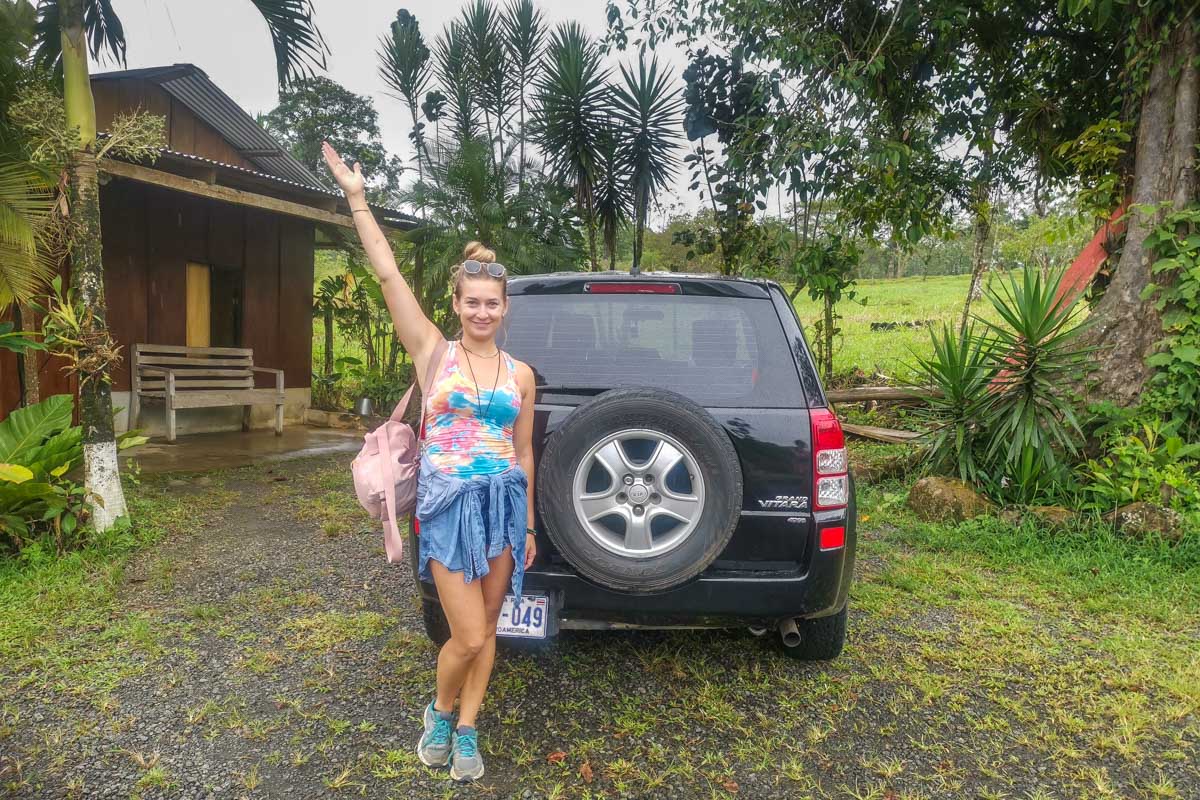
It depends on your trip.
A rental car in Costa Rica can cost less than $80 USD per day including full coverage insurance. Meanwhile, shuttles usually cost $45 USD to $60 USD per person, although prices depend on your route and do vary a bit between companies.
If you’re staying in one place in Costa Rica , then a shuttle will probably be cheaper. You can take a shuttle to and from the airport, and then make short journeys using public transport or taxis. (Just remember, public transport should only be used for short journeys!).
If you’re traveling solo around Costa Rica, a shuttle will still be cheaper. If you’re traveling as a couple, it probably works out about the same once you factor the cost of gasoline into the equation. Plus, we think that the added convenience of shuttles makes it a good option for couples.
However, if you’re traveling around Costa Rica as a group of three or more, renting a car is the more wallet-friendly option. If you’re traveling with a group of three, you’ll be spending $100 to $150 USD per trip, so you’re better off renting a car. And when you’re traveling in a group of four or five, driving becomes even cheaper.
11. Is taking shuttles in Costa Rica worth it?
Yes, we loved traveling around Costa Rica by shuttle. It’s convenient and very low-stress, so we would definitely recommend it. It’s also very affordable if you book online with places like Bookaway or Viator , particularly for solo travelers and couples, and it’s one of the safest ways to get around.
Related Read: If you’re traveling on a budget, there are lots of free and cheap things to do in Jaco , Santa Teresa , La Fortuna , and Tamarindo !
Thanks for reading!

Hopefully, this guide on taking shuttles in Costa Rica has helped as you plan your trip! Personally, we love spending as much time as we can exploring and not stuck on public transit or lost on backroads, so shuttles really come in handy – especially if it’s your first time in Costa Rica!
I’m so excited you’re heading to Costa Rica soon! If you need any more help, drop us a comment below, or have a look at our other blogs including some popular ones below.
BEST all-Inclusive resorts in Costa Rica (our unbiased opinion!)
Where to see sloths in Costa Rica + Facts and tips!
MUST-VISIT volcanoes in Costa Rica

Getting Around Costa Rica – Fly, Bus, Shuttle or Rental Car
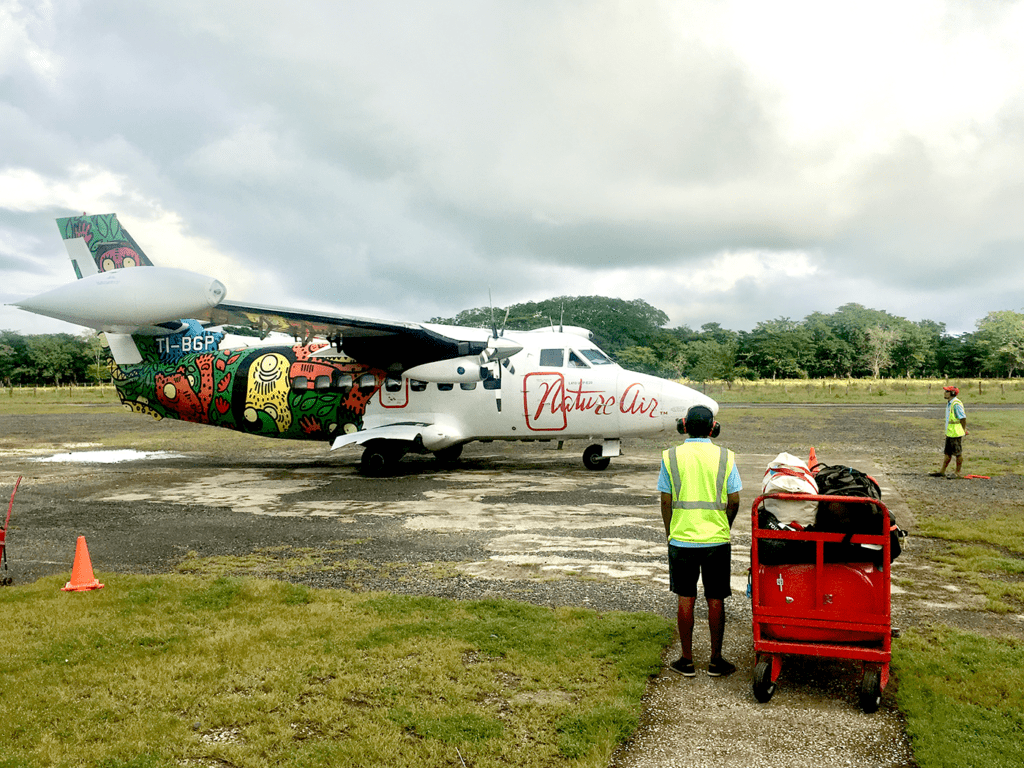
When it comes to getting around Costa Rica, you have questions: How can you travel? Or rather, how should you travel? What’s the fastest, or the cheapest, or the easiest method of travel? Is there anyone one “best” way to navigate Costa Rica?
The short answer: No. It all depends on your travel style, your budget, and your time. Read on to discover the pros and cons of the various methods of travel (rental car, private driver, shared shuttle, puddle jumper airplane, and public bus) throughout Costa Rica:
Getting Around Costa Rica by Renting a Car
For independent travelers and the adventurous, rental cars are, hands-down, THE go-to transportation in Costa Rica. Note that flying into the Liberia airport (LIR) and renting a car from there is a great option since there’s very little traffic (in contrast to San Jose ) and you’re only a short drive to beach destinations like Tamarindo , Samara , Nosara and Santa Teresa .
- Rental cars are one of the least expensive transportation options, usually coming in somewhere around $50-$75/day for a mid-sized vehicle.
- The country’s main highways (for example, between San José and Manuel Antonio) are generally easy to navigate and have few potholes.
- A rental car gives you the freedom to really explore — to make stops at random roadside restaurants (or just bathroom breaks), to meander down a dirt road, and to break at interesting shops and scenic viewpoints.
- Waze is excellent in Costa Rica. (Google Maps is also decent.) Be sure to have an international data plan, or to pick up a local SIM card with data (inexpensive, but you’ll need an unlocked cell phone), so you can load the maps.
- Beware that online rates, both for big sites (e.g. Travelocity) and individual rental car companies, are not all-inclusive and, despite what your credit card offers, you must pay a mandatory liability coverage, which adds $20-$25/day to the rental rate. (In other words, if you book @ $25/day online, you’ll end up paying at least $45/day, even if your credit card offers certain coverage.)
- While highways offer decent driving, most secondary roads suffer from infrastructure woes, including excessive potholes, very narrow streets, huge ditches, and other pitfalls.
- Traffic can be an absolute nightmare.
- If you get motion sickness easily, driving Costa Rica’s sharp turns and navigating obstacles can cause queasiness.
Bottom Line : For confident drivers, rental cars offer the greatest freedom to explore, but these ain’t your grandma’s roads.
Getting Around Costa Rica by Private Drivers
Hiring a private driver (with vehicle included) is a very popular option in Costa Rica. Hands down, it’s the easiest, most convenient option of all. That said, the cost can be a pro or con, depending on how you look at it: Private drivers aren’t cheap (think: $130-$300 per trip, or $175 per day for your whole trip), but that price includes a vehicle and driver. And if you have a large group (and would, therefore, need two rental cars), the cost of a private driver (with a large van) is even more affordable.
- Your driver will be ready and waiting to meet you at the airport; you won’t have to collect a rental car, or wait for a shuttle, or
- You can enjoy the freedom of a rental car — stop where you want, when you want, and according to your own schedule — without having to actually drive Costa Rica’s roads.
- Sit back and relax — you won’t have to worry about traffic jams, unmarked detours, landslides, and other common road problems.
- Many drivers speak English and act as informal tour guides, pointing out the best lookout points, sights and shops along the route.
- Unless you’ve hired a driver for the duration of your trip, once you arrive at your destination, you’ll have to rely on taxis/golf carts/bicycles/your own two feet to get you around.
- A private driver doesn’t come cheap.
Bottom Line : If you like the idea of rental car freedom, but not the actual task of navigating Costa Rica’s roads, hiring a private driver offers the best of both worlds.
Getting Around Costa Rica by Shared Shuttles
Shared or semi-private shuttle buses (e.g. Interbus and Gray Line ) are a popular, prolific and efficient choice in Costa Rica. They’re usually large, comfortable vans (15-20+ passengers) with air-conditioning, and offer shared pickup points (e.g. popular hotels) from most major tourist destinations to most other major tourist destinations.
- At $40-$55 per person, per ride, shared shuttles can be a good deal for a couple or family of 3.
- Shared shuttles offer more convenient pickups/dropoffs than the public bus, and drivers usually speak English.
- Vans are in good condition, with cold air-conditioning.
- Bathroom and food breaks happen often enough and last long enough.
- You can book a private or semi-private shuttle from almost any hotel to any hotel in Costa Rica.
- For groups of 4+, private drivers are usually less expensive (and more convenient) than a shared shuttle.
- Luggage space is limited, so you may be restricted to only one or two bags. Ask in advance!
- Once you arrive at your destination, you’ll have to rely on taxis/golf carts/bicycles/your own two feet to get you around.
Bottom Line : For small groups (up to 3 travelers), shared shuttles offer a good trade-off between cost and convenience.
Getting Around Costa Rica with Local Flights
Local airlines Nature Air and Sansa connect most major tourist destinations and offer daily flights in small planes (6-15 passengers each).
- Flights are fast and plentiful, and flying from one corner of the country to the other can easily save you a full day of travel.
- NatureAir (a carbon-neutral airline, by the way) is usually a bit less expensive than Sansa. Buy well in advance, and rates are even more reasonable. Examples: San Jose to Arenal : 20 minutes (vs. 2 hours, 30 min. driving) and $79-$109 per way; Arenal to Manuel Antonio : 25 minutes (vs. 4 hours, 30 minutes driving) and $94-$144 per way; San Jose to Nosara : 50 minutes (vs. 4 hours, 30 minutes driving) and $94-$149 per way.
- If you get airsick, bumpy puddle jumpers are not your friend.
- Lower-cost fares come with serious luggage restrictions (lowest = 15 lbs, TOTAL luggage).
- If you fly Nature Air, you’ll have to arrive early to pass through airport security at SJO and LIR. (Sansa is located outside the main airport.)
- You’ll have to arrange in advance for transportation from the airport to your hotel, as some of the smaller airports don’t have taxis waiting around.
Bottom Line : If time is of the essence, flying will shave hours off long and bumpy drives.
Getting Around Costa Rica by Taking the Bus
Costa Rica’s public bus system is extensive and well traveled. If you have patience, some Spanish, and travel smarts, the bus is cheap, semi-convenient, and even fun.
- Public buses are, by far, your cheapest option, even compared to shared shuttles (which cost $40-$50 each, per person). Examples (prices approximate, based on $1 = ¢560): San Jose to Jacó , $4; San José to Manuel Antonio , $7.25; San José to Nosara , $8.20.
- Buses are comfortable but not luxurious. For long-distance travel, seats are typically cushy and upholstered. Most buses do not have air conditioning, so, grab a window seat.
- The public bus goes almost everywhere, although certain routes will require several buses. The Bus Schedule does a decent job of getting you from Point A to Point B, but always call to confirm schedules, bus stops, and other details with the individual bus company, and information changes quickly.
- Buses don’t have air conditioning, so they tend to heat up, especially in the rainy season (May-Nov), when Costa Ricans close all the windows.
- Public buses fill up. And we do mean, FILL UP. By the time you board, it may be standing room only, even on long trips.
- Routes can be circuitous and make a lot of stops, so travel time is slow. For example, a shared shuttle takes ~2.5 hours from San José to Monteverde, while the public bus ride lasts ~4.5 hours.
- Bathroom/food breaks can be few and far between. Don’t drink too much!
- If you’re not departing/returning to San Jose or Liberia, you’ll almost certainly have to take multiple buses. For example, there’s no public bus from Monteverde to Manuel Antonio; you’ll have to pass through San José (and go way out of your way) first.
Bottom Line : If you have more time than money, public buses are the way to go. But, if you’re here for only 7-10 days, you’ll want to make the most of your time with other methods of transportation.
Subscribe to get more tips and info.
Related Posts

Do You Need a Costa Rica Travel Agent? 5 Pros and 2 Cons

Best Surf Spots on Pacific North Coast of Costa Rica
FREE Costa Rica Travel Guide
Get this free Costa Rica travel guide PDF when you subscribe to our newsletter.
We'll never share your email. Unsubscribe any time.
Get this free Costa Rica travel guide PDF when you subscribe to our newsletter

Disclaimer: This article may contain affiliate links. Clicking on them may earn Costa Rica Vibes a commission, at no extra cost to you. Thank you for your support!
5 Ways to Get from San Jose to Puerto Viejo, Costa Rica

Are you looking for the best ways to get from San Jose, Costa Rica to Puerto Viejo?
San José, the capital city of Costa Rica, is home to the main international airport. Puerto Viejo, located on the Caribbean coast, is a vibrant town known for its stunning beaches, rich Afro-Caribbean culture, and lush rainforests.
The journey from San Jose to Puerto Viejo is always an adventure, and I don’t necessarily mean that in a negative way. You’ll get a blend of landscapes to see along the journey from urban landscapes, misty mountains, banana and pineapple plantations, and coastal views.
To get between these two locations, there are multiple transportation options, including rental cars, private shuttles, public buses, shared shuttles, and domestic flights. Each option has its pros and cons and is best suited for different types of travelers.
We live in San Jose and frequently travel to Puerto Viejo to enjoy the Caribbean coastal charm. This guide is based on all of our experiences throughout the years.
You’ll find detailed information on the best transportation options based on your needs, what to expect when driving, our recommendations for shuttles, and interesting places to stop along the way.
Let’s get started!
San Jose to Puerto Viejo at a Glance
- 🚗 Rent a car and drive yourself: The drive takes about 4 to 5 hours. Book Your Car Here
- 🚐 Take a private shuttle: Ideal for larger groups or those who prefer a stress-free journey. Get a Price Quote
- 🚌 Take a shared shuttle: A cost-effective way to travel with other passengers. Shared Shuttle Options
- 🚏 Take a public bus to Puerto Viejo: The most budget-friendly option. Check Bus Options
- ✈️ Take a domestic flight to Limon, then a shuttle or taxi to Puerto Viejo: A quick and scenic option. Check Flight Options

Where is San Jose?
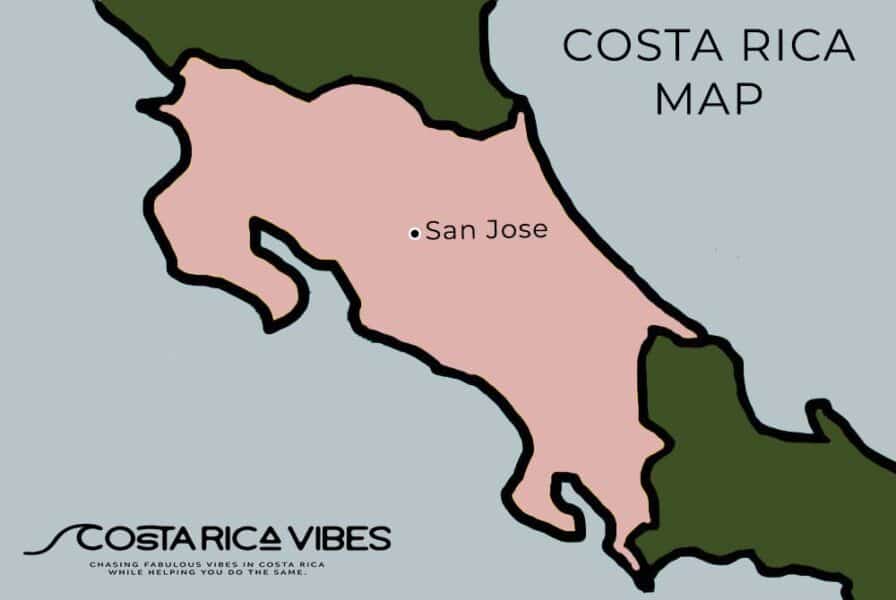
San Jose is the capital city of Costa Rica. It is centrally located in what is known as the Central Valley region.
The Juan Santamaria International Airport (SJO) is the largest in Costa Rica. It is located just west of San Jose next to the city of Alahuela .
After a long flight, we suggest that you consider spending the night near the airport and heading to Puerto Viejo in the morning.
This mostly applies if you are renting a car and driving yourself.
Traffic around the airport can be heavy, and downtown San Jose is about 30 minutes to an hour away depending on traffic.
Stay in Downtown San Jose or Near Airport?
- If you are renting a car we suggest spending your first night near the airport in the city of Alajuela.
- If you are taking a domestic flight, spend the night near airport.
- If you are taking a private shuttle, spend the night near the airport.
- If you are taking the public bus to Puerto Viejo, spend the night in downtown San Jose (the bus terminal is in the downtown area)
- If you are taking a shared shuttle, it is best to stay downtown because they only pick up from a selected list of places.
Hotels near SJO Airport:
- High-End Hotel: AC Hotel by Marriott Heredia Belen
- Mid-Range Hotel : Casa Garitas
- Budget-Friendly Hotel : Lajuela B&B
If you’re eager to get to the beach, Puerto Viejo is about a five-hour drive from San Jose.
We don’t recommend driving after dark (the sun sets around 6 PM), especially for the first half of the drive. This part of the drive is very congested with city traffic (especially during rush hour) and then you will be entering an area that is notoriously foggy. It can be very difficult to see in the evening.
At the latest, I suggest departing by 2pm. The very end of your drive night be in the dark, but the coastal road from Limon to Puerto Viejo is pretty easy to navigate.
- San Jose International Airport Arrivals and Departures Guide
- Costa Rica Entry Guide: Visas, Vaccines etc.
- The Best Hotels Near the San Jose International Airport
- Ground Transportation Options from the Airport
Where is Puerto Viejo?
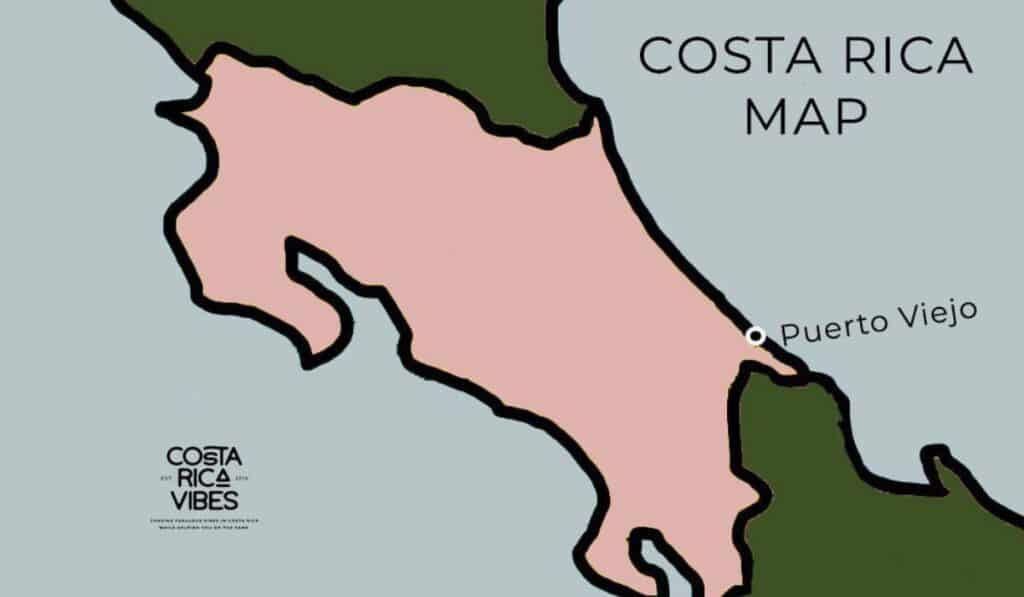
Puerto Viejo is a lively beach town located on the Caribbean coast of Costa Rica, approximately 135 miles east of San Jose.
Puerto Viejo is famous for its laid-back vibe, stunning beaches, and rich Afro-Caribbean culture. The area offers plenty of activities, from surfing and snorkeling to wildlife spotting in the two nearby national parks.
It’s a great place to visit all year round, but we especially suggest coming here between July and November. The Pacific Coast of the country will be experiencing heavy rain, but Puerto Viejo should be almost rain free and sunny!
- Complete Guide to Visiting Puerto Viejo
- The 6 Best Beaches Near Puerto Viejo
Option #1: Renting a Car
Renting a car is the best option for travelers who want flexibility and the ability to explore at their own pace.
The drive from San Jose to Puerto Viejo takes you through some of the most scenic parts of Costa Rica, including lush rainforests and coastal views.
Why Rent a Car?
- Flexibility: You can start your journey whenever you’re ready and make as many stops as you like along the way.
- Independence: Explore the surrounding areas of Puerto Viejo, including Cahuita National Park, Gandoca-Manzanillo Wildlife Refuge, and lesser-known beaches.
- Comfort: Travel in the comfort of your own vehicle, with control over the environment, stops, and pace.
We suggest renting a car if you are:
- Independent Travelers: Enjoy exploring at your own pace and making spontaneous stops.
- Families: With children who may need frequent breaks or those traveling with a lot of luggage.
- Adventure Seekers: Interested in exploring off-the-beaten-path locations, such as remote beaches and jungle trails.
- Groups: Sharing the cost of the rental makes it more economical.
- Onward Travel: Planning to visit multiple destinations after Puerto Viejo, such as Tortuguero or Arenal.
We don’t suggest renting a car if you are:
- Budget Travelers: Car rental might not fit a tight budget.
- Short-Term Visitors: If you’re staying for a short time, consider a domestic flight to Limon.
- Solo Travelers: Car rental costs can be too high for solo travelers.
- Nervous Drivers: Driving in Costa Rica can be challenging, especially on unfamiliar roads.
- Staying in a Resort: If you plan to stay within the resort, a car may not be necessary.
Recommendations on Best Car Rental Agencies
We recommend Adobe Rent-a-Car for all your car rentals in Costa Rica.
They are a reliable local company with excellent customer service and well-maintained vehicles.
Plus, we’ve partnered with them to offer a 10% exclusive discount for Costa Rica Vibes readers, along with other perks such as a free second driver and 0% deductible on liability insurance.

Adobe Rent-a-Car
- 10% discount for Costa Rica Vibes readers
- Free second driver
- 0% deductible on Liability Protection Insurance
- Excellent customer service
- New fleet of well-maintained vehicles
Picking Up Your Rental Car
- At the Airport: When you land at the San Jose Airort, you’ll exit the airport and see an Adobe employee holding an Adobe sign. They will take you on a comfortable shuttle to their office across the street. From there, you can pick up your vehicle and be on your way!
- Downtown San Jose: Adobe also has an office in downtown San Jose if you prefer to stay in the city before heading out.
Which Car to Rent
If you are just going between San Jose and Puerto Viejo you will be fine with any SUV. You would probably even be fine in a sedan, but an SUV will definitely be more comfortable for the clearance level.
You typically do not need a 4×4 in this area. However, if you plan on really getting off the beaten path once in Puerto Viejo you might want one. There are some remote jungle roads that are not paved.
Travel Tip : Before booking your car it is a good idea to ask at your hotel in Puerto Viejo if you will need a 4×4 to get to the hotel. Some places are located on steep side roads.
Things to Note :
- Adobe offers free delivery within 12 miles of any of their offices. That means you can always opt to take a hotel shuttle to your hotel for the first night and have Adobe deliver your car to you in the morning.
- Adobe has offices throughout the country including one in Puerto Viejo. That means you can always pick up a car at the airport or in downtown San Jose and return it in Puerto Viejo.
- Alternatively, you could always take a different transportation option to Puerto Viejo if you feel overwhelmed by the drive. Then, you can rent a car for a few days once in Puerto Viejo to explore. Again, Adobe will deliver your car to you for free within 12 miles of their office, so they can bring the rental car straight to your hotel in Puerto Viejo.
- You can not bring rental cars across the border into Panama. If that is your next stop after Puerto Viejo, you will need to return your car at the Puerto Viejo office. Check out our border crossing guide for all the info on that.
🚘 Check Availability and Book Your Rental Car with 10% Discount 🚗
The Driving Route
- The most common route is via Route 32 through Braulio Carrillo National Park. This is the most direct and fastest way, taking about 4 to 5 hours. Keep in mind this has also taken us up to 7 hours when there has been road work.
- Travel Tip: If Google Maps tells you to take Route 10 through Turrialba, try to find more info before beginning your drive. This route is sometimes best if Route 32 is closed, but it will be the adventure of a lifetime and we strongly suggest avoiding it if at all possible.
- The drive starts with urban scenery as you leave San José. Be careful in this part of the drive because you will have to drive down city streets. From the airport, there isn’t a highway to bypass the city.
- After getting out of the city the drive will transition into mountainous terrain on Route 32 with lush rainforests. Keep in mind there is one toll just after you exit the city along with the one driving tunnel I know of in the country.
- You will then drive through Braulio Carrillo National Park . You might encounter fog and rain in this area, so drive carefully . This is a highway but it is very curvy in spots. It switches between one lane in each direction to two lanes throughout. Be very careful when passing when it becomes two lanes, the signs that the road is going back to one lane in each direction can come at the last minute.
- Expect heavy truck traffic on Route 32, especially during peak hours. The road is mostly two lanes, and there can be slow-moving vehicles. Plus, it seems like there is constant roadwork here.
- After descending from the mountains, you’ll pass through small towns with banana and pineapple plantations on the way to Limón. Traffic can get backed up with 18-wheeler trucks filed with fruit heading to the port in Limón.
- From Limón, you will turn right and follow Route 36 south along the Caribbean coast to Puerto Viejo. This part of the drive is straight and offers occasional glimpses of the coast . It’s an overly pleasant stretch of the drive that you should feel very comfortable driving.
Click here for the complete route on Google Maps
Driving Tips
- Use Waze : Waze is the best free app for driving directions in Costa Rica. It’s widely used by locals and provides real-time traffic updates, road conditions, and the best routes. Note: You might lose cell phone service will driving through Braulio Carillo National Park. It is a good idea to download offline maps.
- Need info on staying connected while in Costa Rica? Find out our SIM card suggestions here .
- Make sure your phone is fully charged and bring a backup cell phone power bank if possible. There is nothing worse than having your phone die in a foreign country and having no idea where to go.
- Addresses: I know it sounds crazy, but there are no addresses in Costa Rica.
- Instead, you will need to put in the name of the place you are intending to go to in your GPS. For example, you might enter your hotel name, an Airbnb name, a beach name, etc.
- Fuel Up : Make sure to start your journey with a full tank of gas. There are plenty of gas stations along Route 32, but it’s always good to be prepared.
- Don’t Drive at Night : The sun sets around 6 PM year round. We suggest starting your trip at 2PM at the latest. You should not drive the first half of the route in the dark. To start, you will hit rush hour in San Jose which can be madness. And then, the fog in the Braulio Carillo stretch of the drive can be really bad. It’s just not safe.
- Keep Your Passports Up Front : There is a police checkpoint about 15 miles before Puerto Viejo. You will likely have to stop and show your passport. This is just to prevent people from illegally traveling between Costa Rica and Panama.
- Don’t Leave Your Car Unattended : If you stop along the way we suggest choosing restaurants with views of the parking lot or places you feel very secure. Petty theft, such as breaking into cars, is the most common crime in Costa Rica.
Recommended Stops Along the Way
- Braulio Carrillo National Park : About 1.5 hours into your drive, you will pass through Braulio Carrillo National Park. It’s possible to stop and enjoy a short hike in the park. Get more info with our Braulio Carillo National Park guide.
- Banana and Pineapple Farms: I don’t know of any farms that you can actually explore, but you will certainly pass several banana and pineapple plantations on your drive. If you find a safe spot, pull over and catch a glimpse of where the bananas and pineapples you buy at your grocery store likely come from.
Restaurants Along the Way
If you need a meal, here are restaurant suggestions in order of which you will pass first from San Jose.
Restaurant Pura Vida , Restaurante donde Ceci , Sol y Luna
If you would like fast food options, I suggest stopping when you get to the town of Guapiles. There is a Subway , McDonalds , and Burger King here. This is a little before the half way point of your drive.
If you need something small, your best bet is to buy snacks at a gas station.
Option #2: Private Shuttle to Puerto Viejo
A private shuttle is an excellent option if you want to travel in comfort and avoid the hassle of driving.
Private shuttles are typically air-conditioned vans driven by experienced local drivers who know the best routes.
Pros of a Private Shuttle:
- Private Transportation: You and your group have the shuttle to yourselves, making the journey more comfortable and personalized.
- Flexible Scheduling: You can schedule the shuttle based on your arrival time. The driver will typically meet you at the airport or your hotel.
- Custom Stops: Your driver can make stops along the way for sightseeing, meals, or bathroom breaks.
Cons of a Private Shuttle:
- Cost: Private shuttles can be expensive, especially for smaller groups. However, for families or larger groups, this option can be economical.
Book Your Private Shuttle:
We recommend Adobe Rent-a-Car’s private shuttle service . They offer reliable, comfortable shuttles and are happy to make stops along the way.
They can pick you up from anywhere in the country and deliver you straight to your hotel.
Check Availability and Book Your Private Shuttle
Option #3: Shared Shuttle to Puerto Viejo
Shared shuttles are a popular and cost-effective way to travel between San Jose and Puerto Viejo. These shuttles operate from the San Jose airport, nearby hotels, and downtown San Jose.
Pros of a Shared Shuttle:
- Cost-Effective: Shared shuttles are cheaper than private shuttles and offer a comfortable ride.
- Convenience: These shuttles have a hotel list, so they can pick you up directly from your hotel if it is on their list.
Cons of a Shared Shuttle:
- Less Flexibility: Departure times and routes are fixed, so you’ll need to plan around the shuttle’s schedule.
Our favorite website for finding shared shuttles in Costa Rica is called Bookaway. They curate a comprehensive list of all the best shuttle options.
From San Jose to Puerto Viejo we recommend the companies Interbus or My Pink Bus.
- Interbus departs twice daily at 7:00AM and 1:30PM. It typically costs about $60 for a one way trip. They have an extensive list of hotels they pick up and drop off from.
- My Pink Bus departs once daily at 7:30 AM. It typically costs about $50 for a one way trip. They also have an extensive list of hotels they pick up and drop off from.
Check All Shared Shuttle Options from San Jose to Puerto Viejo
Option #4: Public Bus to Puerto Viejo
Taking a public bus is the most economical way to get from San Jose to Puerto Viejo. This option is ideal for budget travelers who don’t mind a bit of adventure.
We have taken this bus several times and the journey can feel like it takes forever, but it actually isn’t too bad.
Bus Schedule and Booking
Buses to Puerto Viejo from the company MEPE depart from the Gran Terminal del Caribe in downtown San Jose.
The bus departs daily at: 6:00 AM, 8:00 AM, 10:00 AM, 2:00 PM, 4:00 PM, 6:00PM
The journey takes around 5 to 6 hours and costs about $12 per person.
Note: You will take the bus bound for Sixaola. It will stop in Limon, Cahuita, and then Puerto Viejo before going to the Panama border.
It is not possible to book your ticket online. Instead, you will need to buy it in person at the MEPE terminal.
Travel Tips:
- Safety: Keep an eye on your belongings, especially at the bus terminal and during stops. We recommend keeping your valuables on your person and placing larger luggage in the bus’s storage compartment. We have heard of people putting valuables above their seats, falling asleep, and waking up to their stuff stolen.
- Comfort: The buses are generally comfortable, but you never know. I was once on one of these buses and the AC was broken. The inside temperature was 96 F. It was miserable. On the other side, I’ve been on buses where they completely crank the AC. So, bring layers.
- Stops: The bus stops once for 10 minutes at the bus terminal in Limon. Here you can get some food and use the bathroom. Just note, you need to pay for the restrooms. They cost about 300 colones. This needs to be paid in cash.
- Taxis: Pirate taxis notoriously hang out at the MEPE terminal in San Jose. Only ever take official Costa Rican taxis. They will be red with yellow triangles on the doors and a green licence plate. Pirate taxi drivers will drastically overcharge you. Get more info in our guide to Costa Rican taxis.
Check Bus Schedule and Get More Info
Option #5: Domestic Flight to Limon and Shuttle to Puerto Viejo
If you prefer to travel quickly and enjoy scenic views, a domestic flight is an excellent option. From San Jose, you can fly to Limon and then take a shuttle or taxi to Puerto Viejo.
Booking a Flight
The main airline that flies between San Jose and Limon is Sansa. Prices vary depending on the season and how far in advance you book, typically ranging from $70 to $150 one-way.
Travel Time and Comfort
The flight to Limon takes about 30 minutes. From there, it’s approximately a 1.5-hour drive to Puerto Viejo.
The planes are small, usually seating around 12 passengers, offering stunning views of the coastline and mountains.
Recommendation: We don’t recommend this option if you’re afraid of small planes.
I think that in theory this is a faster way to travel, but when you consider that you will need to arrive at the domestic terminal at least an hour before your flight, I’m not sure if it is really worth the hassle.
Plus, a taxi from Limon to Puerto Viejo won’t be cheap. I would guess that this will cost at least $60.
However, if you are in it for the amazing aerial views then definitely go for it!
Book Your Domestic Flight Here
Our Opinion on Getting from San Jose to Puerto Viejo
Typically, we suggest renting a car for the journey from San Jose to Puerto Viejo. This option offers the most flexibility, allowing you to explore the beautiful surroundings at your own pace.
However, this drive can definitely be one of the more interesting drives in the country. I really hate driving through San Jose, and although this drive doesn’t take you directly through the city center, you will still need to go on some roads that can be very confusing and congested. Definitely keep that in mind.
There are for sure times when renting a car might not be ideal. Such as if you’re on a tight budget, staying at a resort, or nervous about driving in Costa Rica.
Pro Tip: You can also rent a car for just a few days to explore the area around Puerto Viejo. Adobe Rent-a-Car has an office in Puerto Viejo and can deliver the car to your hotel. Book your car here .
Conclusion: Getting to Puerto Viejo
In conclusion, there are multiple ways to get to Puerto Viejo depending on your particular needs. Whether you choose the flexibility of a rental car, the comfort of a private shuttle, the affordability of a public bus, or the speed of a domestic flight, each option has its pros and cons.
If you have any questions about planning your trip to Puerto Viejo, don’t hesitate to leave them in the comments section below. We’re always happy to help you plan!
You Might Also Like:
Driving in Costa Rica: What You Need to Know Before
Costa rica car rental: key tips for the best experience, costa rica shuttle: shared and private transportation info, car rental at san jose airport in costa rica: what to expect, costa rica car rental scam: what to watch out for.
Costa Rica Travel Details : What You Need to Know
🚗 Should I rent a car in Costa Rica?
Having a rental car will give you the most flexibility when traveling in Costa Rica. This will also allow you to take fun day trips on your own.
- Save 10% Plus Other Perks with Our Adobe Rental Car Discount
- You might also consider; shared shuttle services or private transfer services
🏄🏽 How can I book things to do?
We find that Viator tends to have the most comprehensive selection of activities with secure booking and good cancellation policies.
🍍 I’m overwhelmed with planning. Can you help?
Of course! I suggest joining our Facebook group for specific questions and head to our Start Here Page to get started planning.
✈️ What is the best way to book a flight?
Usually, we have the best luck finding great prices with Skyscanner . Check for flights to both San Jose Airport (SJO) and Liberia Airport (LIR).
🛏️ What is the best way to book my Costa Rica hotels?
We highly suggest Booking.com for hotel bookings and typically use VRBO for Costa Rica vacation rentals.
🗣️ What is the main language in Costa Rica?
The main language in Costa Rica is Spanish. Most people working in tourism speak at least some English.
💰 What is the currency in Costa Rica?
The currency used in Costa Rica is the Costa Rican colón (CRC). However, the US dollar is widely accepted in most tourist areas
📞 What is the best way to stay connected?
An eSIM from Airalo is the easiest way to get 4G data while traveling in Costa Rica.
🌴 Is Costa Rica safe?
Generally, Costa Rica is considered safe for tourists. However, like any travel destination, it’s best to use caution and be aware of your surroundings.
🛂 Do you need a passport to go to Costa Rica?
Yes, Costa Rica is its own country. You will need a passport to visit.

Hi! We’re Thomas (the German) and Sarah (the US-er)
We met in Virginia, moved to Germany, and since 2016 we have lived in sunny Costa Rica. It was a spontaneous decision to move here, but it was the best decision! Now we spend our days roaming the country to bring you the very best in Costa Rica travel here on Costa Rica Vibes. Sarah is the writer. Thomas is the one keeping it all together. Want the whole crazy story?

Sarah McArthur
Sarah McArthur is the co-founder and main writer of Costa Rica Vibes. She is originally from the United States but has lived in sunny San Jose, Costa Rica since 2016. She has traveled all over the country and now considers herself a self-proclaimed Costa Rica travel expert. Want the whole crazy story?
Costa Rica Experience
9 days | travel through the jungles and beaches of costa rica – a real natural paradise.

Discover a region of natural diversity, cultural riches and laidback vibes on a nine-day jungle jaunt through Costa Rica. Thanks to a longstanding tradition of preserving its natural assets, much of the country’s primary rainforest still stands. Opportunities for nature-based activities are endless here and the beaches on both coasts are well worth your free time. Kick back in the rustic beach town of Quepos, explore the steamy cloud forests of Monteverde and get to know the locals by lending a hand on a rural farmstay near Santa Rosa de Pocosol. Explore the depths of this colourful and vibrant country with plenty of time to make this trip your own.
Trip overview
- Try to spot the elusive resplendent quetzal when you’re exploring Monteverde’s steamy cloud forests. Better yet, why not consider a jungle zip-line to get high in the sky for the best views?
- Spend time wandering through the Mercado Municipal de Artesanias artisan stalls in San Jose – Costa Rica’s cultural heart. With plenty of time to stop for a refresco (smoothie), this is a good opportunity to people-watch.
- Lend a hand at a farmstay outside of Santa Rosa de Pocosol and learn some home-cooked recipes and techniques from the locals on a visit to the Juanilama agricultural community.
- Marvel at the size and stature of the Arenal Volcano on the horizon, maybe taking a soak and relaxing in La Fortuna’s lava-heated thermal springs.
- With plenty of time to chill out at your own pace, Quepos’ surf vibe is ideal for catching some waves, lazing on the white-sand beaches or hiking the lush trails of Manuel Antonio with your travel pals.
- Many of the activities (both included and optional) on this trip take place in the great outdoors. This means you'll need to be prepared to deal with insects and occasionally rustic conditions. It's all part of immersing yourself in this natural paradise.
- Costa Rica is generally hot and humid year-round, and from May to October can be wet too. At nighttime and in locations at higher elevations it can get chilly. Protect yourself from the sun, bring light clothing you can layer and a waterproof jacket, and stay hydrated. Please carefully consider which time of the year you'll feel most comfortable travelling.
- There are many opportunities to get active on this adventure. Some of the optional activities require a moderate level of fitness and sturdy walking shoes. If you'd prefer to take it easy, however, there are plenty of other things you can do instead.
- The homestay is a wonderful opportunity to witness everyday local life. A hearty homecooked dinner and breakfast will be served during your stay, which can be a lot more basic than what you're used to.
- With so much to see and do, Costa Rica can sometimes be expensive. Expect to pay more than you would in other Central American countries for a lot of things.
View the itinerary for departures between 01 January 2023 - 31 December 2024
Hola! Welcome to Costa Rica. Your adventure begins with a welcome meeting at 6 pm today in San Jose. With over half the country's population living within its parameters, San Jose is a dynamic atmosphere. If you arrive early, why not wander around at your own pace – a good place to start exploring is the main plaza, perfect for some people watching. Tonight, maybe head out to get to know your group with an optional welcome dinner.
- Hotel (1 night)
There are no meals included on this day.
- San Jose - Pre-Colombian Gold Museum (Entrance fee) - USD17
- San Jose - National Museum (entrance fee) - USD12
It’s very important that you attend the welcome meeting as we will be collecting insurance details and next of kin information at this time. If you are going to be late please let your travel agent or hotel reception know. Ask reception or look for a note in the lobby for more information on where the meeting will take place.
Travel by private vehicle to Santa Rosa de Pocosol today, where you’ll spend the night in a homestay. Just down the road is the Juanilama agricultural community, where you can get to know the locals, help with farm chores, and take an informal cooking lesson. Several villagers have built comfortable rooms for guests next to their homes, and you’ll stay in one of them this evening. Please note that these rooms use shared facilities. In order to make the most of this homestay experience, it may take a bit of effort from your side to break the ice first. Learn as many Spanish words as you can before you arrive!
- Homestay (1 night)
- Santa Rosa de Pocosol - Home-cooked Meal
- Santa Rosa de Pocosol - Homestay experience
- Leader-led Informal Spanish Lesson
- Santa Rosa de Pocosol - Soap-making workshop - USD20
- Santa Rosa de Pocosol - Waterfall hike - USD11
Your travel time today will be approximately 4 hours.
Today, continue to La Fortuna – a small town situated just a few minutes away from Costa Rica's famous Arenal Volcano. Besides its panoramic views, the town offers a range of other activities such as the 70-m-high La Fortuna waterfall, stunning lush forest, rare plants, animal watching and water-based activities on the lake. The volcano’s inner workings also mean that the area has a number of thermal springs where lava-heated water gushes to the surface. These springs have been sculpted into several pools and waterfalls, making them the ideal place to relax. Spend the rest of the day as you please in this exciting town, maybe even testing your balance on a stand-up paddleboard.
- La Fortuna - Ecotermales Hot Springs (entrance fee) - USD49
- La Fortuna - La Fortuna Waterfall (Entrance only) - USD21
- La Fortuna - Arenal 1968 Volcano View and Lava Trails (Entrance fee) - USD26
Your travel time today will be approximately 2 hours.
Some of the above optional activity prices include an entrance fee only. Transportation will need to be paid in addition to the entrance fee and is subject to change depending on the number of participants.
Due to limited accommodation availability in La Fortuna, rooms will occasionally be on a multi-share basis (single gender).
Today, you’ll take the scenic route to Monteverde. Monteverde was founded as an agricultural community in 1951 by a group of North American Quakers – they cleared virgin forests to create verdant pastures ideal for dairy farming. These environmentally aware settlers were conscious of the danger that unrestricted settling and farming could cause to this precious habitat, so they established a small, privately owned wildlife sanctuary, which has grown to become the internationally renowned Monteverde Cloud Forest Biological Preserve. More than 2000 species of plants, 320 bird species and 100 different types of mammals call Montverde home. When you arrive, you can choose from a range of outdoor activities to wildlife spot, hike or cruise on the waters.
- Monteverde - Cloud Forest Entrance
- Monteverde - Cloud Forest Night Walk - USD45
Today is free for you to choose how you'd like to spend your time in this beautiful area. Maybe start your exploration with a tour of the suspension bridges that hang in the trees, or head to the Serpentarium to see some crawly critters. Watch butterflies at play in the specially created garden, hire a local guide to show you around the area, visit a community cooperative or zip-line through the lush canopy. Whatever you do, be sure to keep an eye out for the resplendent quetzal – one of the most elusive birds in the world.
- Monteverde - Butterfly Garden and Insects Farm (entrance fee) - USD22
- Monteverde - Coffee & Chocolate tour - USD47
- Monteverde - Canopy Zip Lining (Entrance, Equipment & Transport) - USD65
- Monteverde - Suspension bridges tour - USD58
Travel through the mountains to Quepos by private minibus. Located close to the beautiful Pacific beaches and exotic wildlife of Manuel Antonio National Park, Quepos is a laidback town with a vibrant nightlife. This afternoon, you'll get the chance to meet three generations of Costa Ricans and tuck into a traditional cooking class for lunch with them in their home. Prior to the pandemic, the family ran one of the most popular restaurants in Quepos for almost 20 years. Now, you're lucky to learn the secret flavours and spices of their traditional dishes and get to know the whole family. Once the sun goes down, why not grab a spot at a waterfront restaurant and sink your teeth into some fresh seafood with your travel crew – this is the life.
- Manuel Antonio - Cooking Class & Lunch
Your travel time today will be approximately 5 hours.
Spend your time enjoying all that Manuel Antonio National Park has to offer with a free day today. Perhaps head out for a hike along one of the many trails, keeping one eye on the great views and the other looking for the abundant wildlife. Monkeys, armadillos, sloths and hundreds of birds are among the species you can spot here. The park also boasts turquoise seas and white-sand beaches – perfect for swimming, kayaking, sailing and fishing. It would be easy to spend your whole time here in, or by, the water.
- Manuel Antonio National Park - (Entrance fee)
- Manuel Antonio National Park - Tour with a Naturalist Guide
- Manuel Antonio - Mangrove Kayak Activity (with lunch) - USD79
- Manuel Antonio – Cruise - USD100
Visitor numbers to Manuel Antonio have been reduced from 3000 per day to 1000. This means it is more difficult to secure entrance tickets for both tour groups and individual visitors. Over school holidays and peak travel season, it is especially difficult. We do our best to secure entrance tickets, but it is possible that on occasion demand will be too high. In these instances, we will include a visit to Carara National Park, home to a variety of animals including crocodiles, monkeys, and two-toed sloths.
Take a public bus back to San Jose today, arriving back in time for you to pick up some last-minute souvenirs at the city's colourful and vibrant markets. Then, head out for an optional dinner and a night on the town, getting a taste of the huge variety of nightlife on offer here.
With no further activities planned, your trip comes to an end after breakfast today. If you’d like to extend your stay, just speak to your booking agent ahead of time.
1 breakfast, 1 lunch, 1 dinner
Private vehicle, Boat, Public Transportation
Hotel (7 nights), Homestay (1 night)
Dates and availability
Important notes.
1. Full passport details are required at the time of booking in order to purchase entrance tickets to Manuel Antonio National Park. Delays to provide this information may result in changes to your itinerary and we will not be able to guarantee entry. Details provided must be accurate as per your passport bio page.
2. Your adventure begins with a welcome meeting at 6 pm on Day 1 in San Jose. There are no activities planned for the final day so you may depart at any time.
3. A single supplement is available if you’d prefer not to share a room on this trip. The single supplement applies to all nights on your trip and is subject to availability. Please speak to your booking agent for further information.
4. Please be careful when booking flights to/from San Jose; make sure you fly into/out of Juan Santamaria International Airport [SJO]. Please do not book flights to/from Norman Y. Mineta San Jose International Airport [SJC] as this is located in California, United States.
Want an in-depth insight into this trip? Essential Trip Information provides a detailed itinerary, visa info, how to get to your hotel, what's included - pretty much everything you need to know about this adventure and more.
Filter by rating

IMAGES
VIDEO
COMMENTS
If you would like to support this project, you can really make a difference. You can do it simply by using the following PayPal donation button: Find the best way to travel in Costa Rica using PUBLIC TRANSPORTATION. Find the schedule, cost of ticket, location of bus terminals and more!
Costa Rica's Bus Itinerary. There are different bus terminals in San José and in the main cities. In some cities you will find local bus terminals. In this document you will find the following information: ... Travel time and distance in kilometers. Service rate is not included, you should check with the bus company.
Costa Rica offers a range of public transportation options, including buses, shuttles, and domestic flights. Navigating the public transit system can be challenging, but there are helpful apps and resources available. Renting a vehicle, especially a 4WD, can provide more independence and access to off-the-beaten-path destinations.
Also, it is cheap to take the bus in Costa Rica. For example, intercity prices can range from 200-400 colones (less than $1 USD). Countrywide routes like San Jose to Tamarindo which is 258 kilometers (161 miles) costs 5,635 colones or around ~$10 USD per adult. That is cheap!
Costa Rica by Bus - the book. In 2011 John Wood wrote Costa Rica by Bus: The Insider's Guide to Budget Travel which included a comprehensive, current printed bus schedule but it has not been updated. Moovit. A crowd sourced map routing and scheduling app "Moovit: Your Local Transit App" became available for phones on Google Play or the ...
Riding the Bus. Last updated: Oct 27, 2023. Costa Rica has one of the best public transportation systems in Latin America, consisting almost exclusively of bus travel. Local city buses will take you almost anywhere within city limits, and intercity buses are inexpensive, comfortable and widely available. read more.
Stretch your budget by taking the bus. You can get (almost) anywhere in Costa Rica by bus, as long as you are not in a hurry. And it doesn't cost much: fares range from US$2 to $20, depending on the distance. The regional bus network is a great transportation option for budget travelers who have time to spare.
Costa Rica offers a diverse range of public transportation options, including an extensive bus system, scenic train routes, and efficient urban transit. Buses in Costa Rica are an affordable and reliable way to travel, with fares typically ranging from $1 to $10 USD for longer distances. Understanding the different bus types, routes, and ...
Bus travel options to, from and within Costa Rica. The Best Deals Save up to 70%. The Most Choices Millions of routes worldwide. ... We show you all available bus connections in Costa Rica with departure times, exact stops, all travel times and of course the best ticket prices. You will also find all information about the equipment on board. Do ...
Costa Rica's bus system is inexpensive and there are many bus routes with frequent busses. Direct busses with few stops are known as directo; normal or corriente busses have many stops along the way and take longer. Popular routes to tourist areas and larger towns such as Liberia, Limón, Jacó and San José have regular busses, sometimes ...
Flying around Costa Rica with Local Airlines. Taking a domestic flight is the quickest way to get around Costa Rica. What would take you 4-5 hours driving will take 30 minutes flying! There are a couple local airlines in Costa Rica. The biggest one is Sansa Air with the most flights.
The most cost effective way to travel from Tamarindo to your hotel on the beach in Santa Teresa, Costa Rica, is by tourist shuttle. The alternative is to catch a bus to Nicoya and another one to Puerto Carrilla and a taxi the remainder of the way. This will take more than 5 hours and will cost more than the shuttle service.
Written by Nikki Solano. Nikki is the CEO of Pura Vida! eh?Inc. (Costa Rica Discounts), and the author of the guidebooks Moon Costa Rica (2019, 2021, 2023, and 2025 editions) and Moon Best of Costa Rica (2022 edition) from Moon Travel Guides.Together with her Costa Rican husband, Ricky, she operates the Costa Rica Travel Blog, created the online community DIY Costa Rica, built the Costa Rica ...
Consult Costa Rica's official tourism board for a current bus schedule. Another option is Gray Line, which offers several morning departures from San José to prime sightseeing spots Manual ...
Costa Rica is quite literally a tropical paradise, with much for visitors to see and do. Although some people choose to rent a car during their vacation, many tourists opt to see the sights by bus. Not only is taking a tourist bus a great way for visitors to save a few bucks, it's also an ideal opportunity for travelers to get to know the real Costa Rica and meet the locals. Let's ...
Accurate comprehensive list of every current bus route in service in Costa Rica and the company that operates it. We download the data from the government licensing agency Autoridad Reguladora de los Servicios Públicos (ARESEP), filter out about 30,000 lines and 20 columns of regulatory crap to come up with the list of routes and operators. . This is the only reliable source (they use it for ...
Costa Rica's national bus company, Tica Bus runs daily services between San José and destinations across the Americas. Travel to or from Managua (11hr), Guatemala City (60hr, with overnights in Managua and El Salvador at your own expense) and Panama City (16hr).
By 599oliverh. Wonderful service and the best shuttle company, We had a wonderful time in La Fortuna and the shuttle was very useful... 3. Tracopa Ltda. 39. Bus Services. By Sashita_91. We took Tracopa twice, from San Jose - Manuel Antonio and Uvita - San Jose with my parents and husband.
Follow on Instagram. We are the leading and trusted resource for bus travel information for Costa Rica, Nicaragua and El Salvador. Tons of detailed information for bus schedules and stations in Central America, including travel tips, route advice, and lots of photos to show you the way. Travellers giving advice to travellers.
1. About shuttles in Costa Rica. A shuttle drops us off in Nosara, Costa Rica. Shuttles are small, white buses you'll see all over Costa Rica. If you've ever done a group tour in Costa Rica or elsewhere in the world, chances are you've traveled in this type of vehicle!
Getting Around Costa Rica by Taking the Bus. Costa Rica's public bus system is extensive and well traveled. If you have patience, some Spanish, and travel smarts, the bus is cheap, semi-convenient, and even fun. Pros: Public buses are, by far, your cheapest option, even compared to shared shuttles (which cost $40-$50 each, per person).
They are faster and more comfortable than the public bus, but are more expensive. Public Bus. Costa Rica has an expansive bus system and figuring it out can be a bit daunting at first. For shorter buses within San Jose and the central valley, fares are generally less than $1. You can see the main stops of the bus pasted to the front window of ...
Sloth Tour Rio Celeste. Review of: Rio Celeste Hiking, Sloth Sanctuary & Llanos de Cortes Waterfall Tour. Written September 4, 2024. This review is the subjective opinion of a Tripadvisor member and not of Tripadvisor LLC. Tripadvisor performs checks on reviews. Jet02616033988. 1 contribution.
Our guide covers five transportation options, including buses, shuttles, car rentals, domestic flights, and private transfers. There are 5 ways to get from San Jose to Puerto Viejo; rental car, shared shuttle, private shuttle, bus, or domestic flight. ... Costa Rica Travel Details: What You Need to Know. 🚗 Should I rent a car in Costa Rica?
Carara National Park is a national park in the Central Pacific Conservation Area located near the Pacific coast of Costa Rica. It was established on April 27, 1978 as a biological reserve, but its growing popularity after 1990 forced the government to upgrade its category to national park in November 1998.
Affordable travel packages and the experience of a lifetime. Book an Intrepid tour today. My Wishlist My Booking 1 800 970 7299 ... 9 Days | Travel through the jungles and beaches of Costa Rica - a real natural paradise 4.9 out of 5 based on 274 reviews submitted. Explorer Wildlife From. USD $1,416. Add to my wishlist. View dates and book ...
"Costa Rica has experienced a remarkable rise in tourism, reporting a 14.5% increase in visitors during the first half of 2024 compared to the same period in 2023." - Travel and World Tour